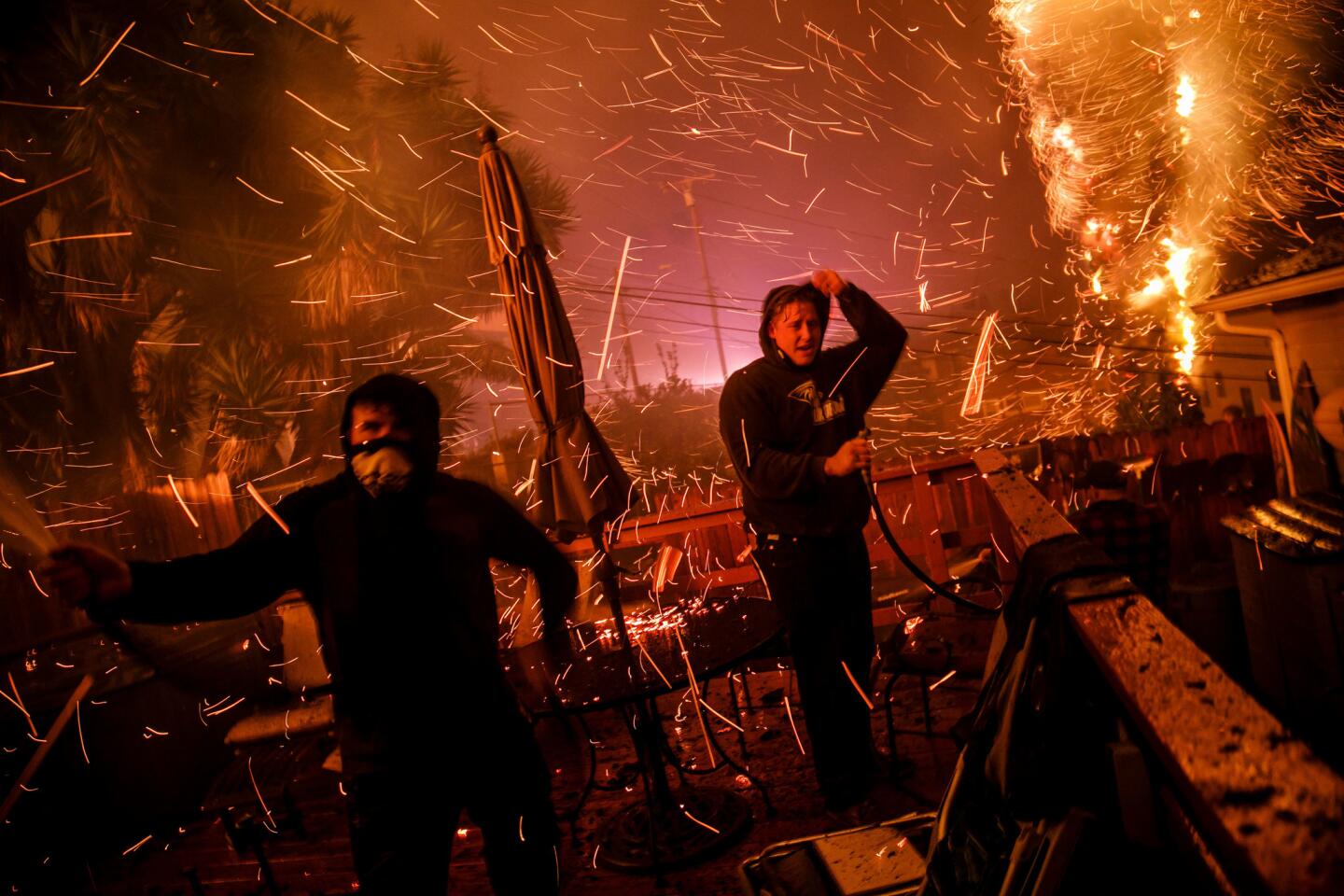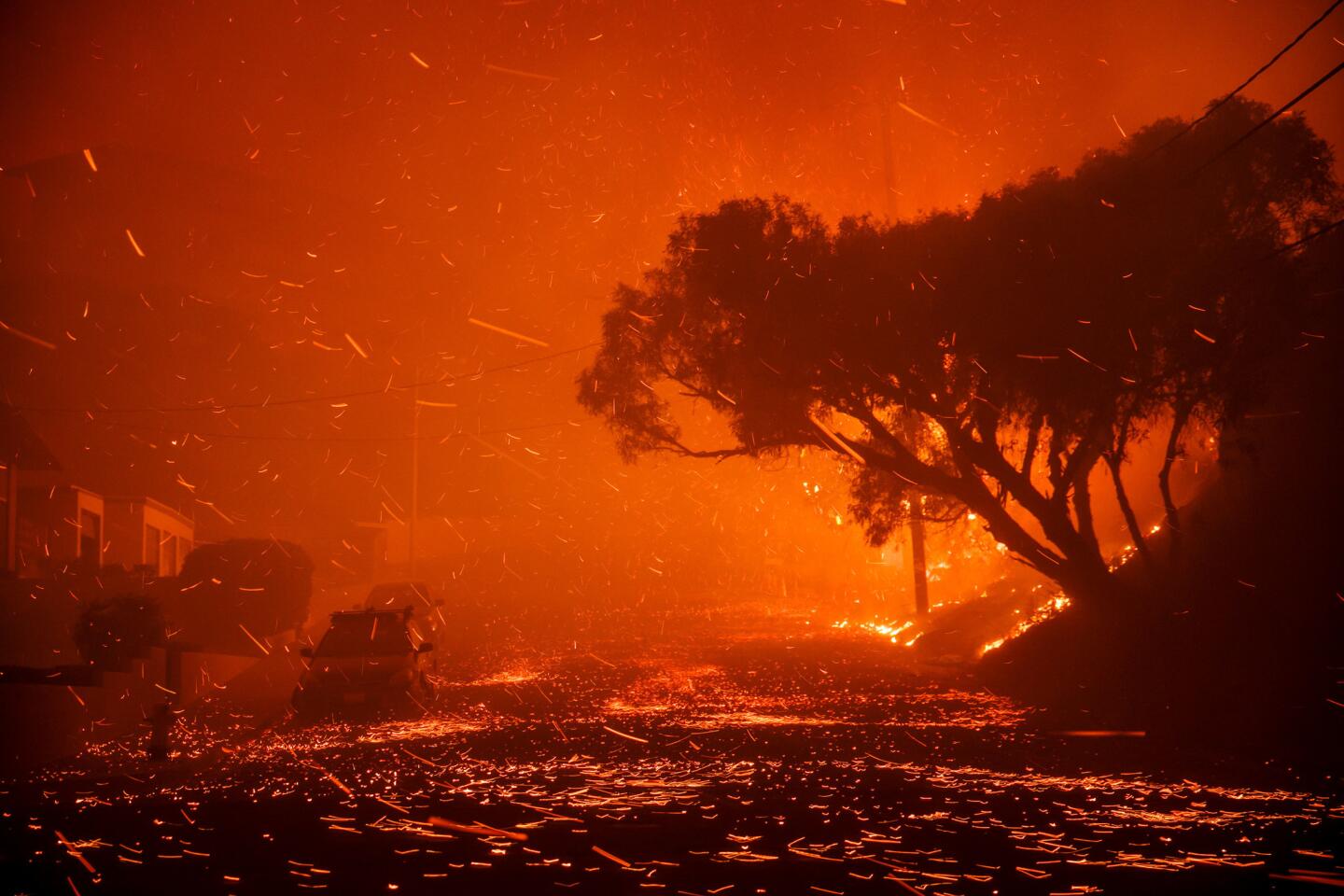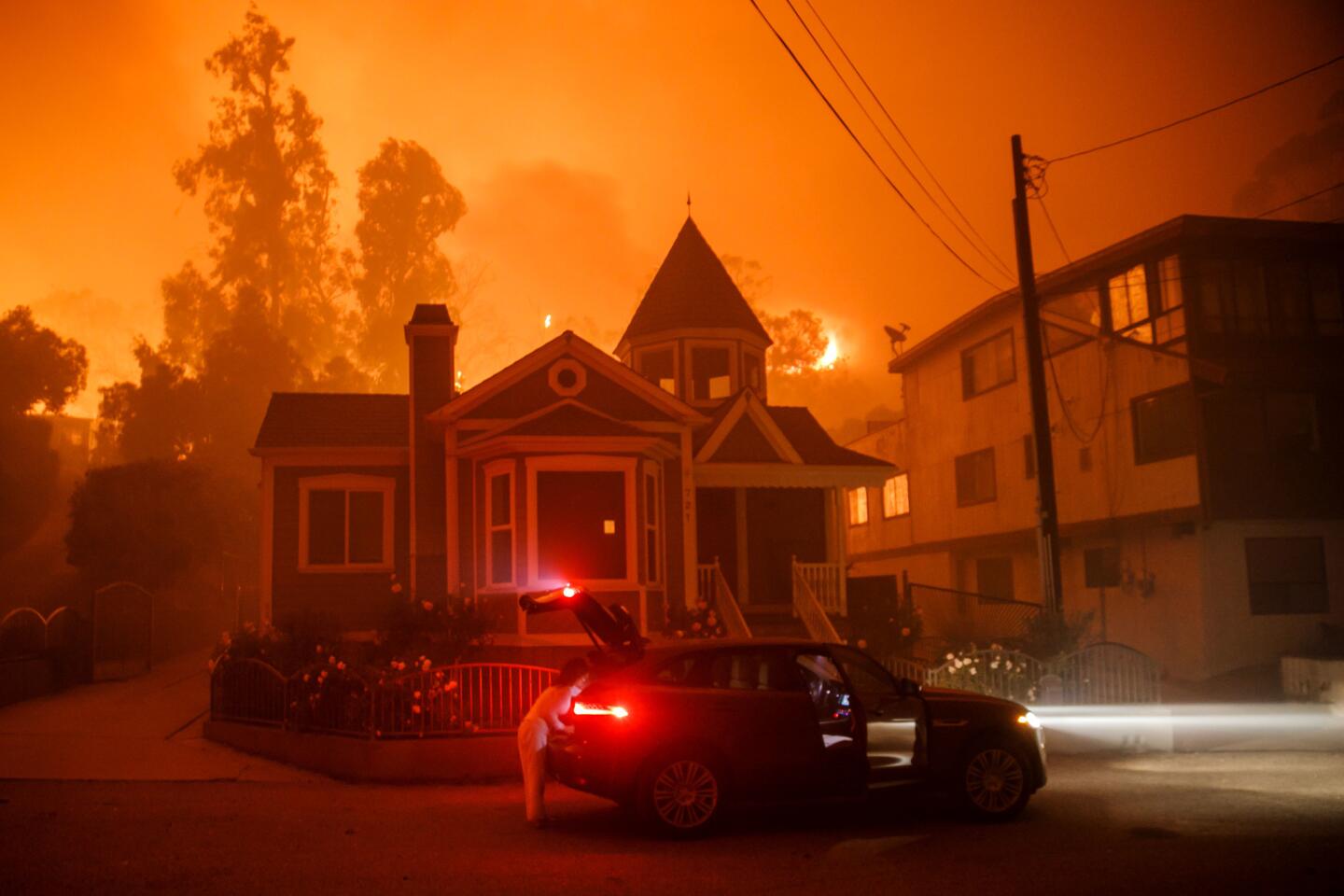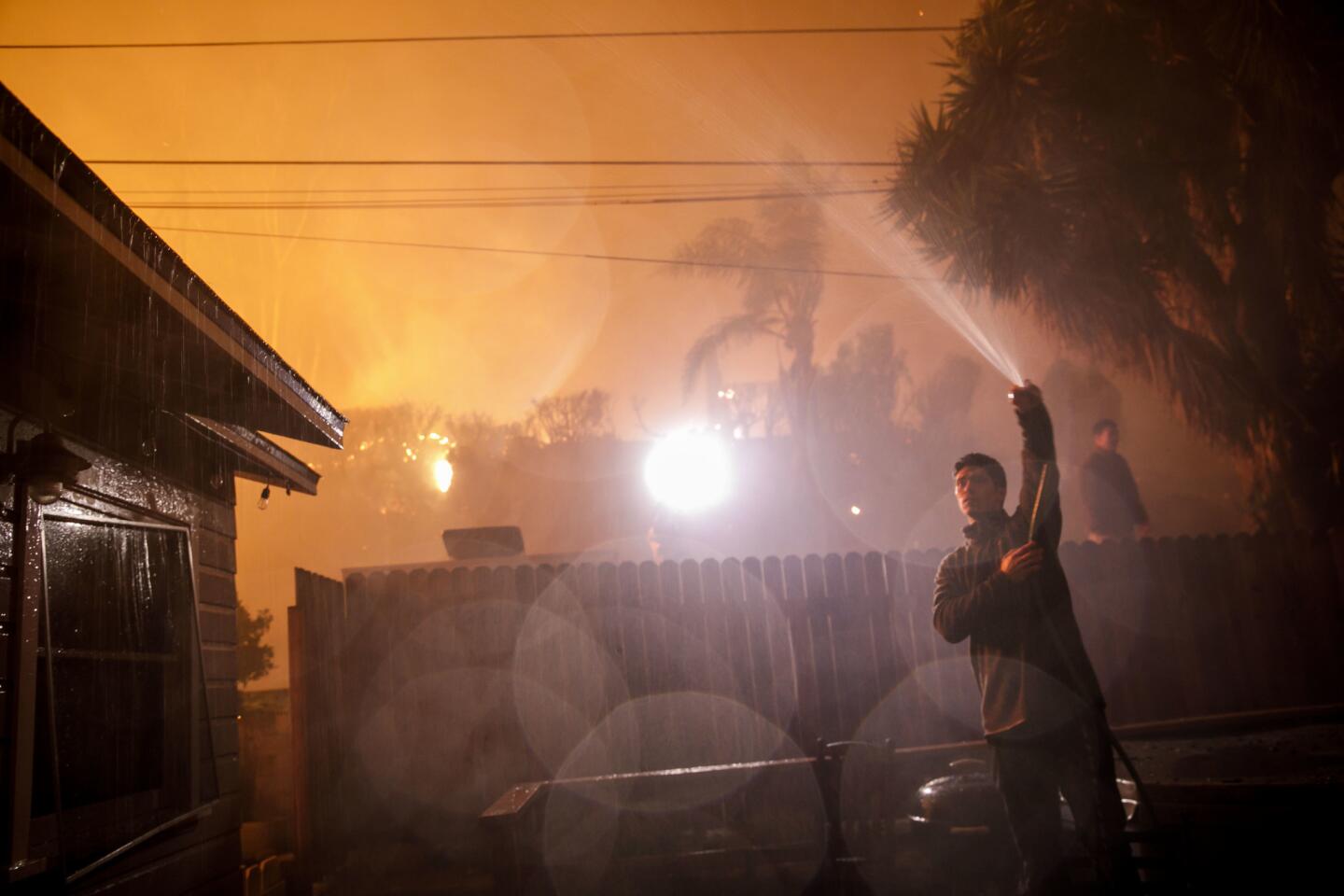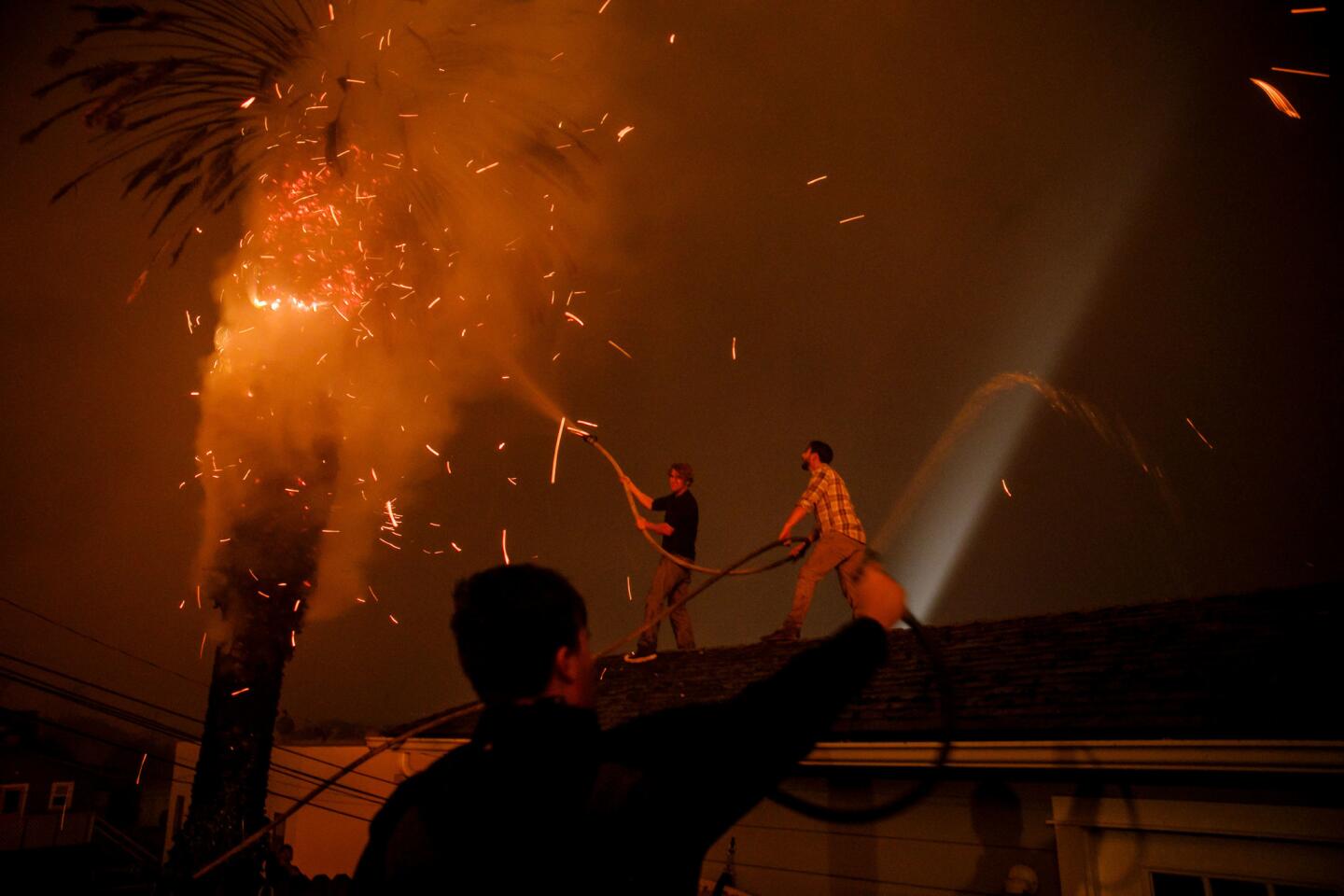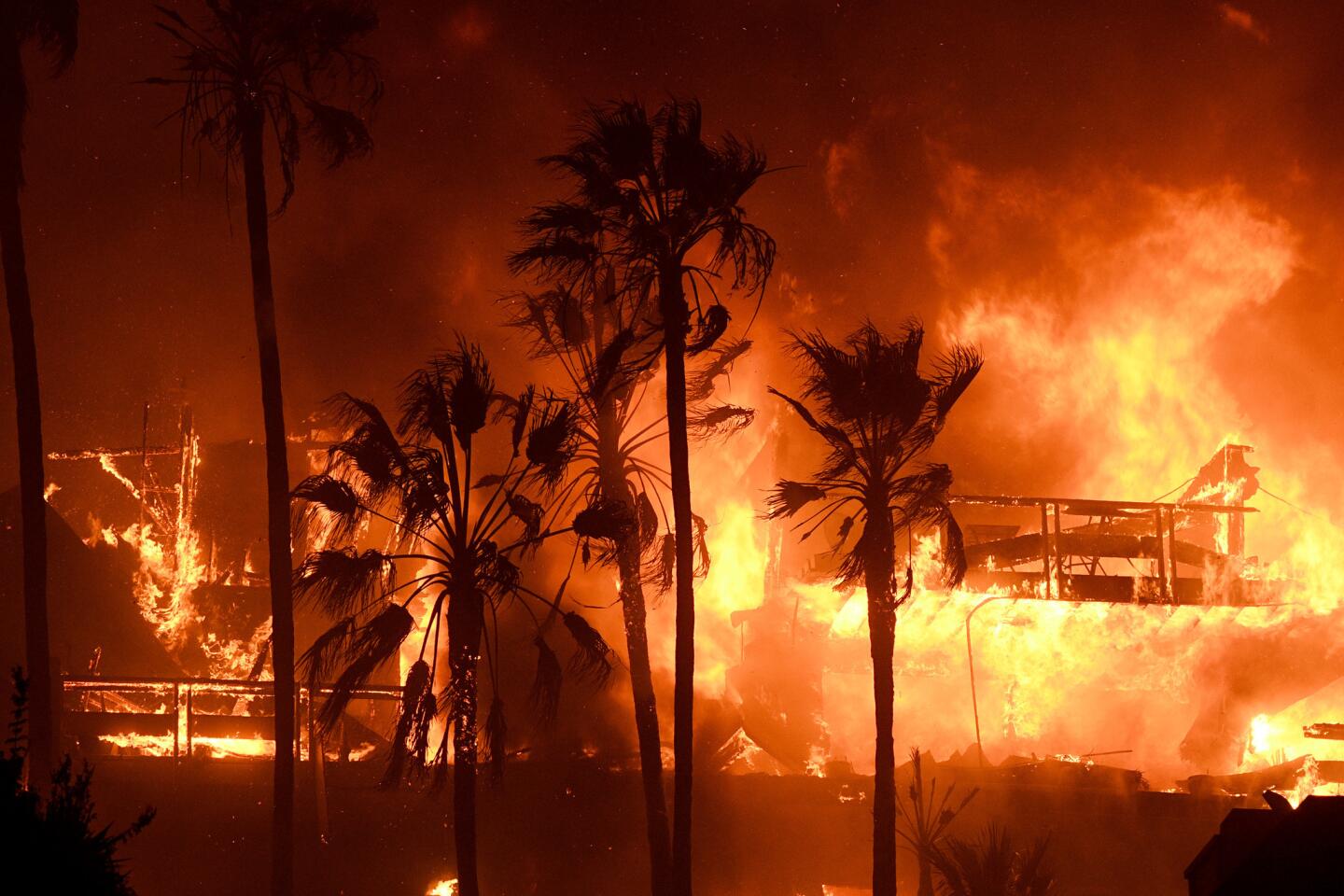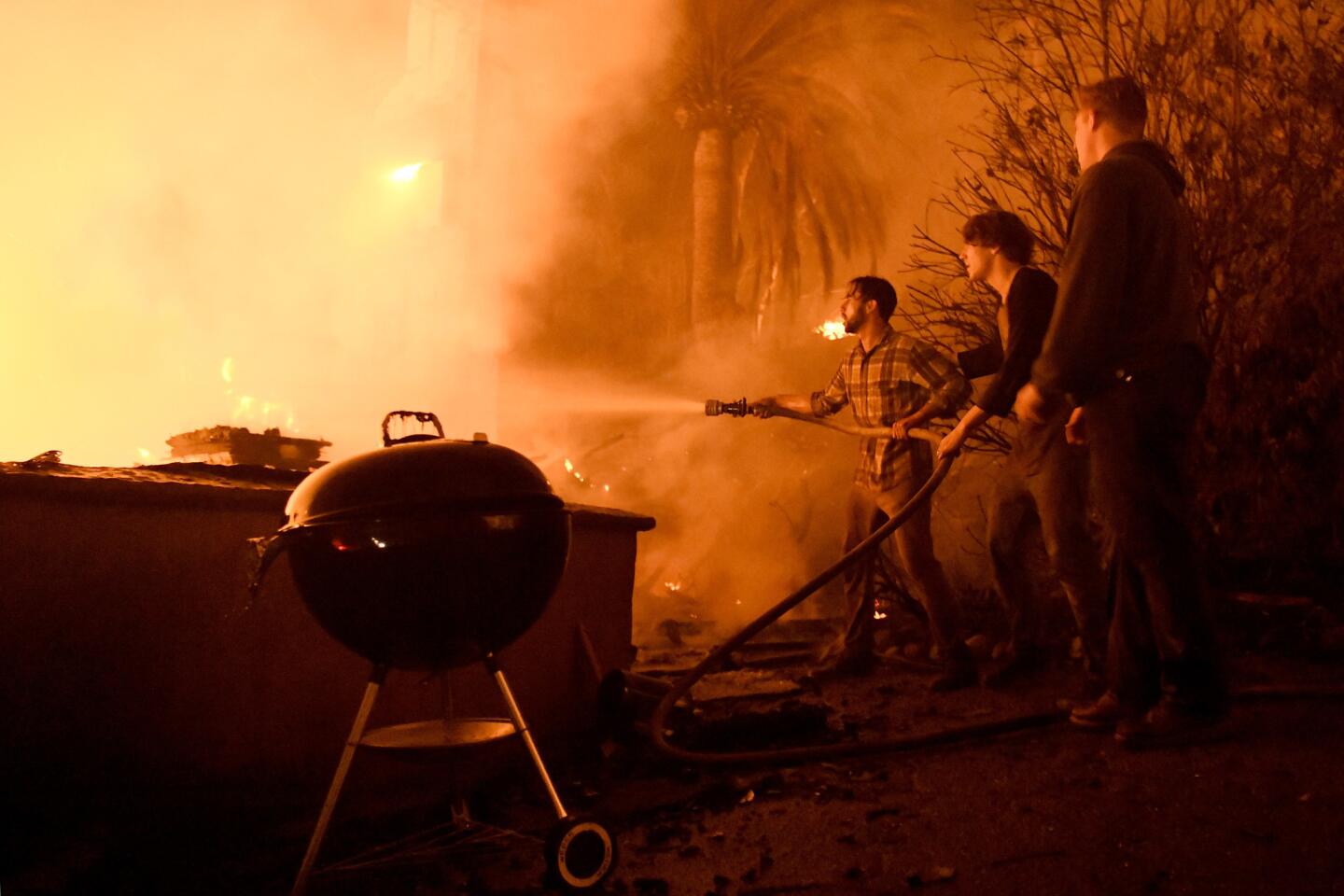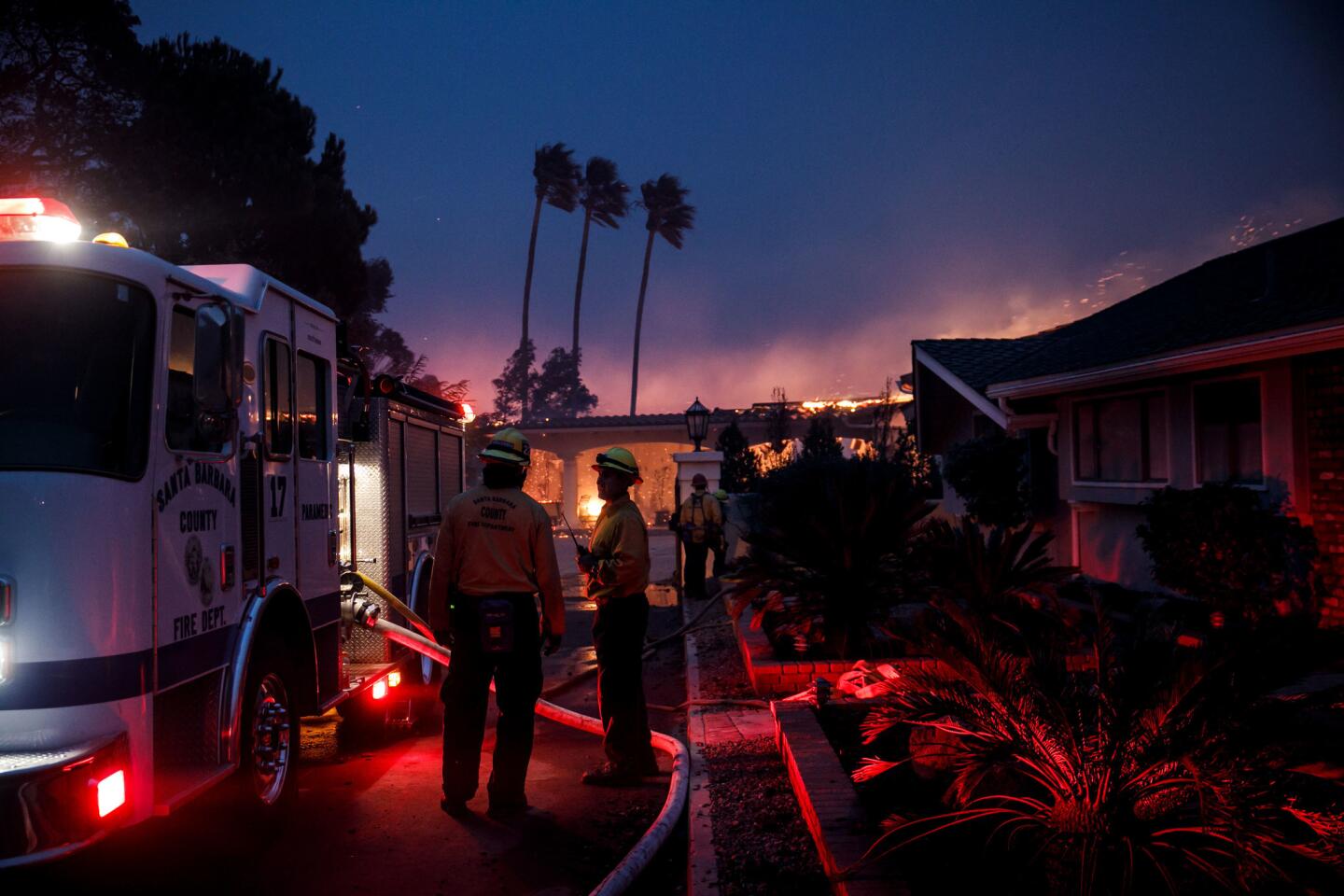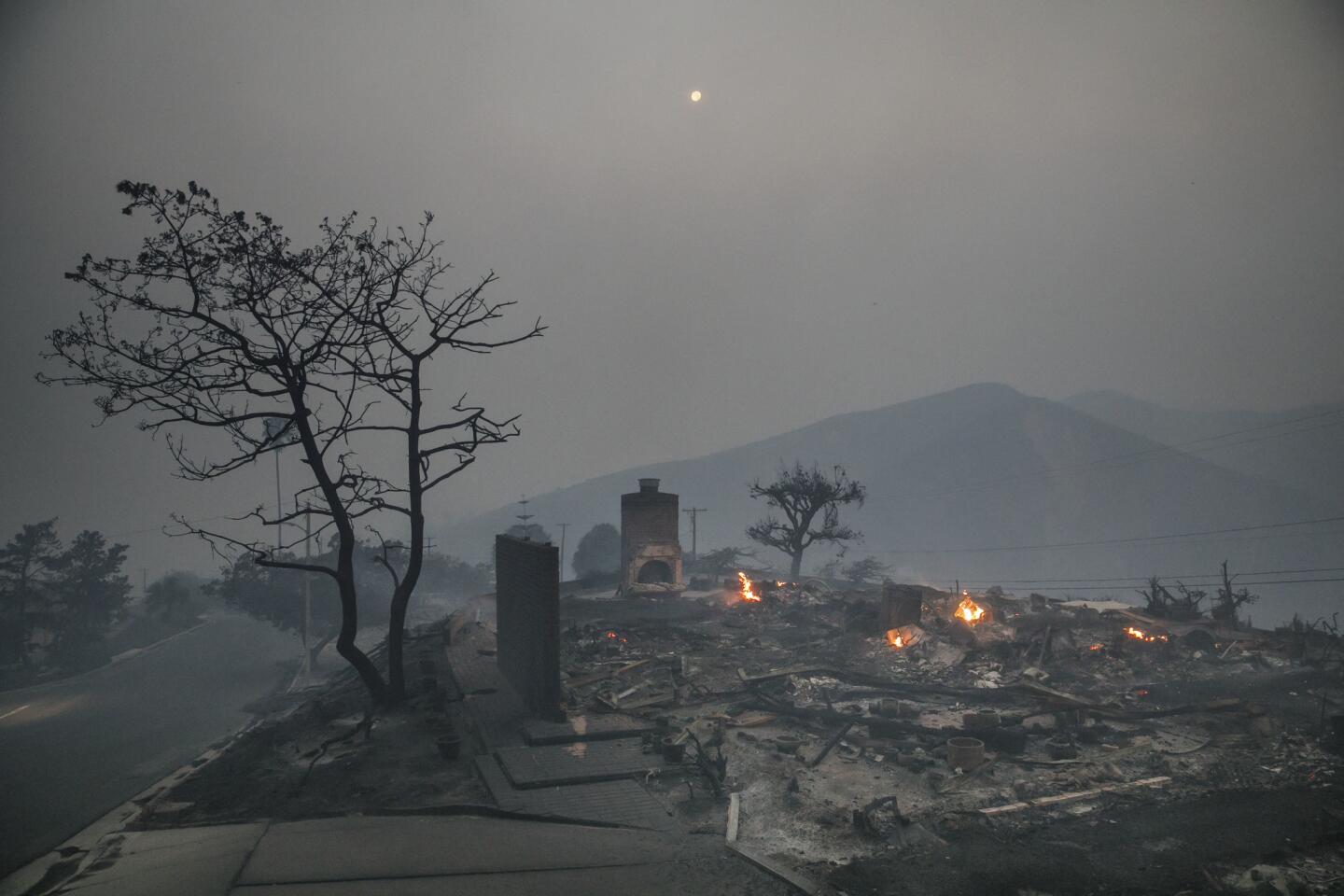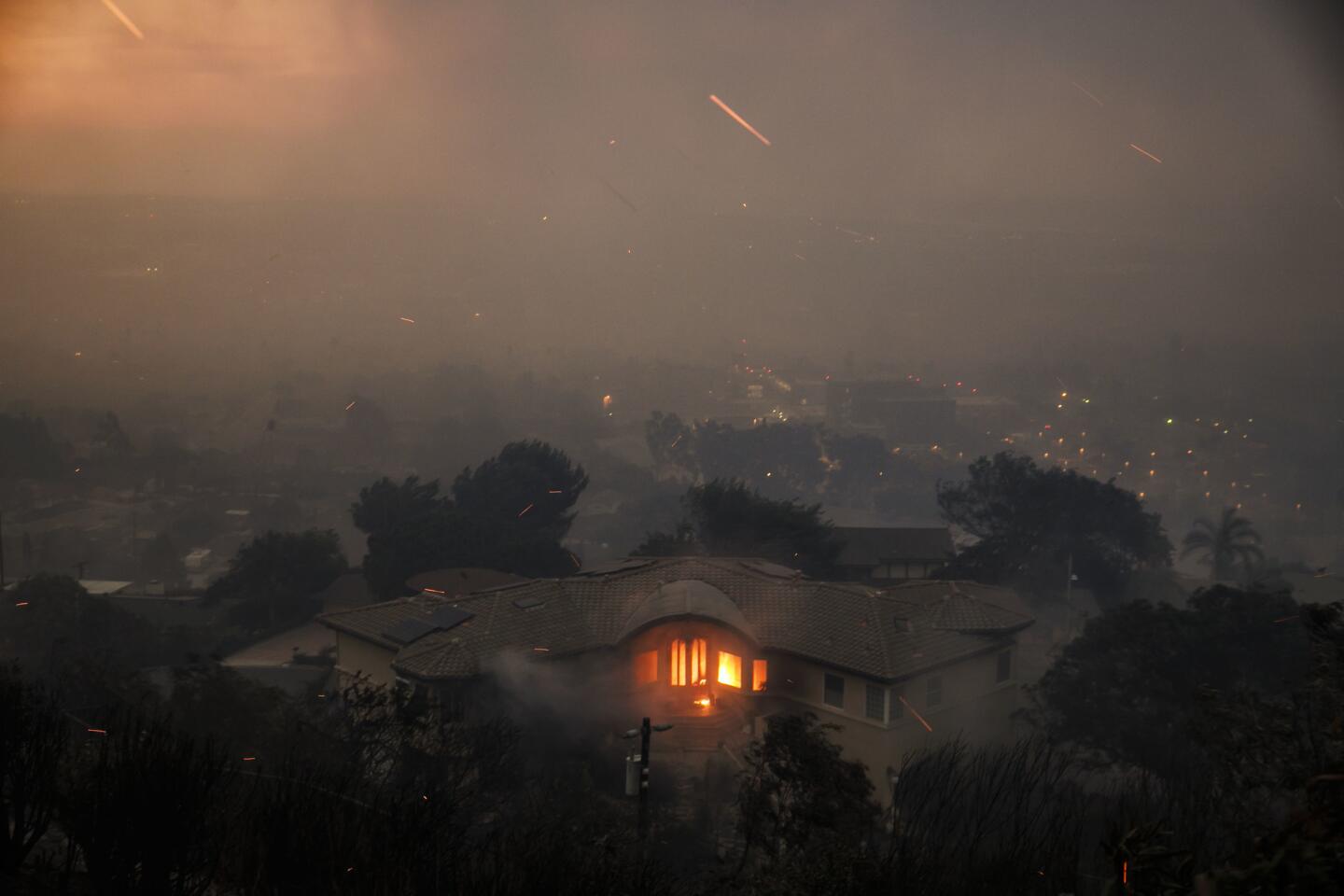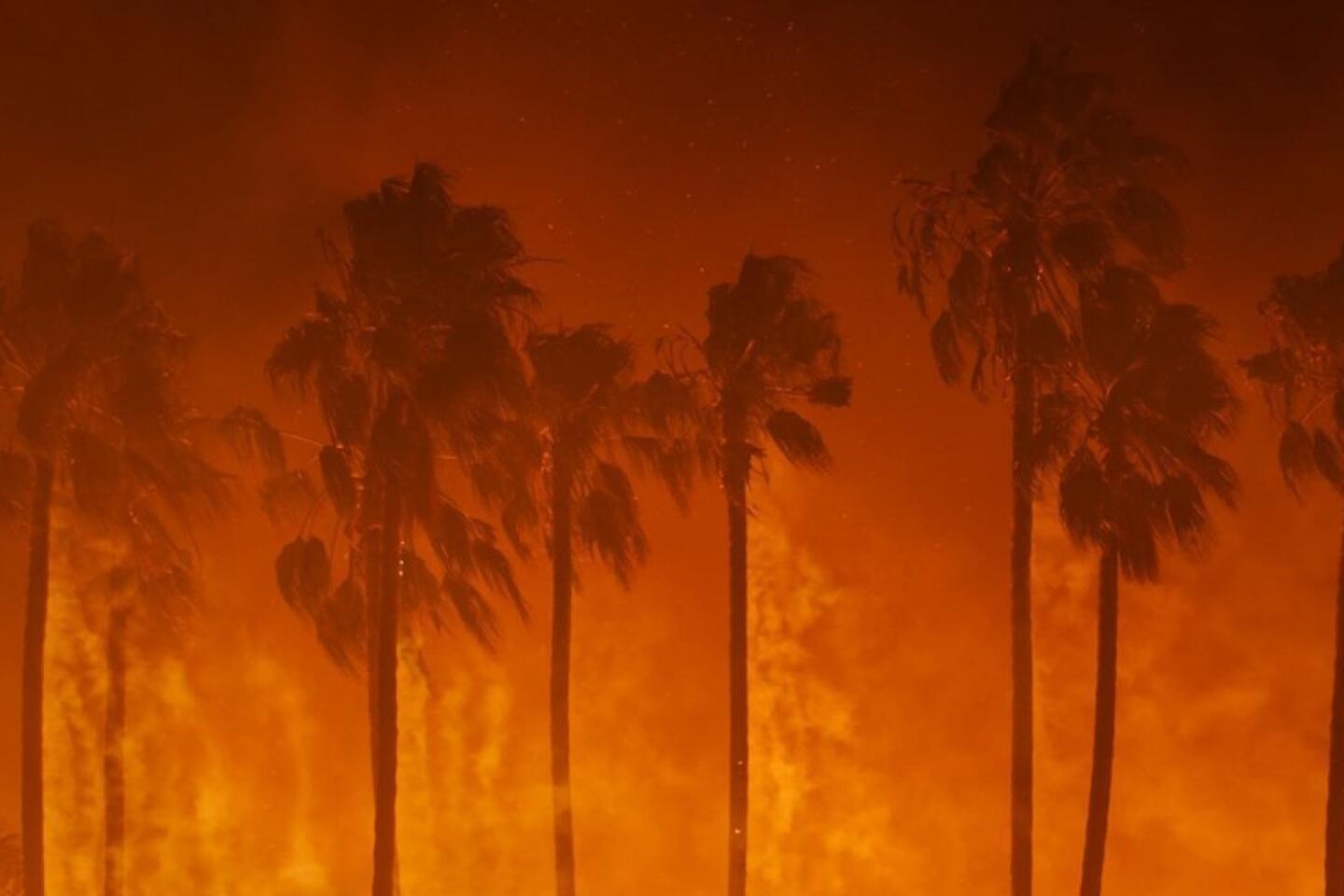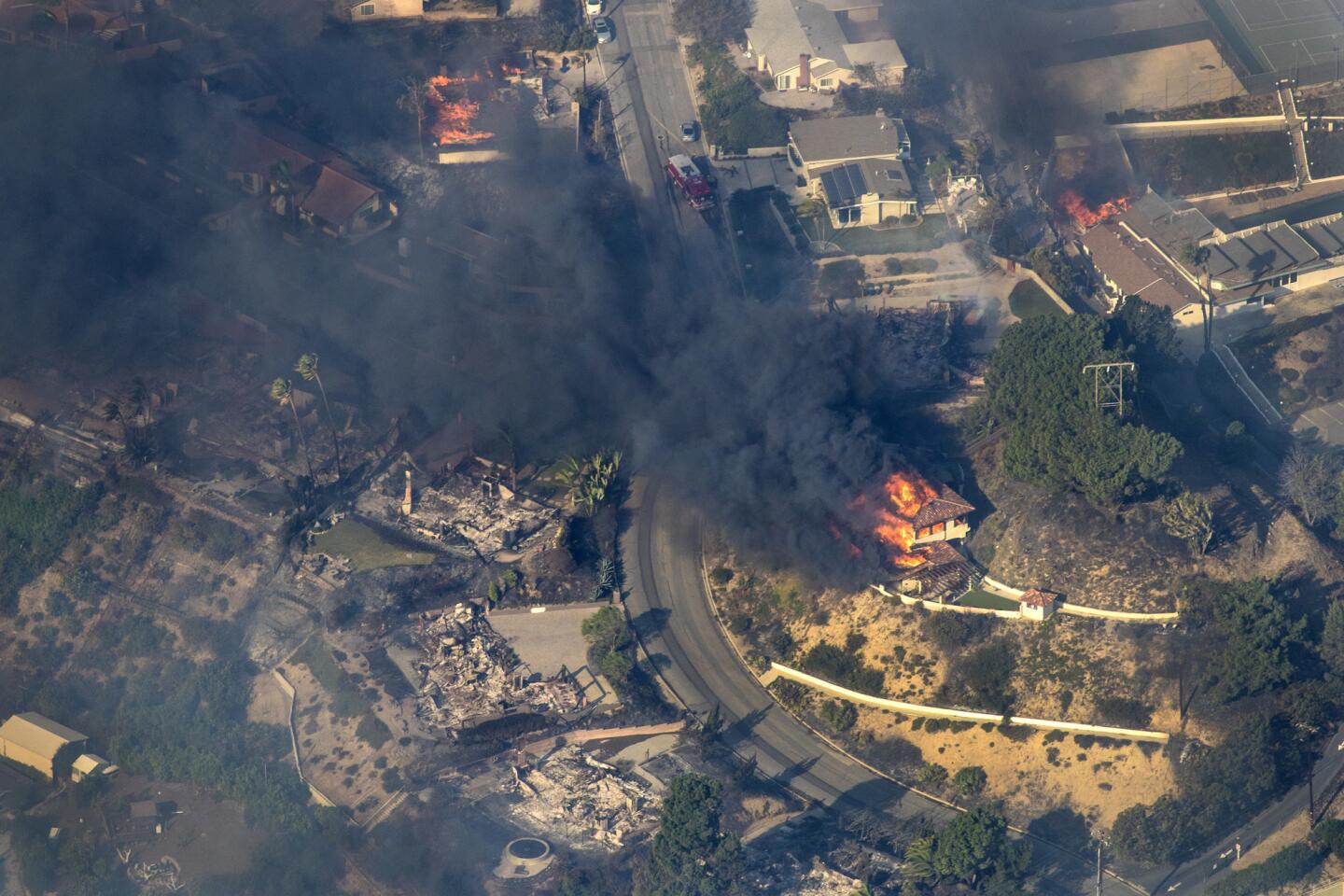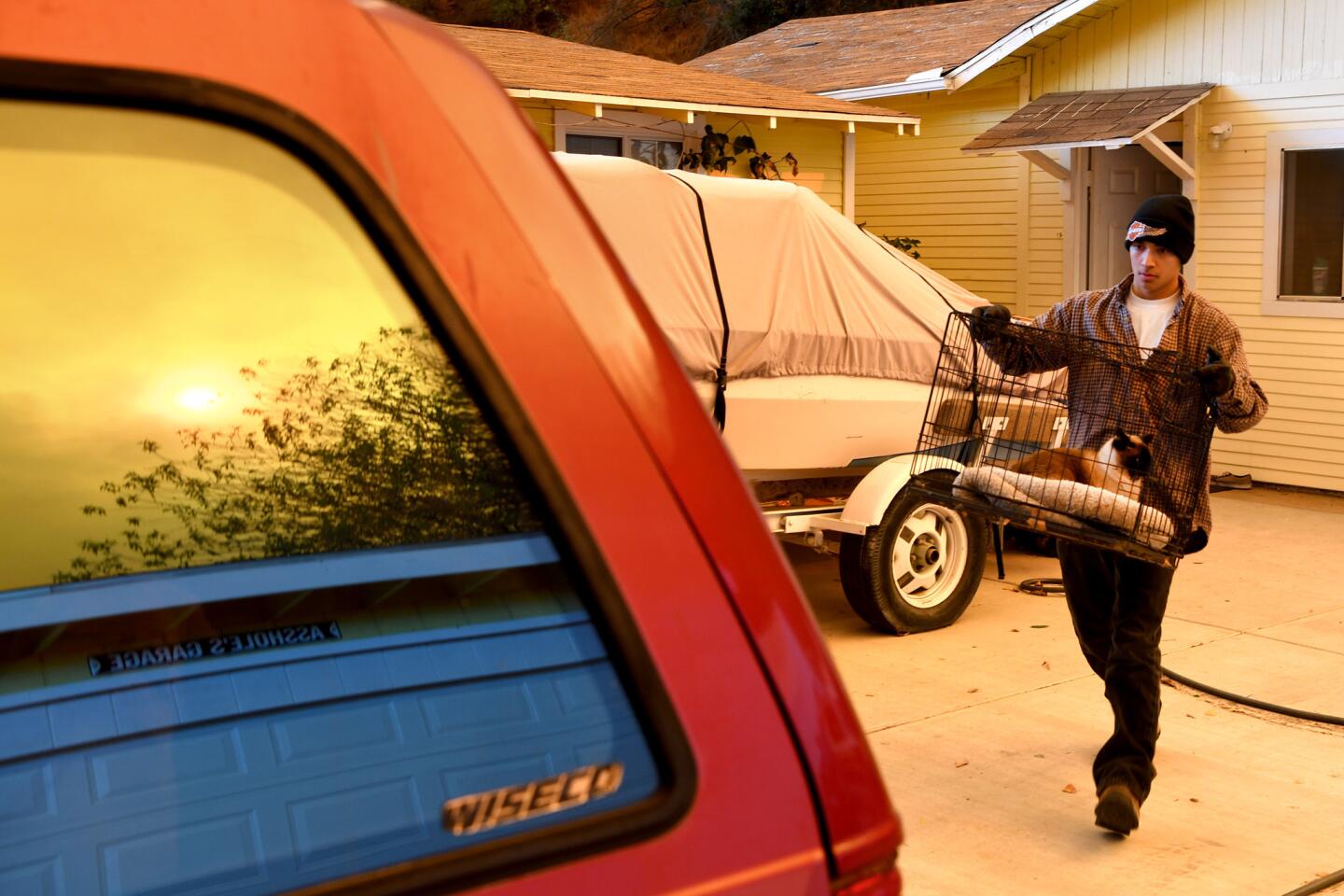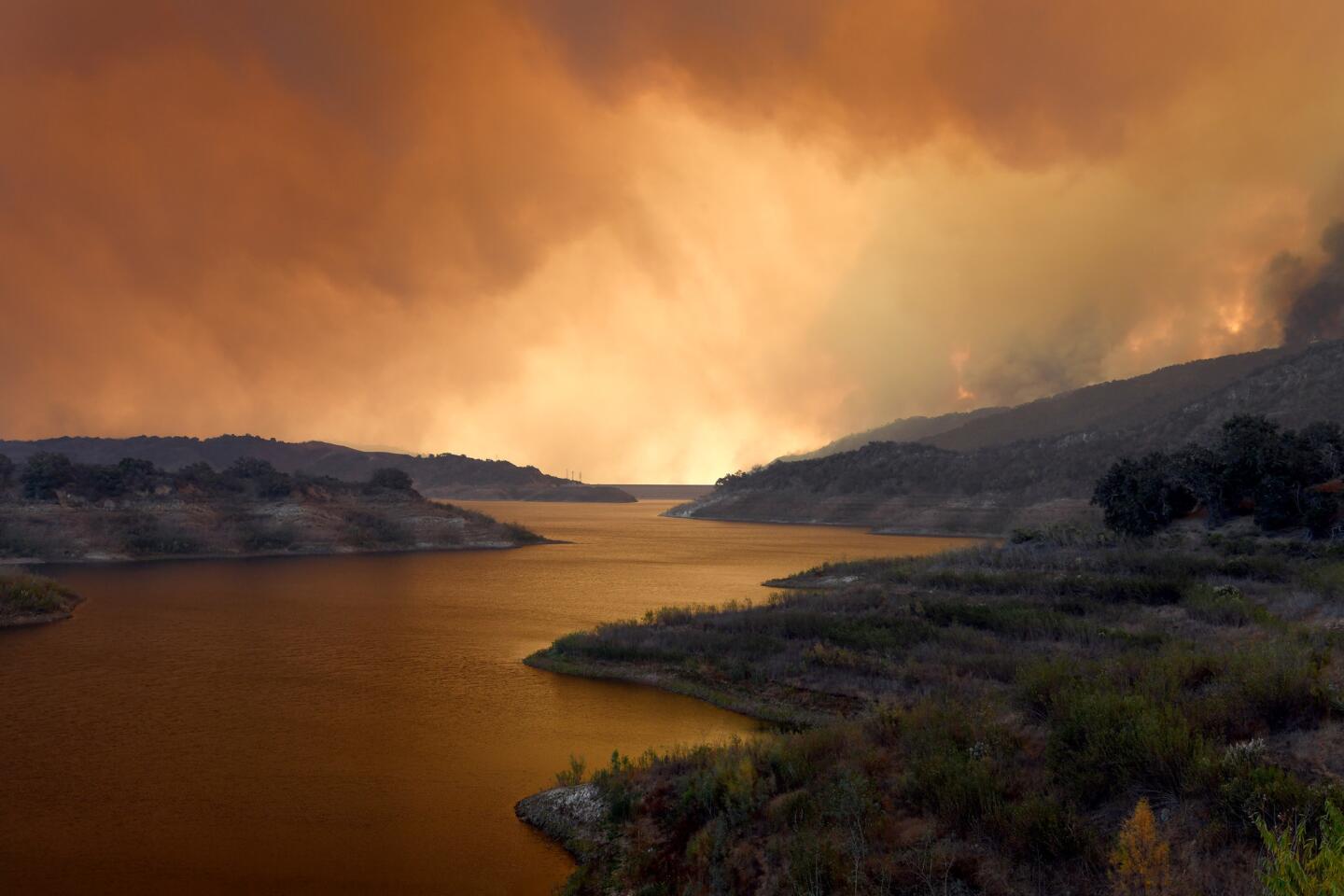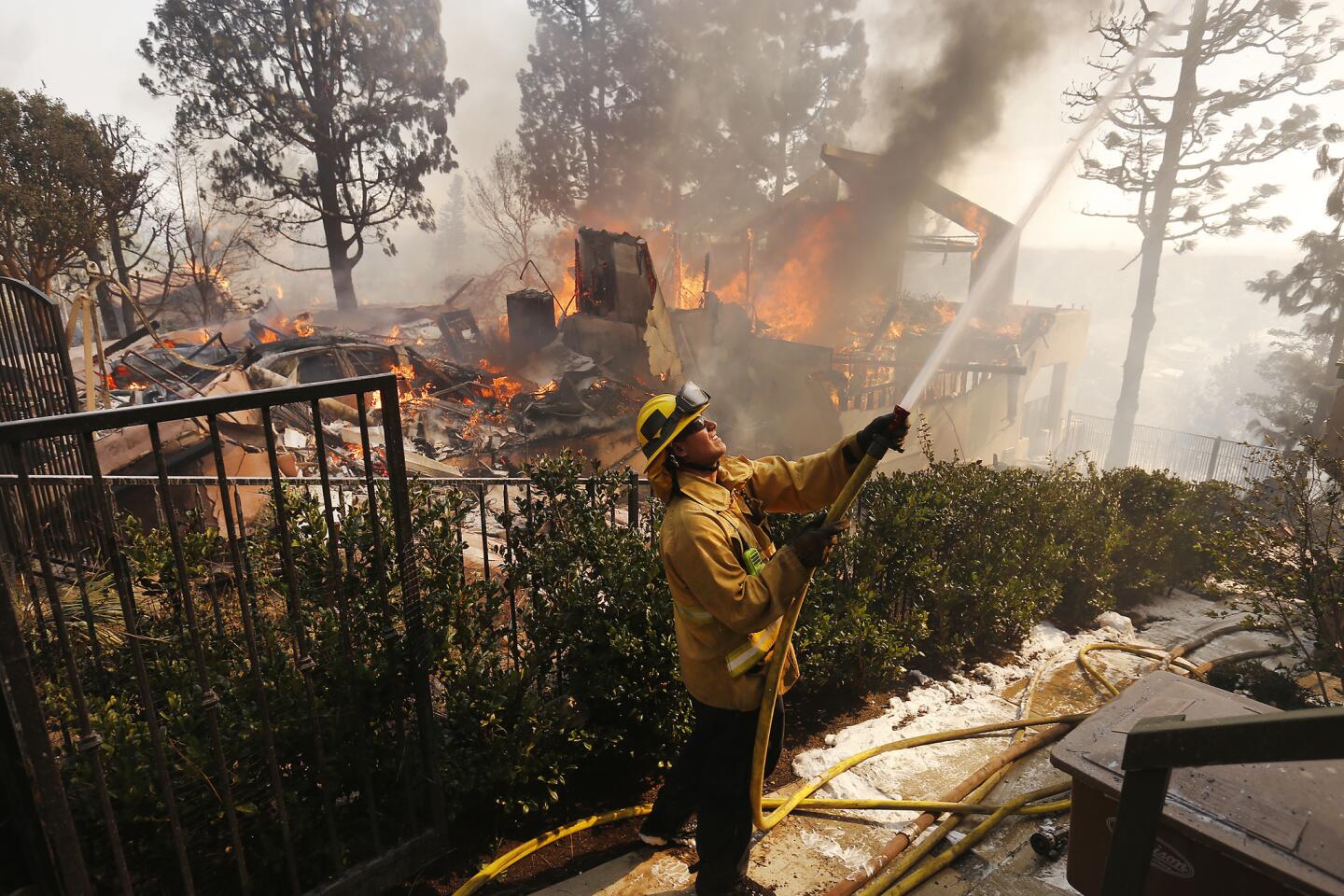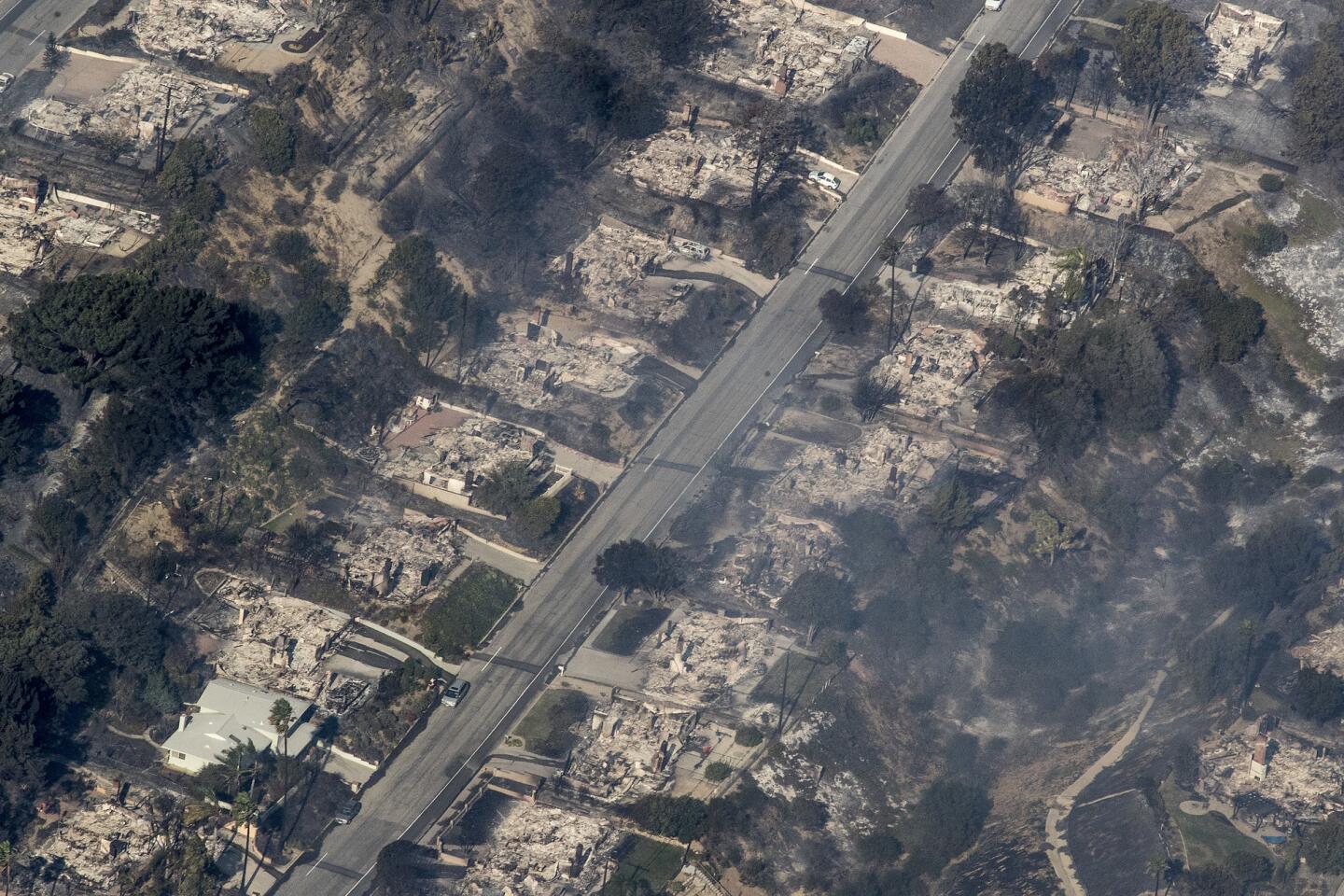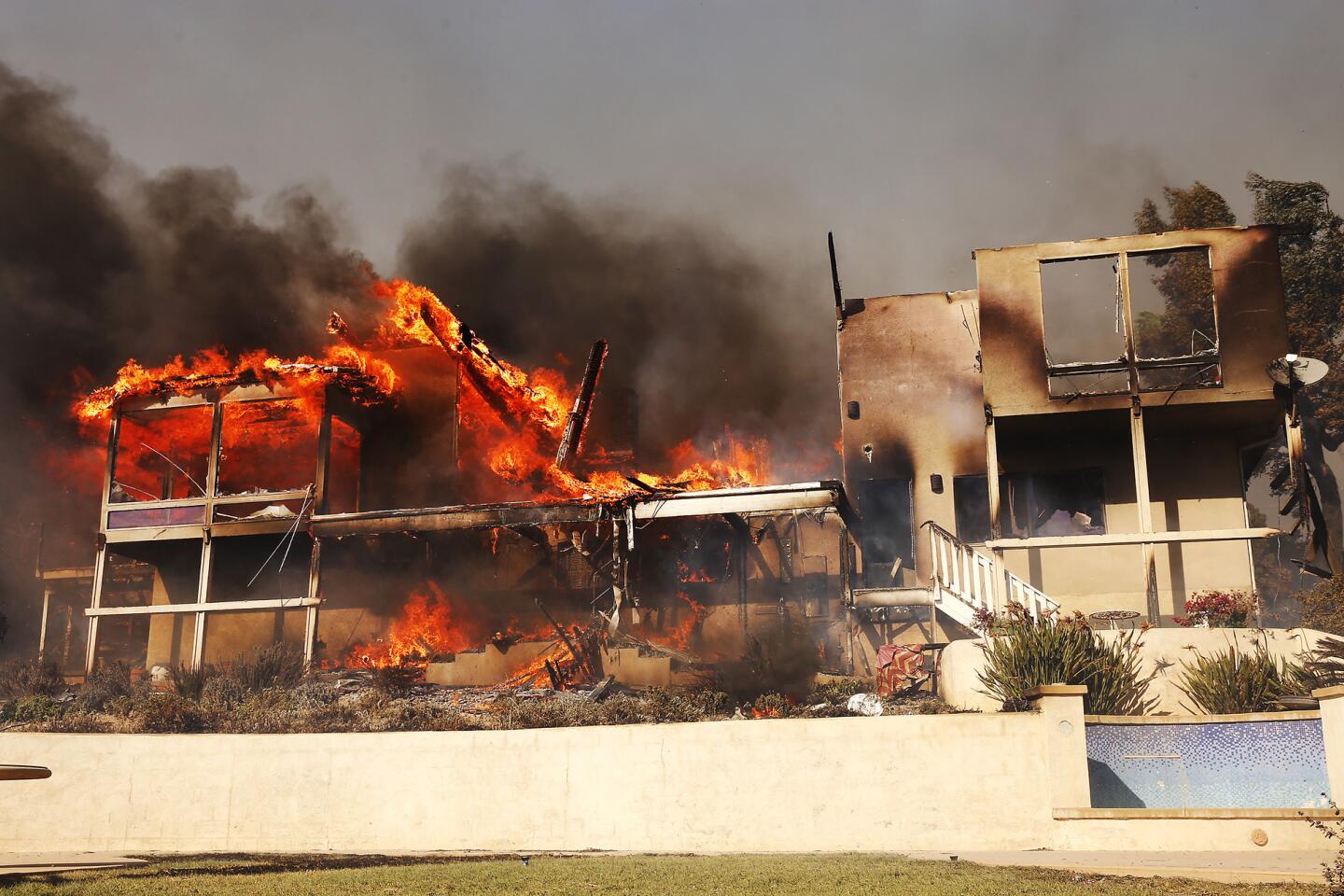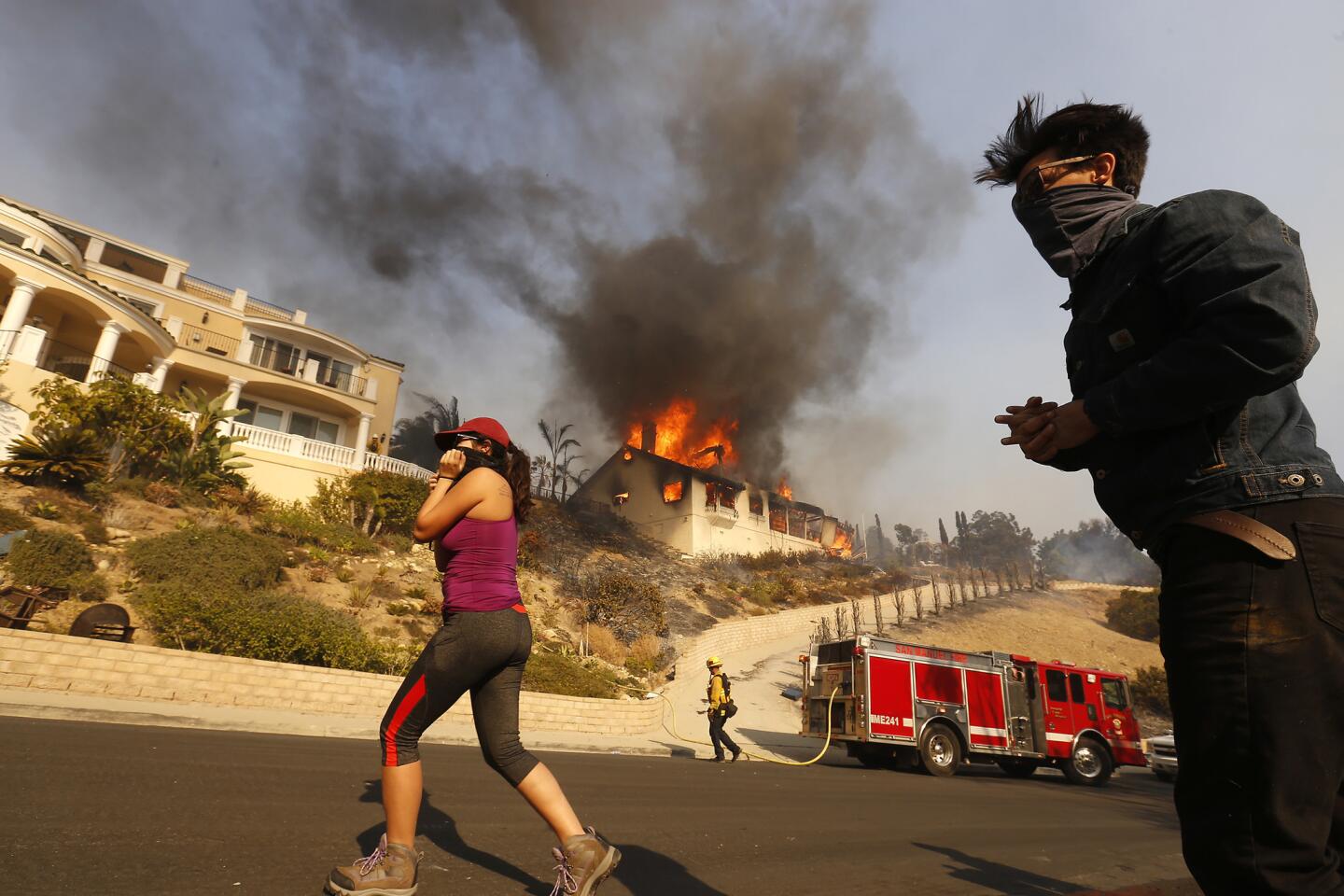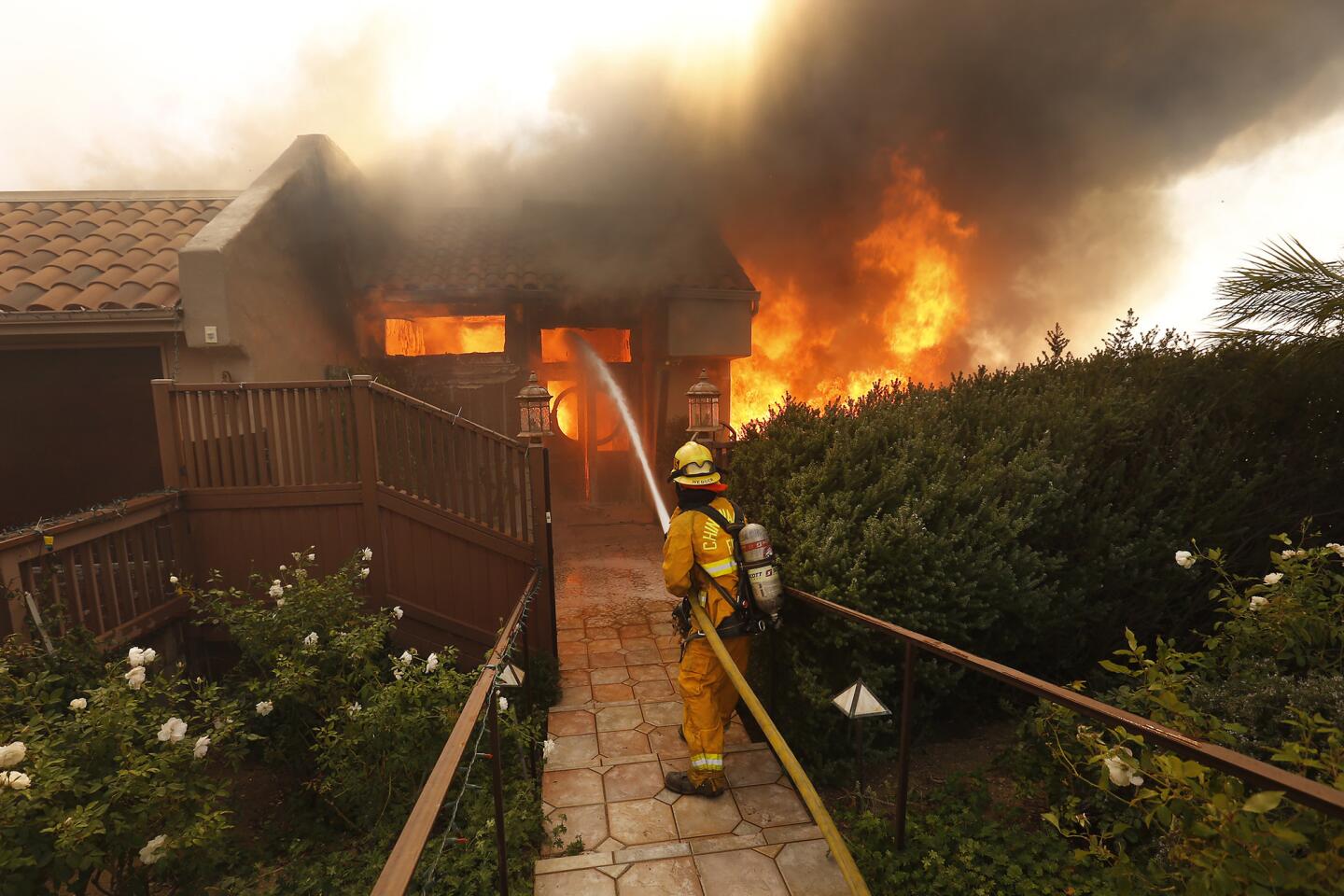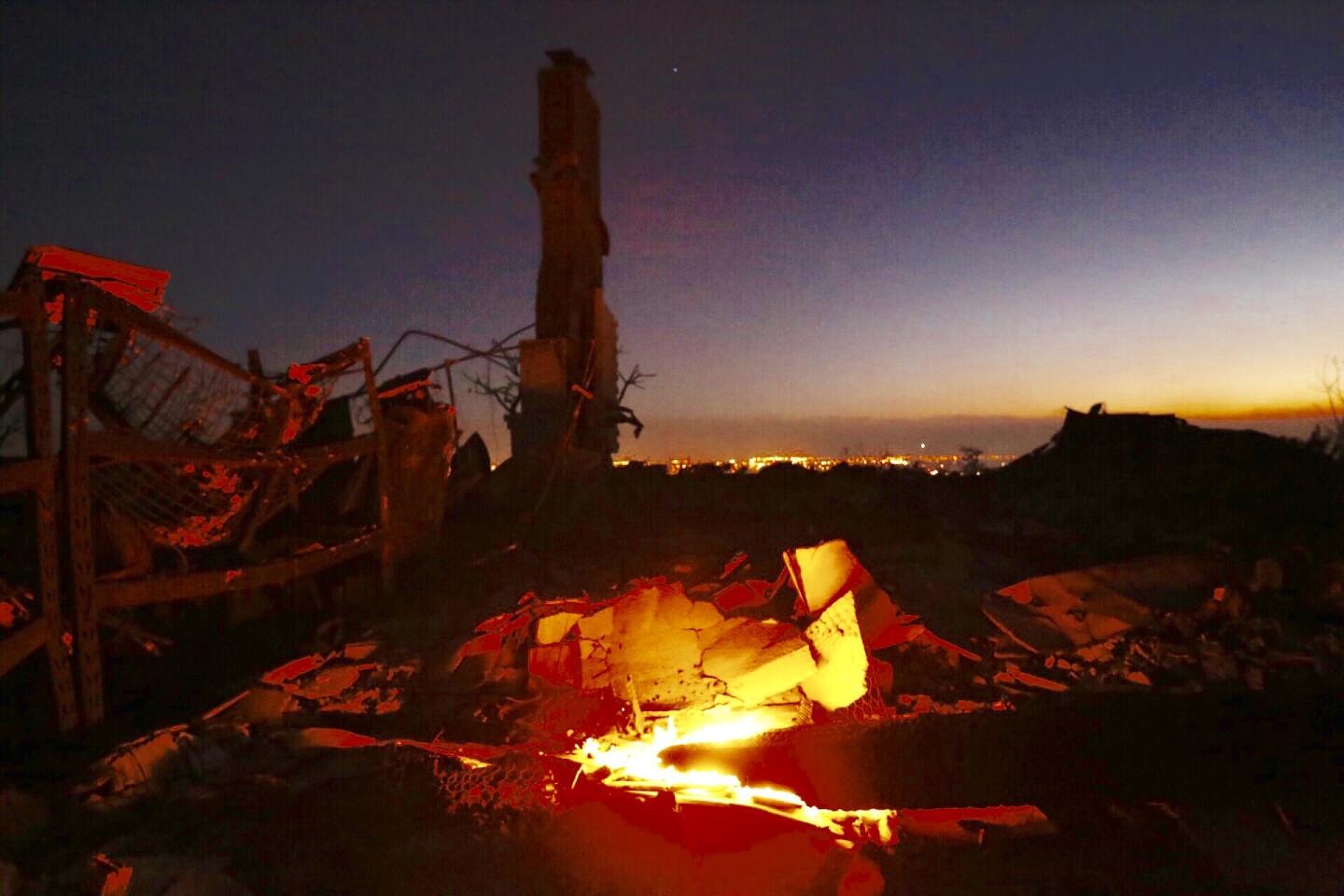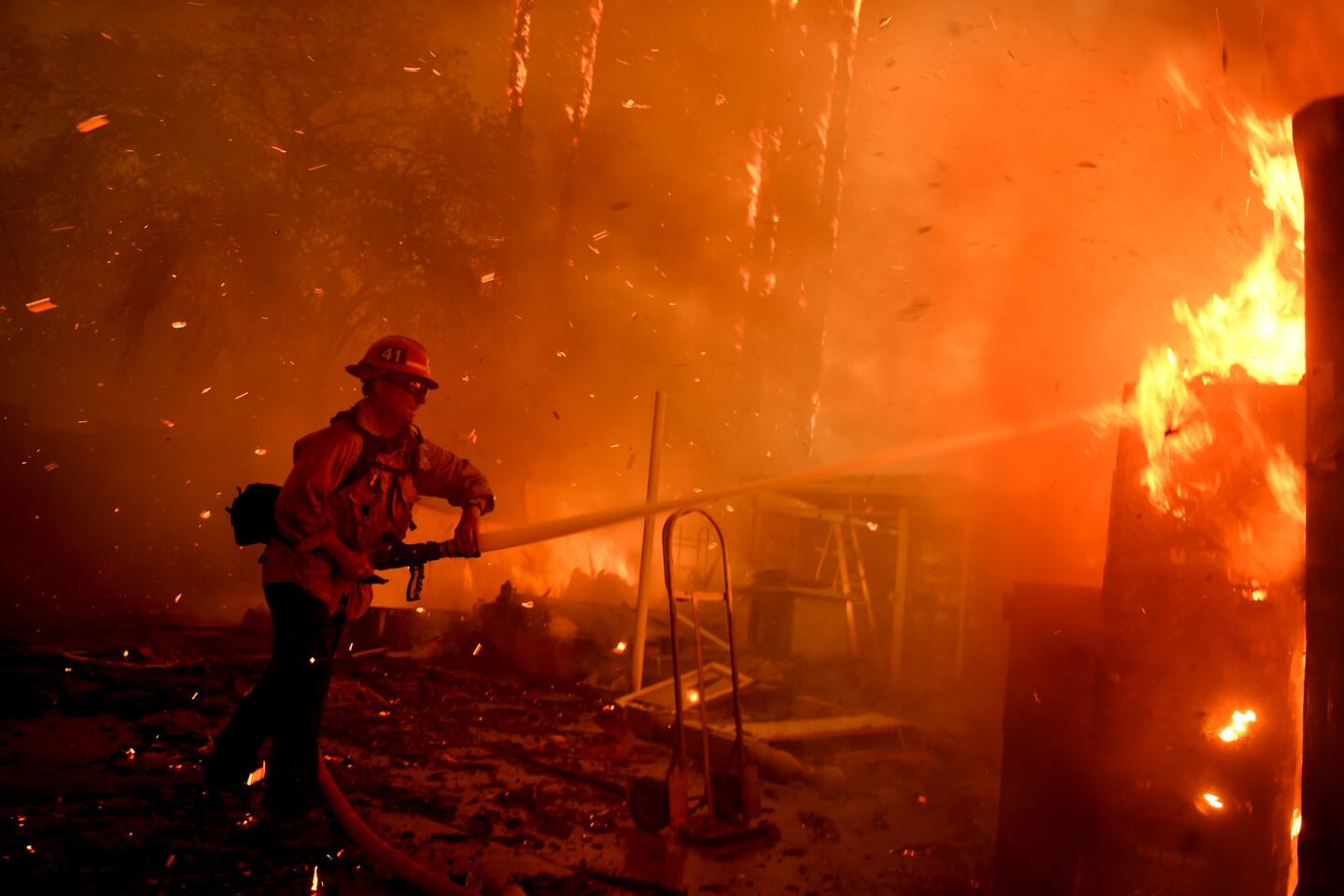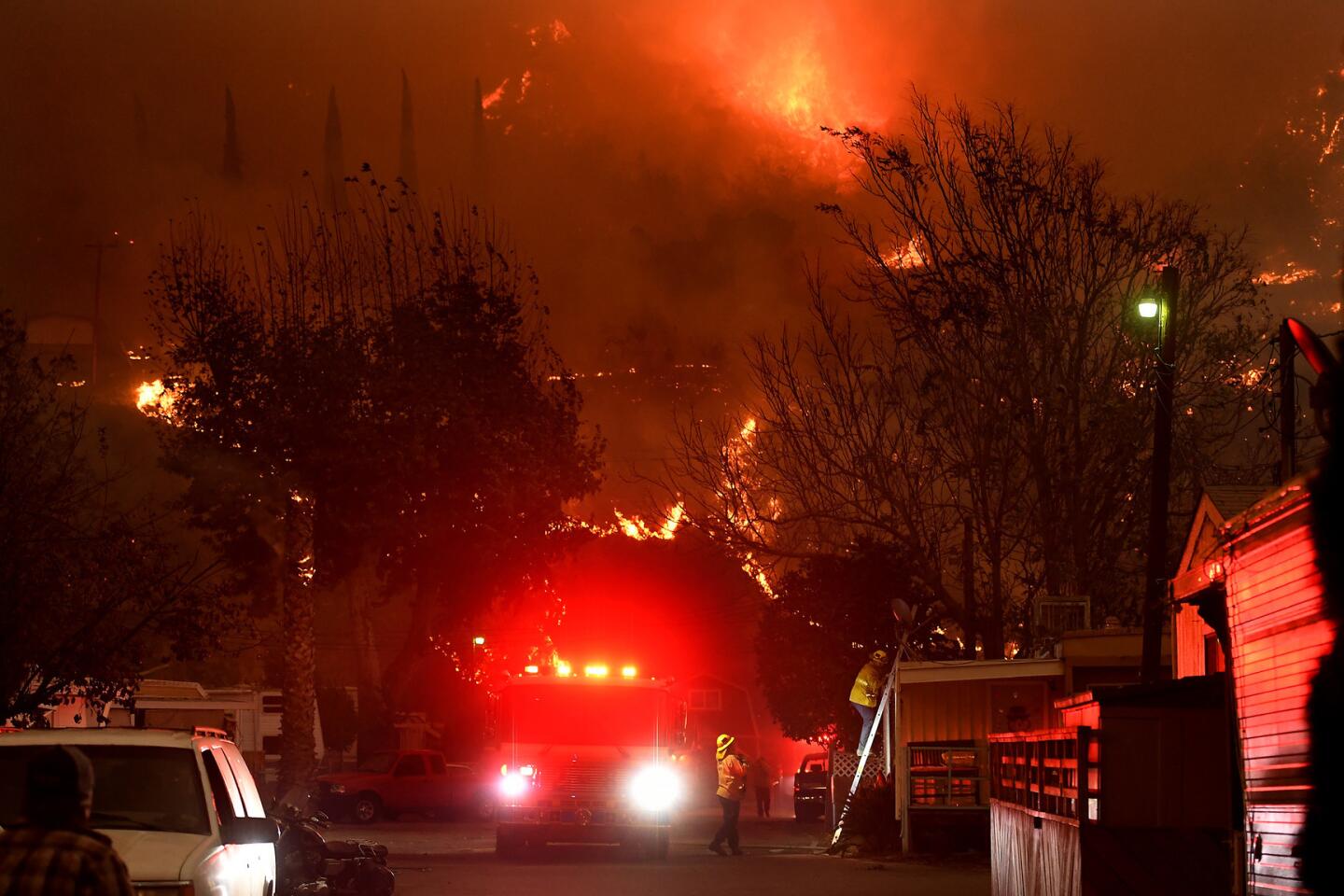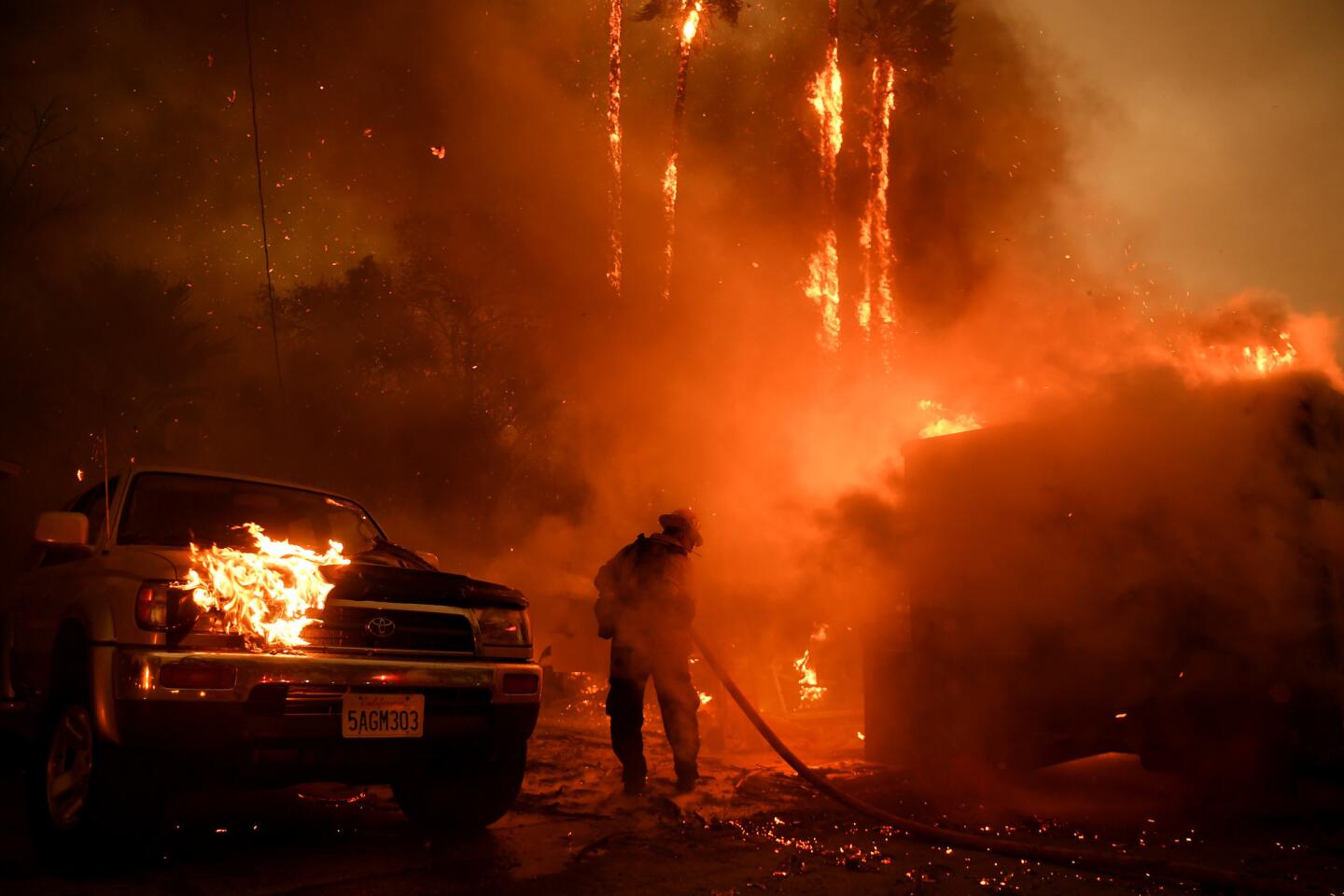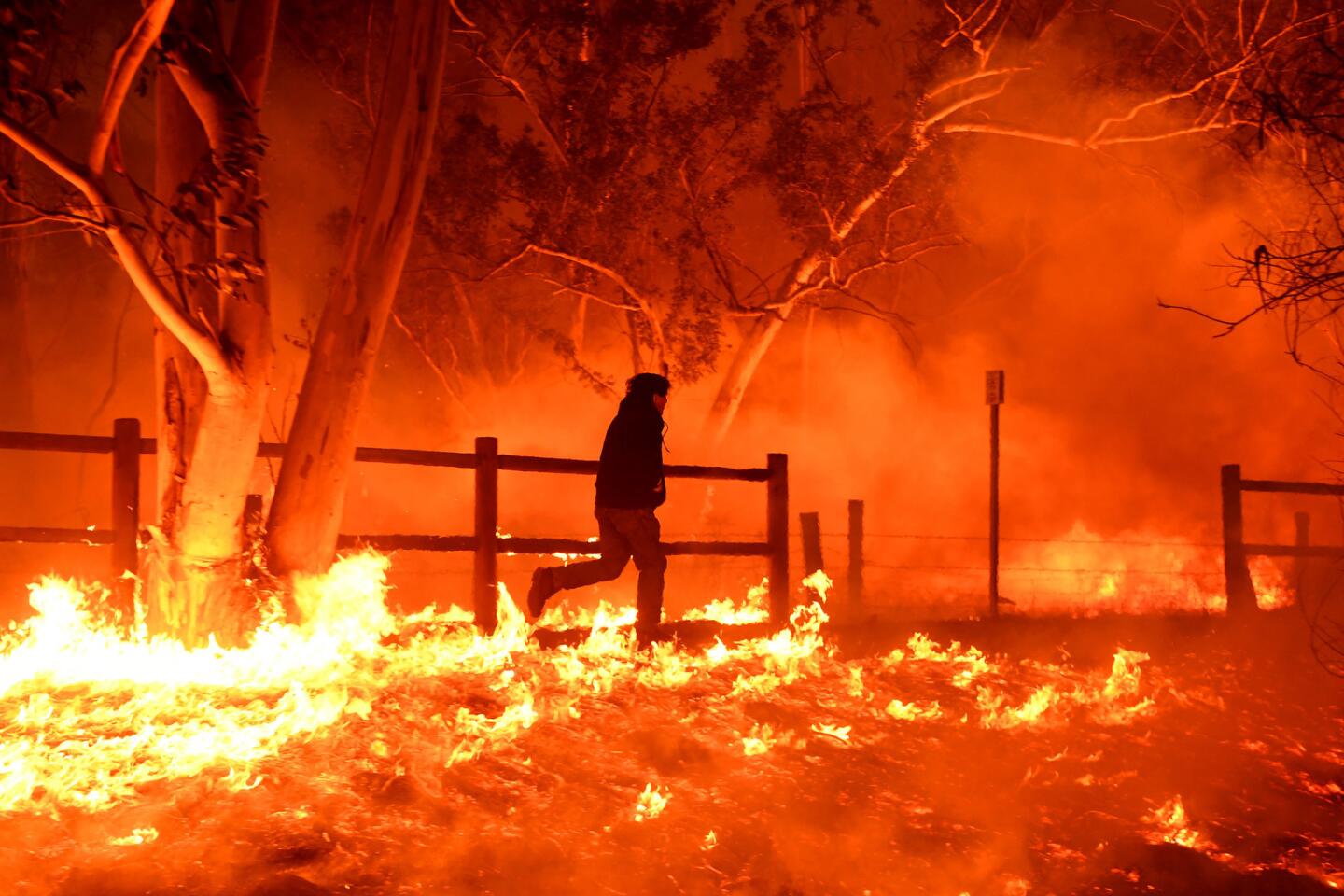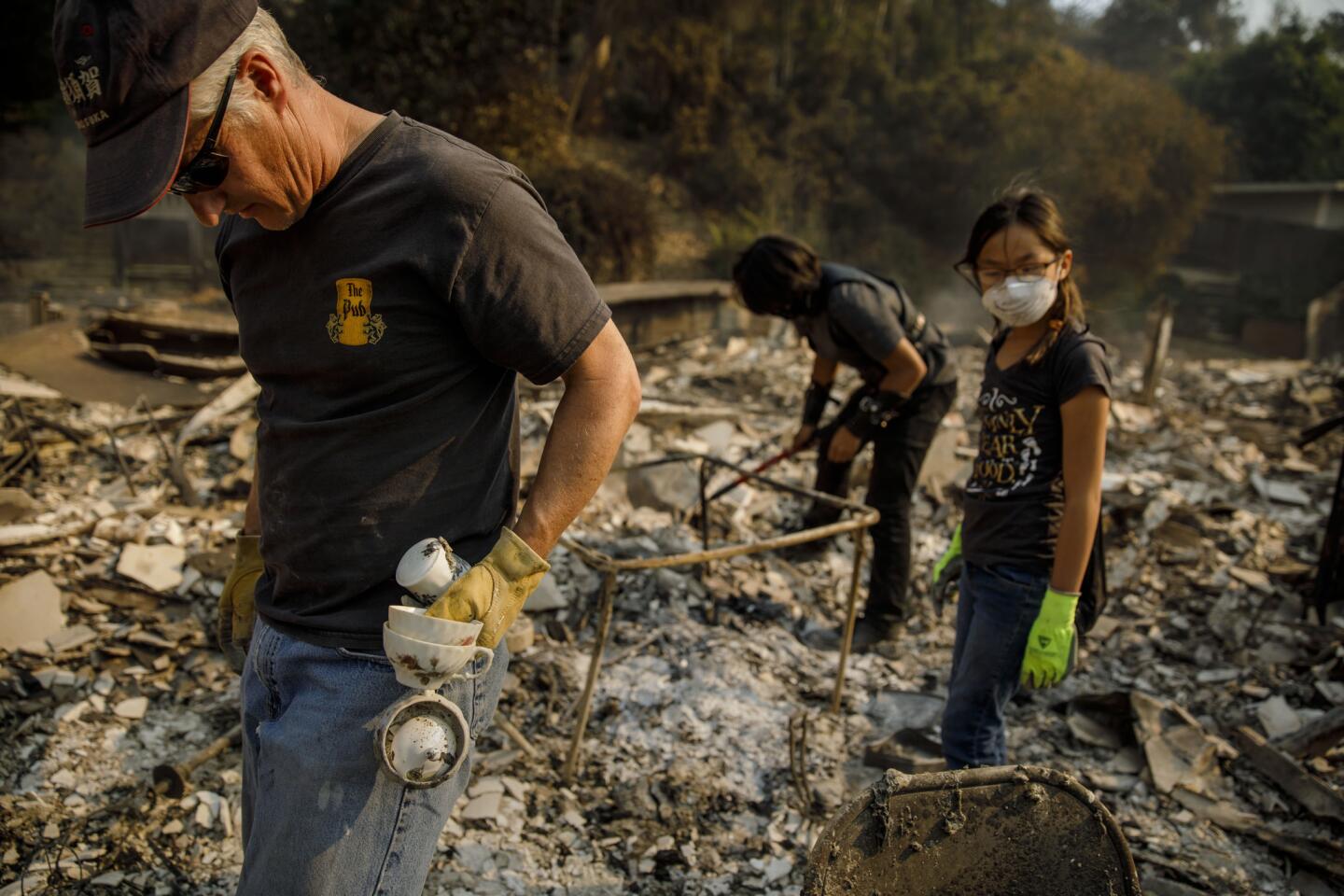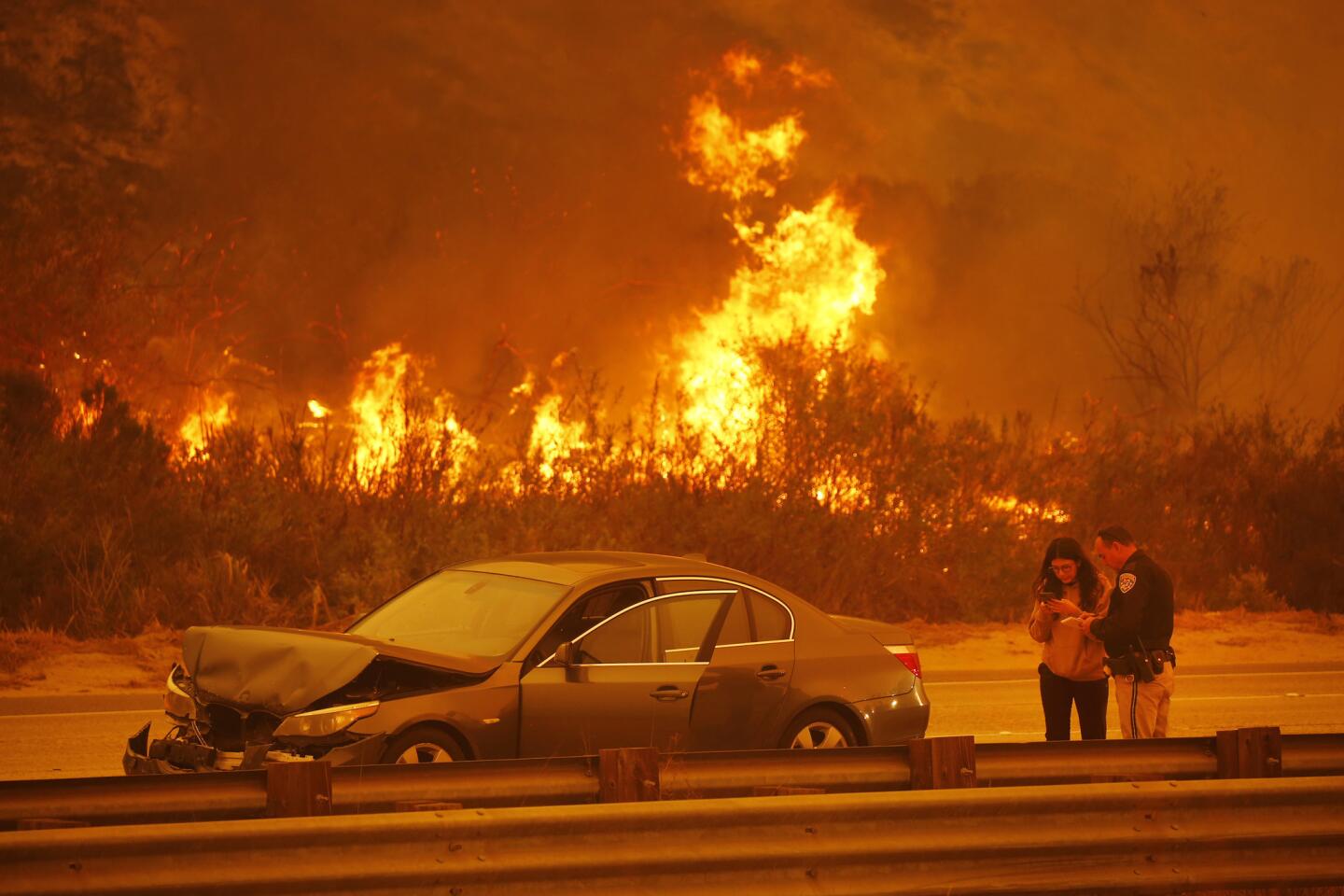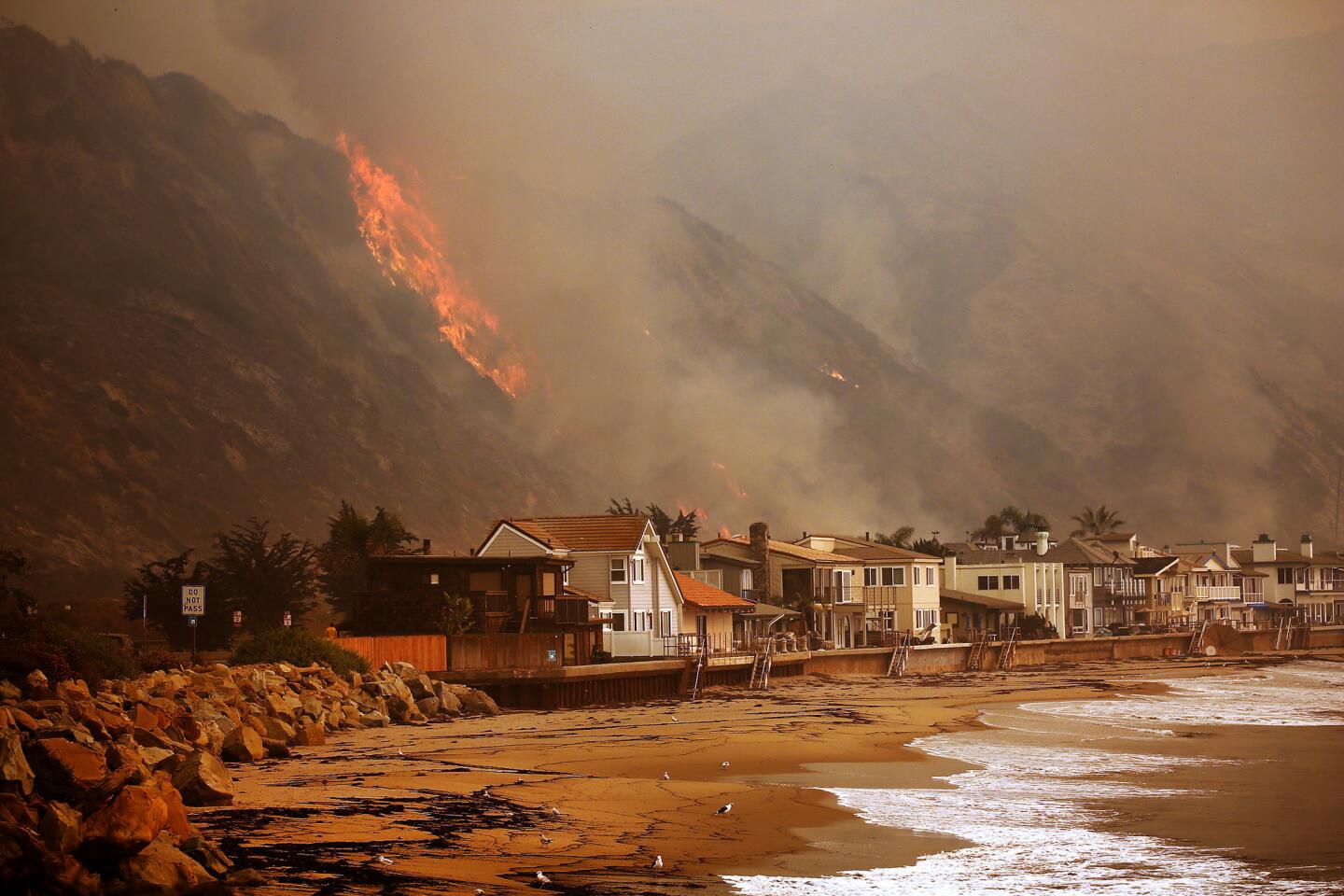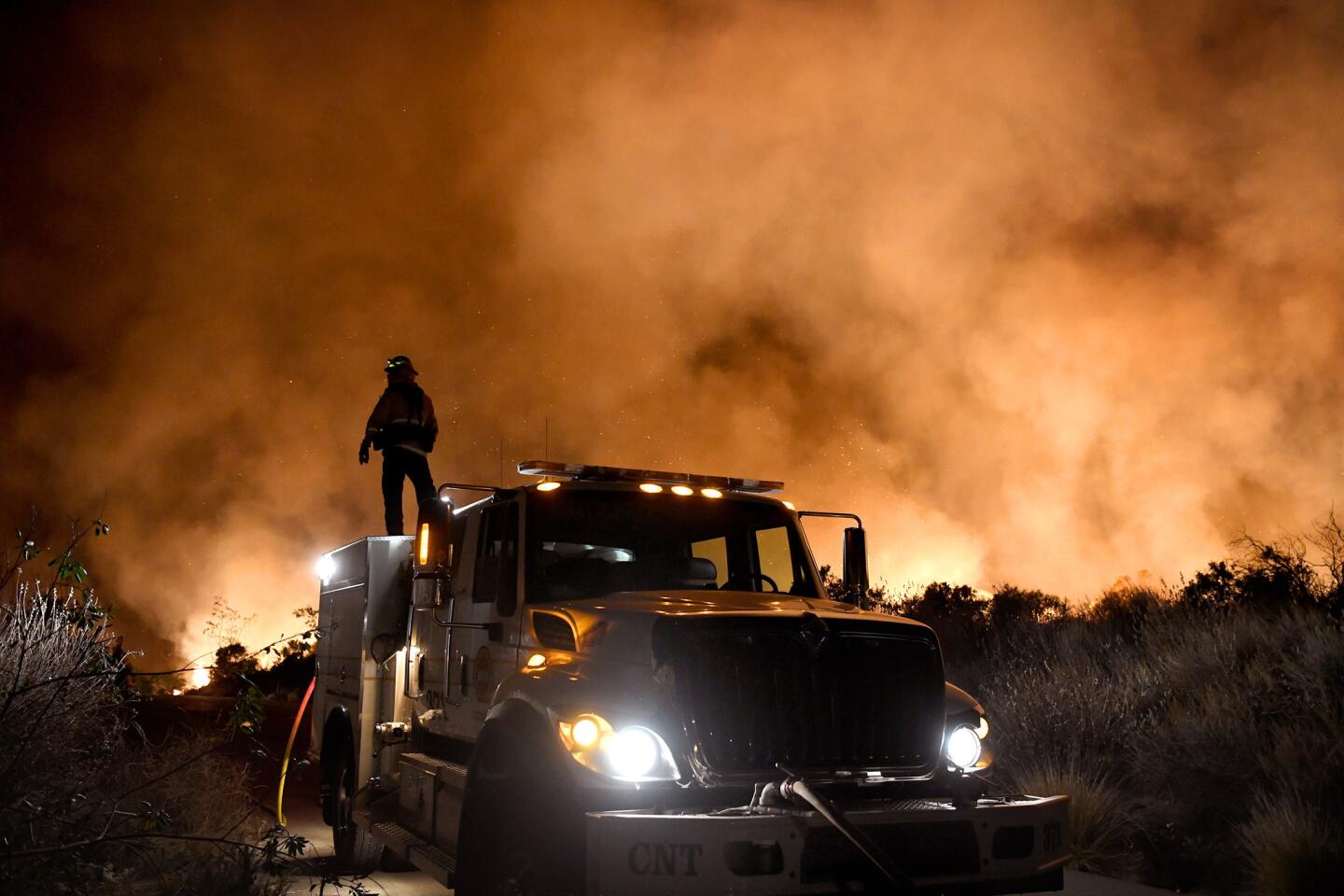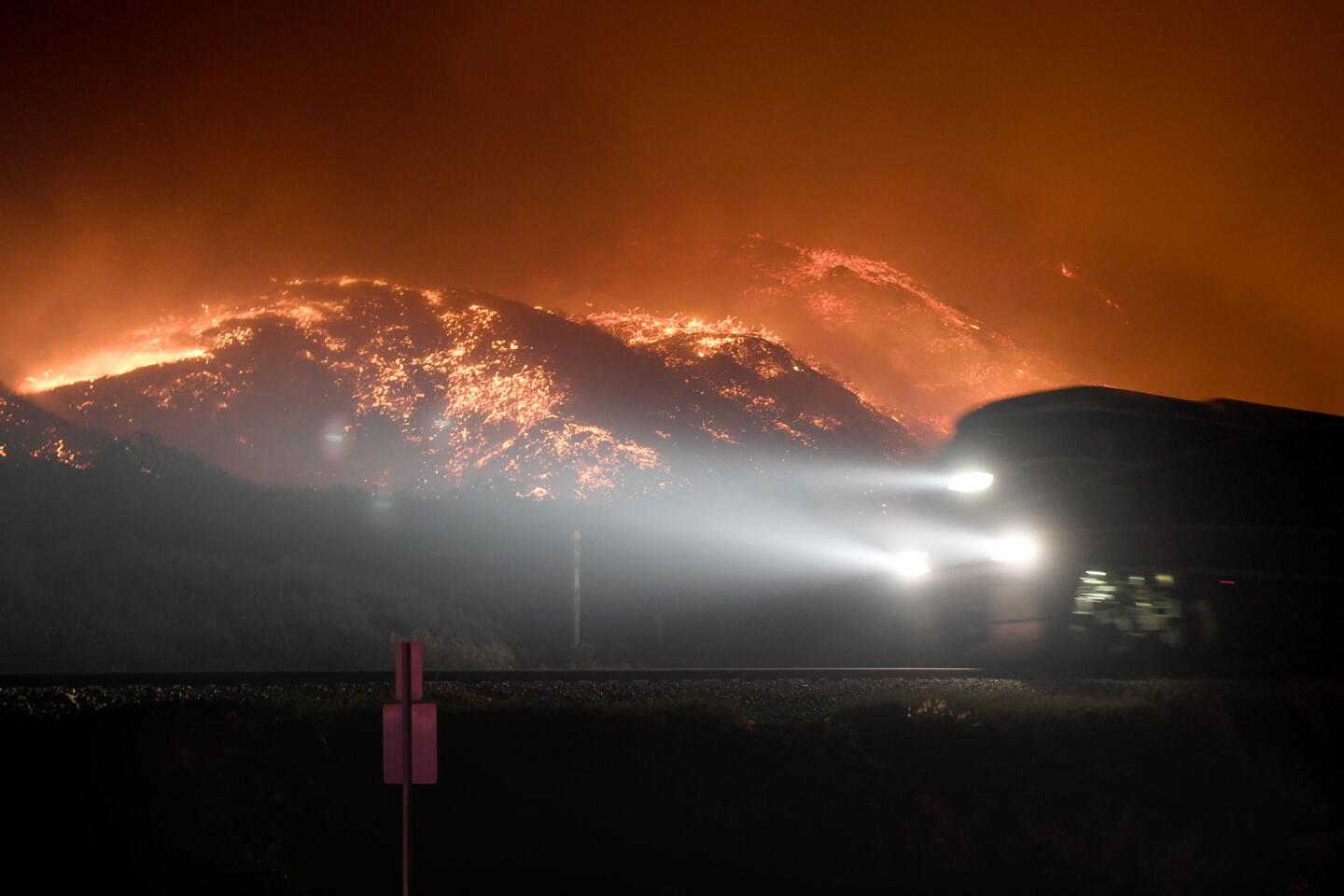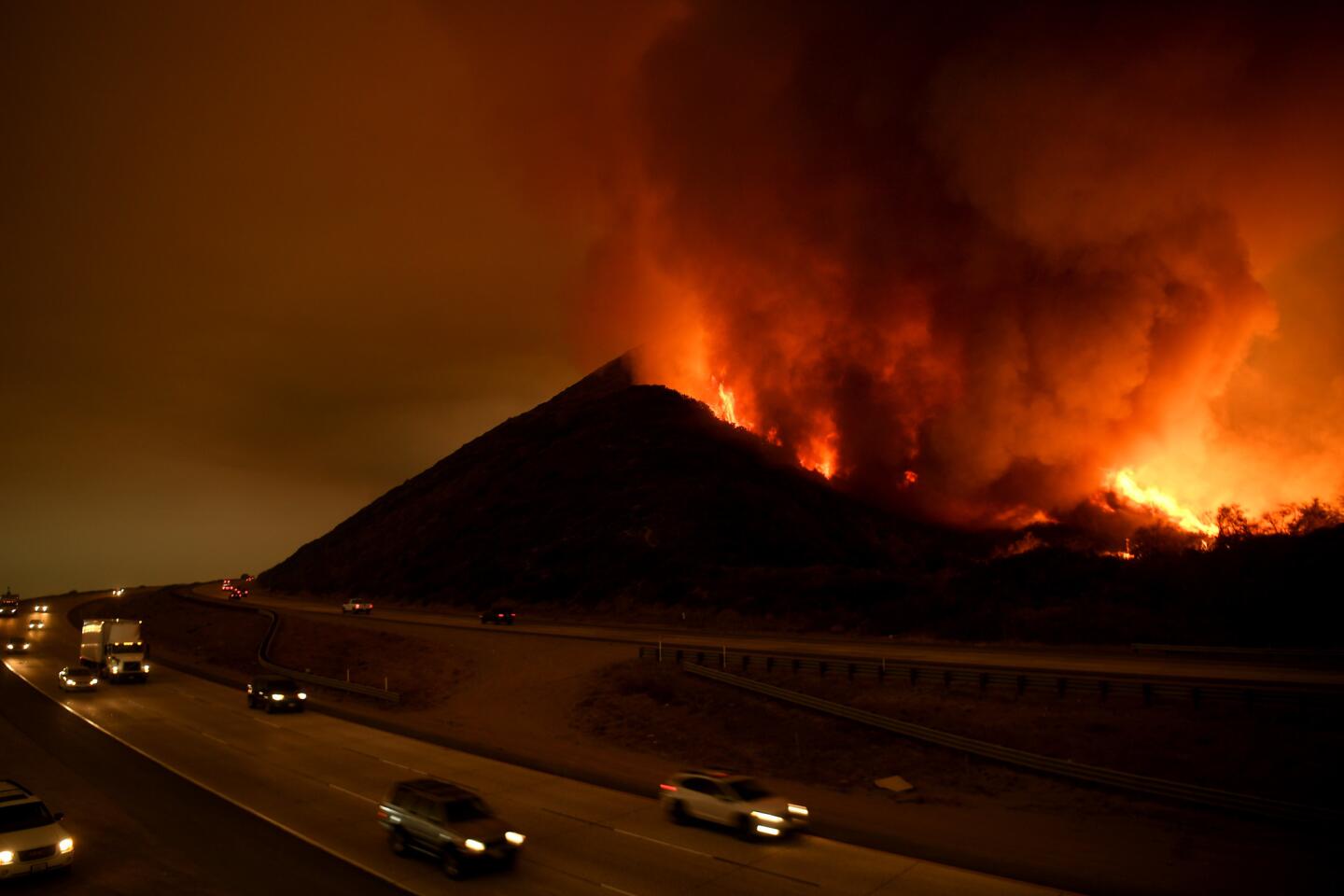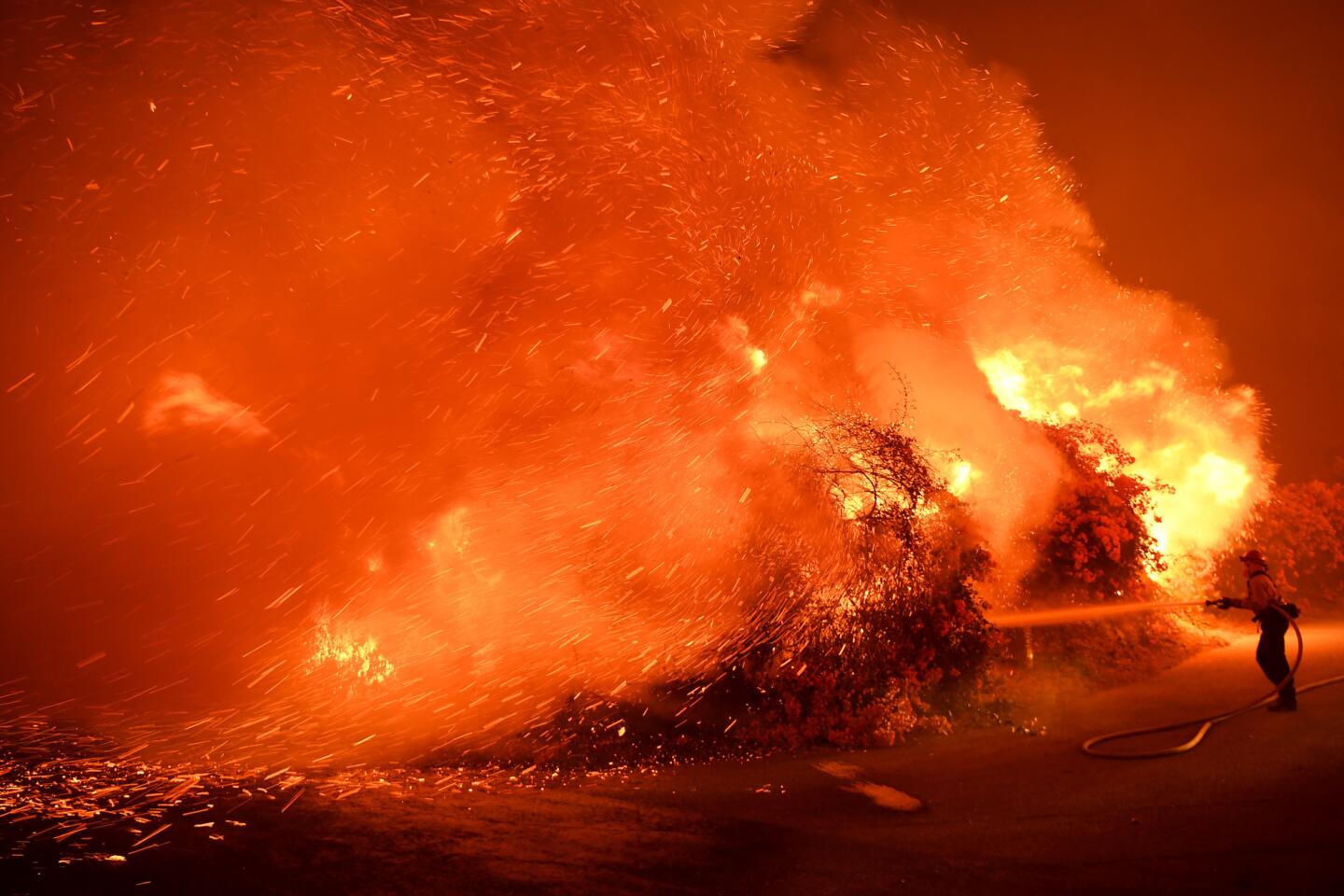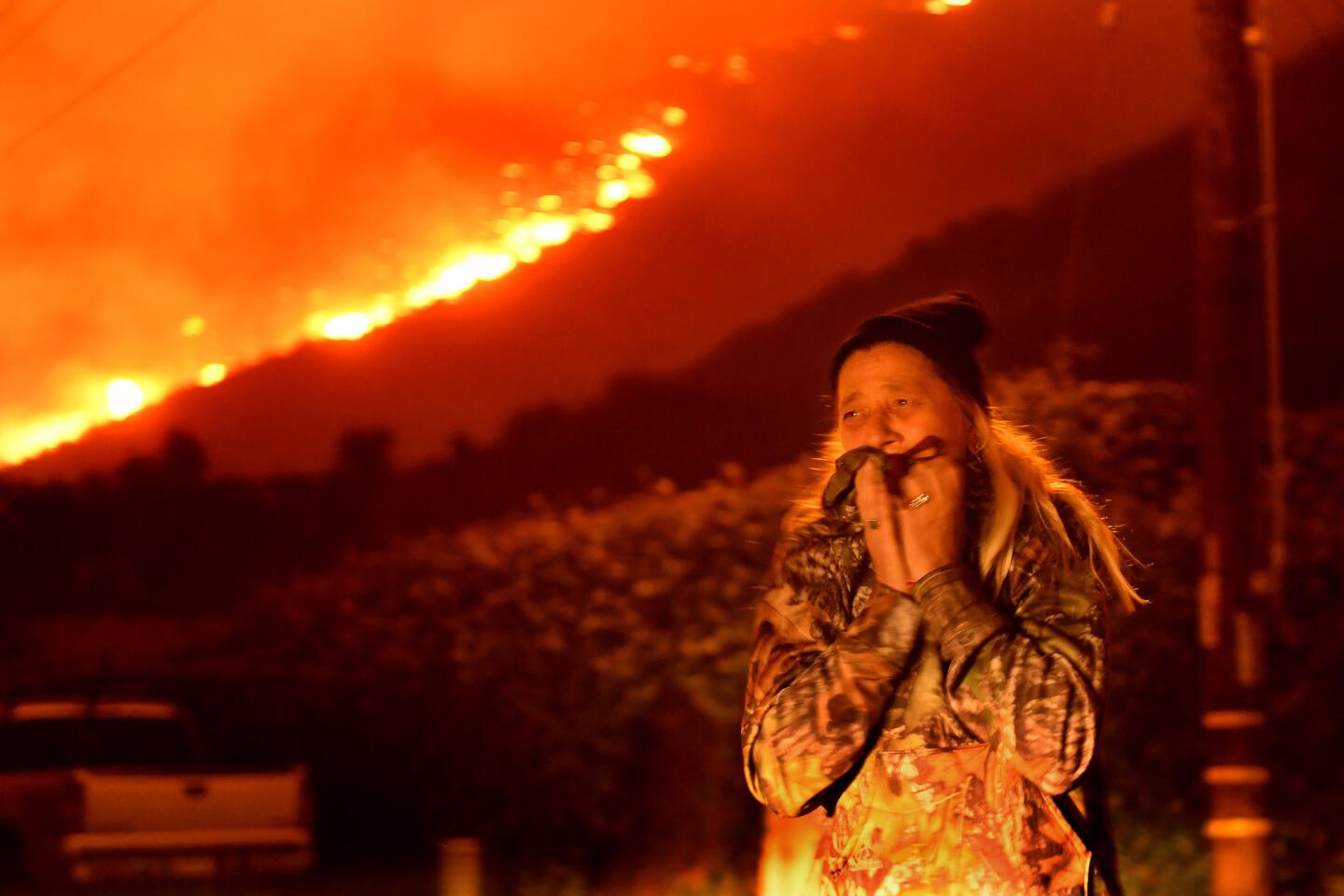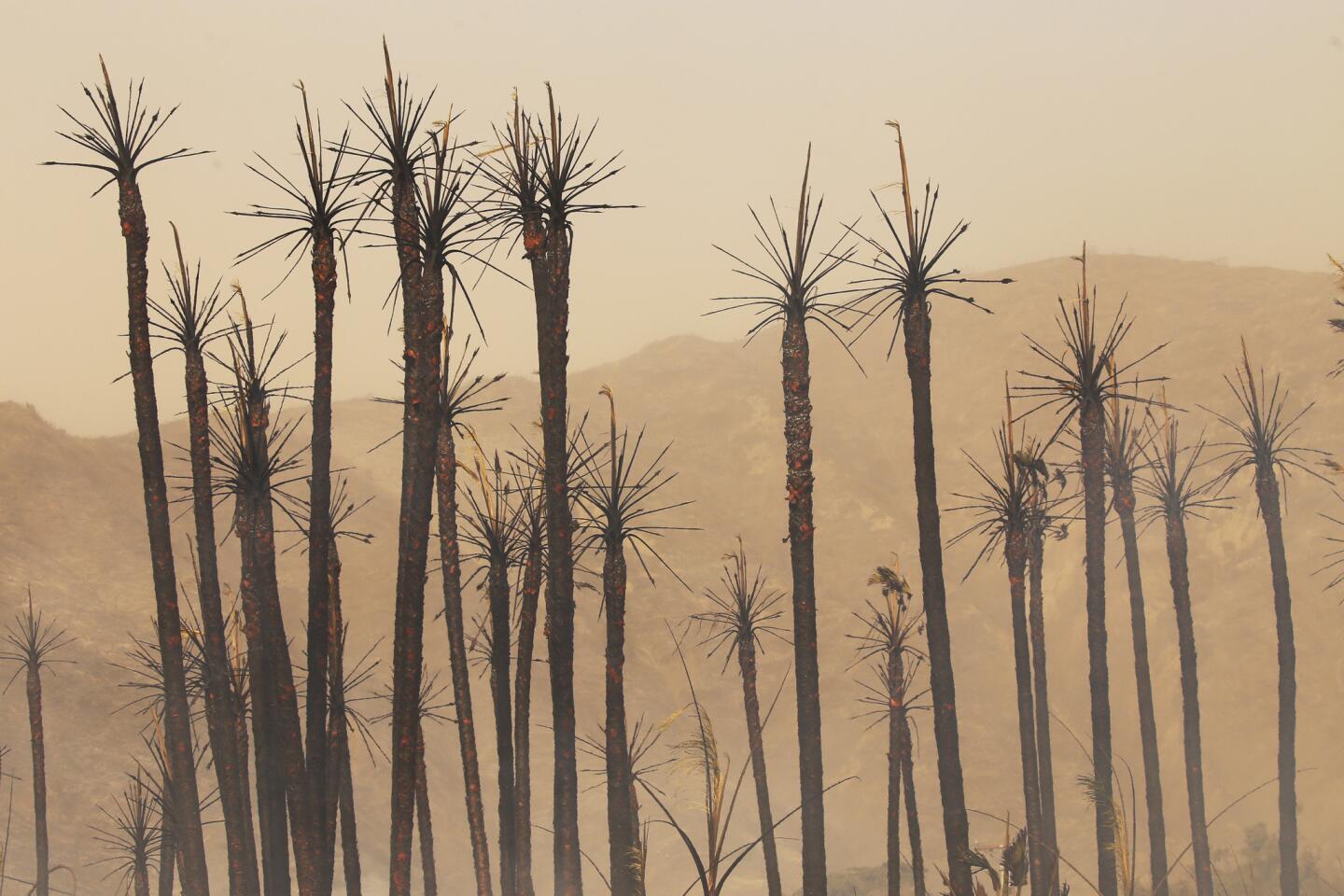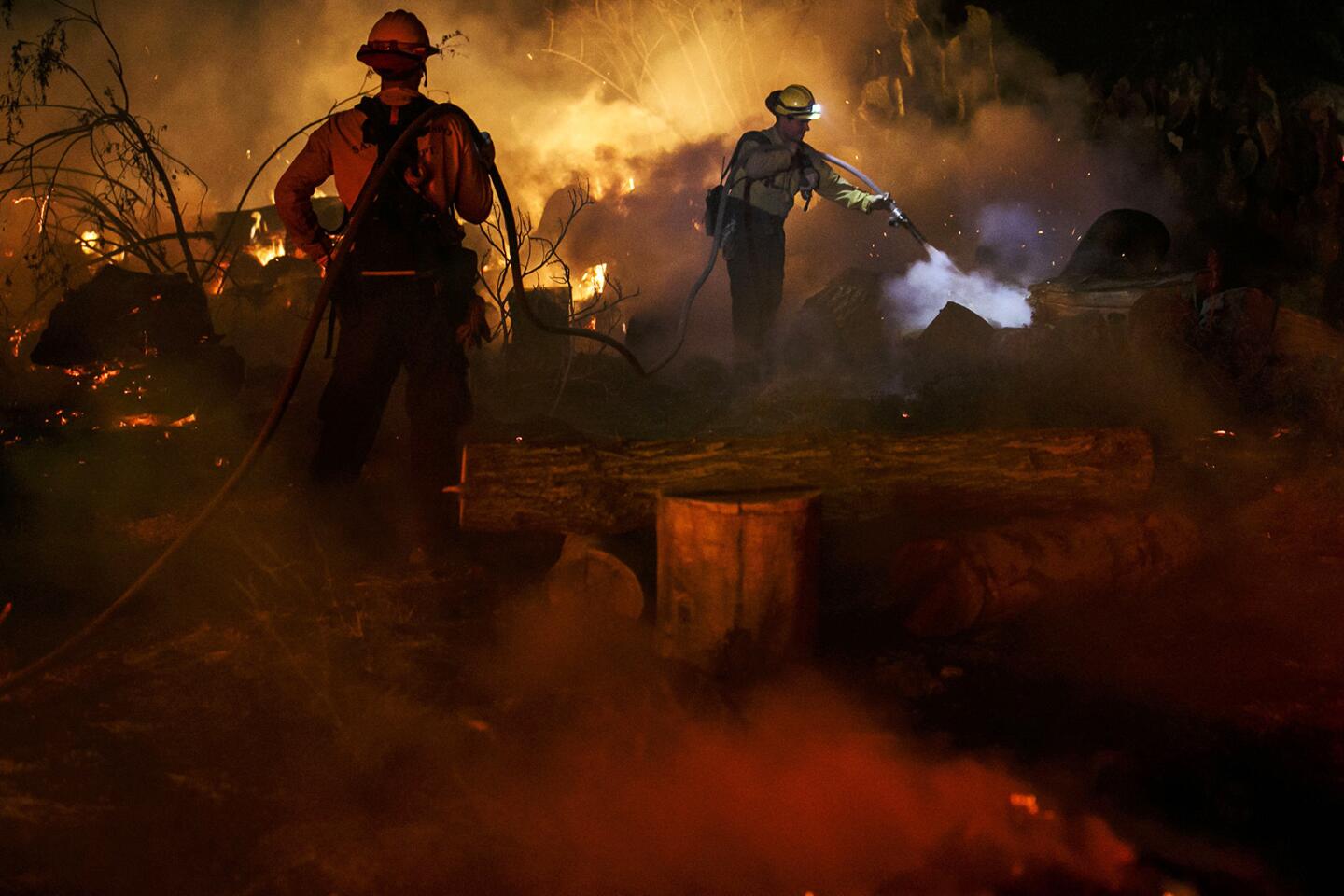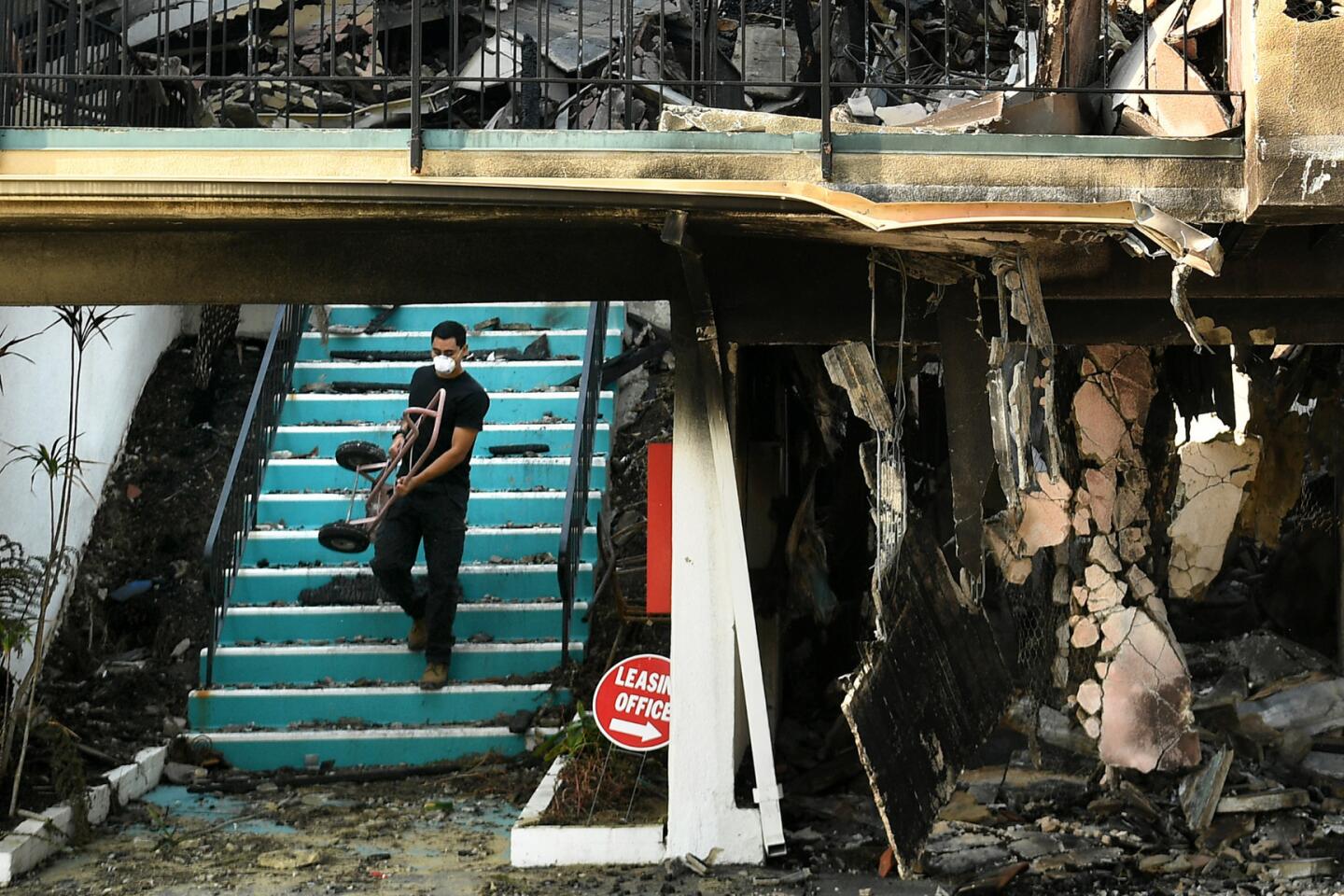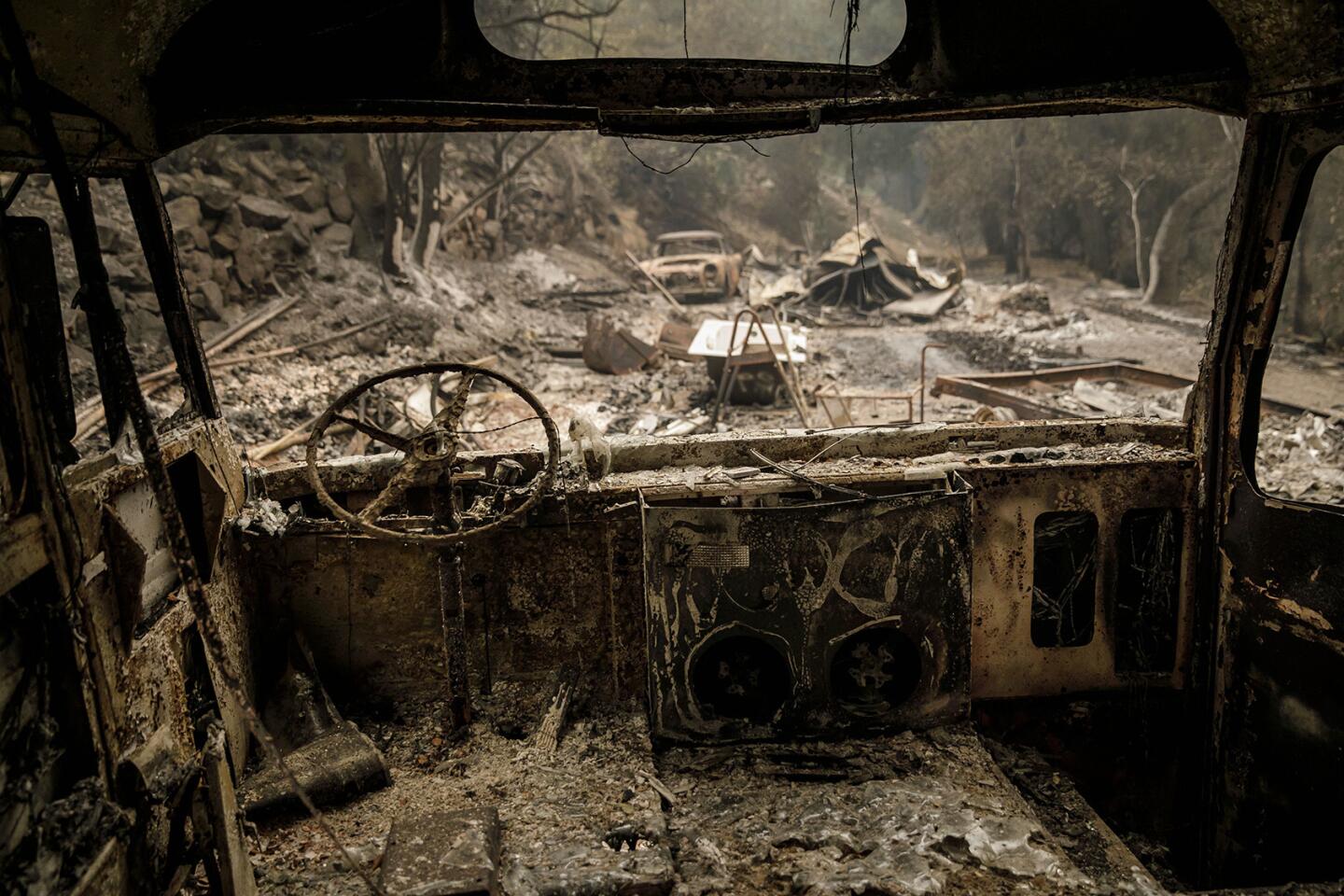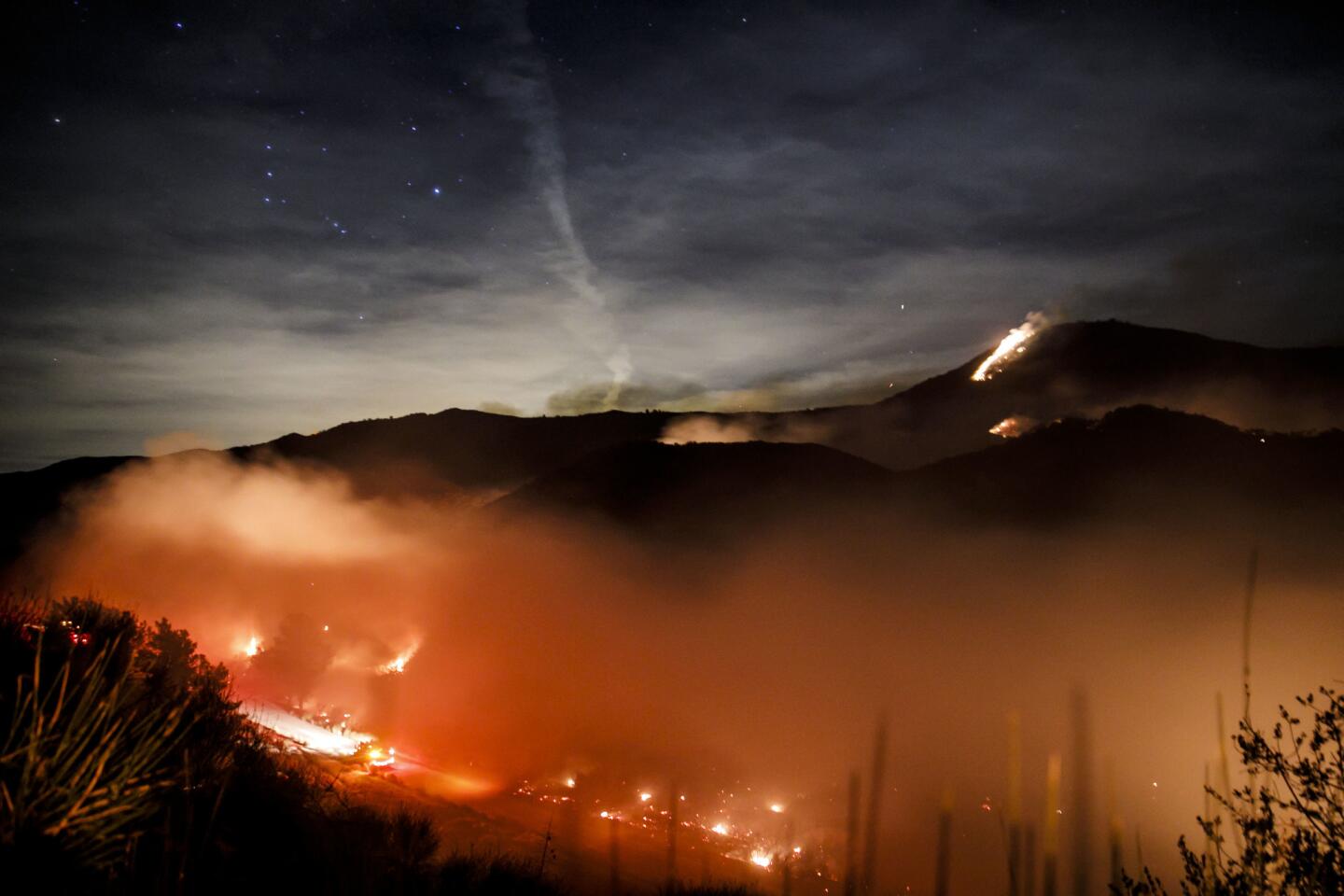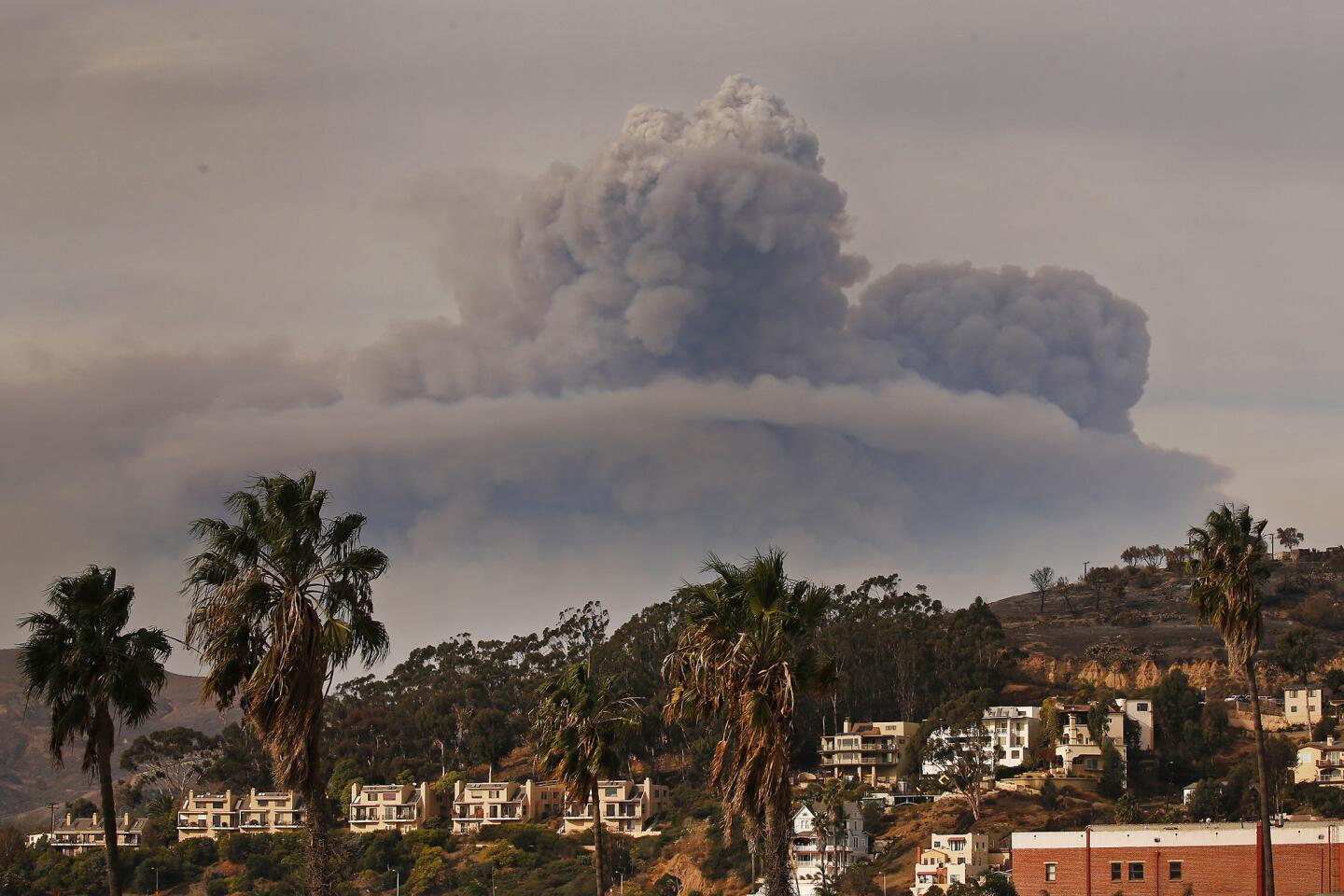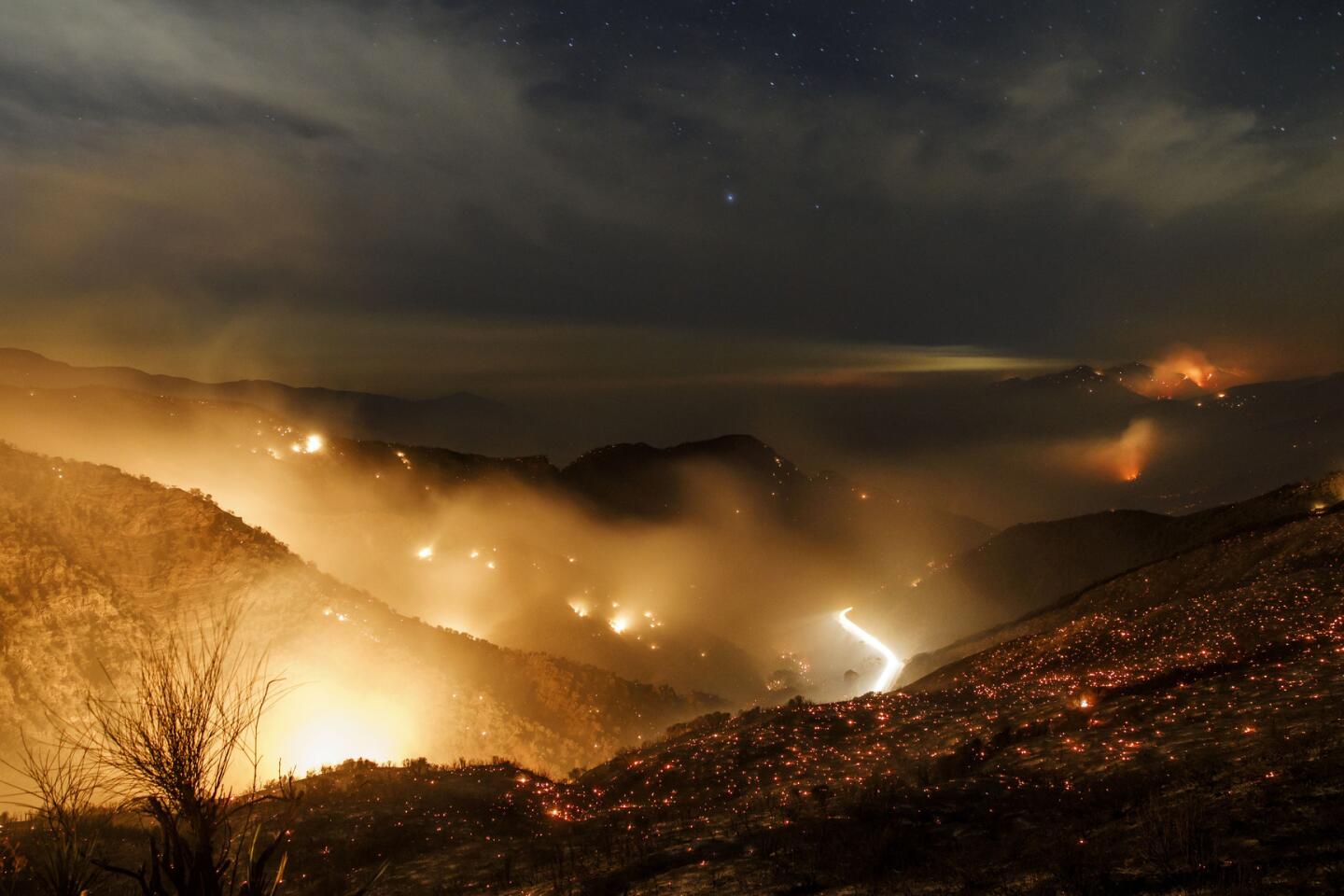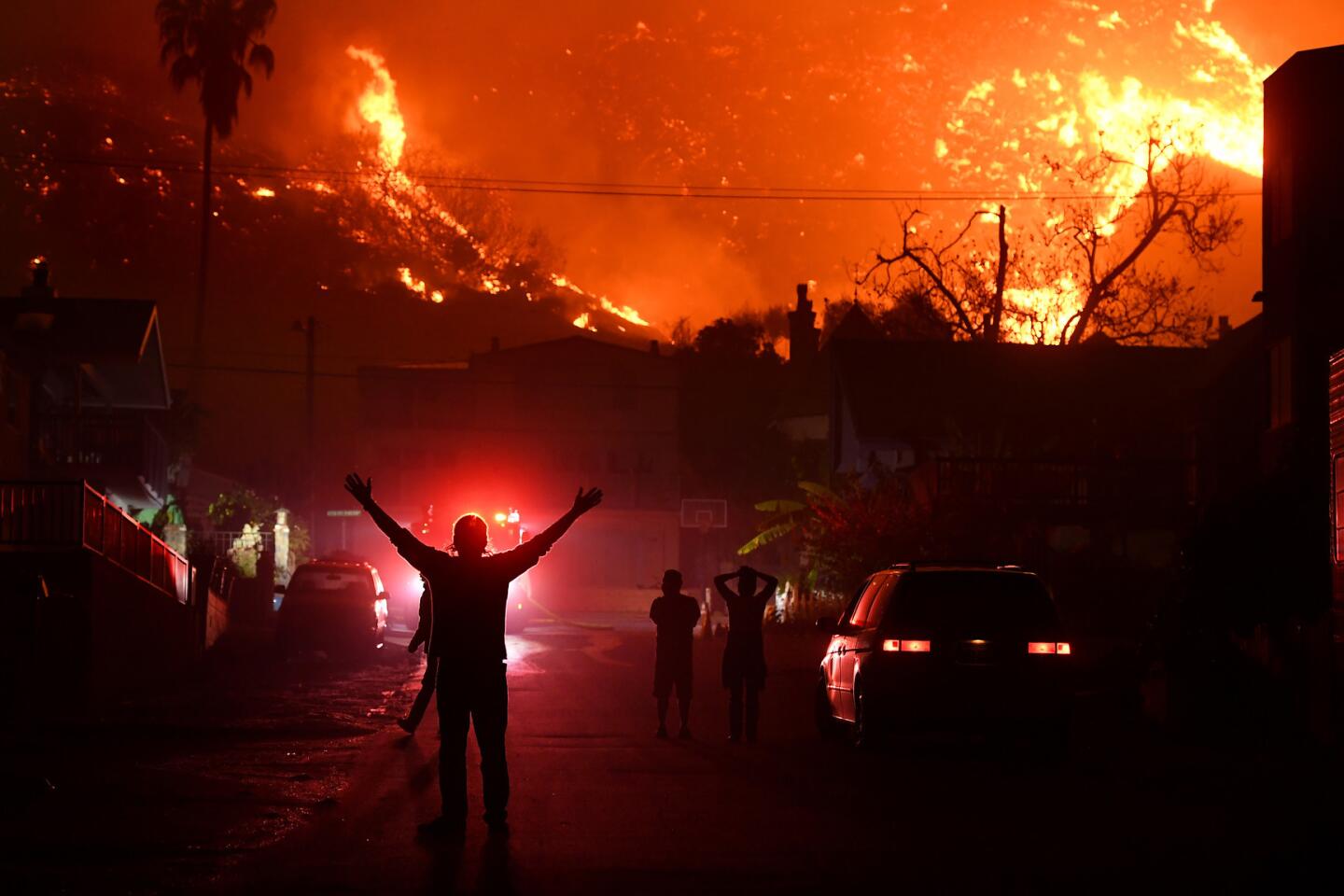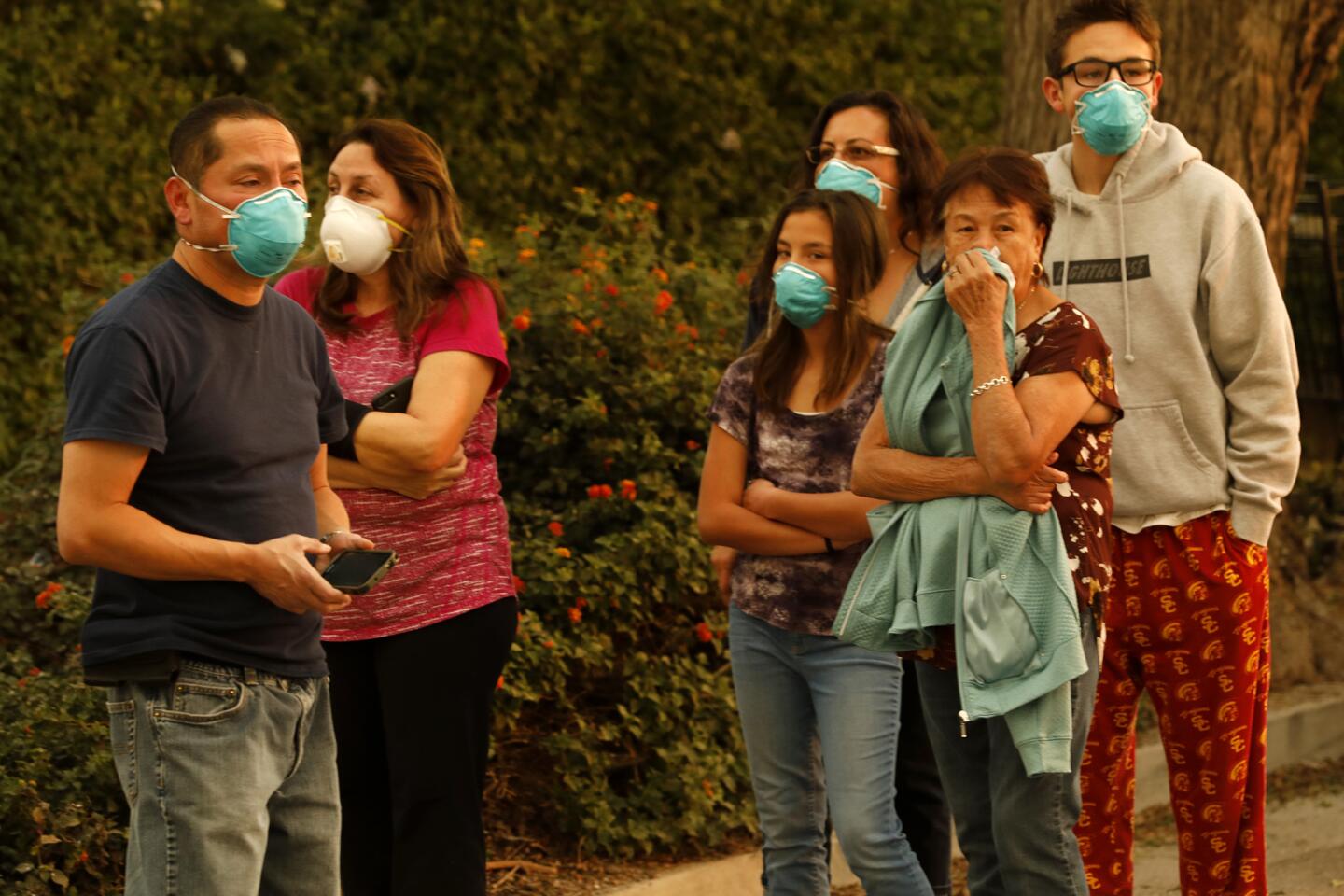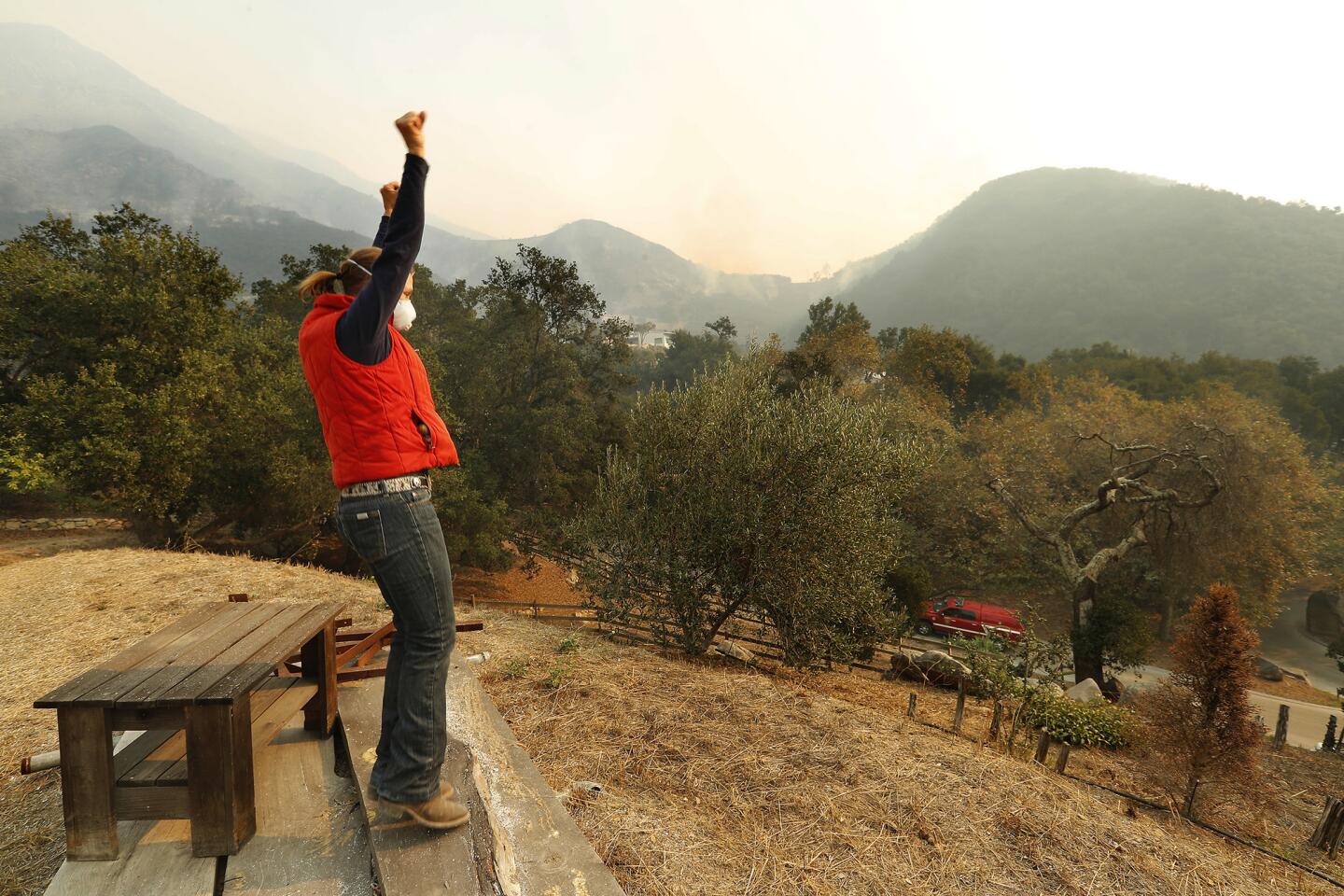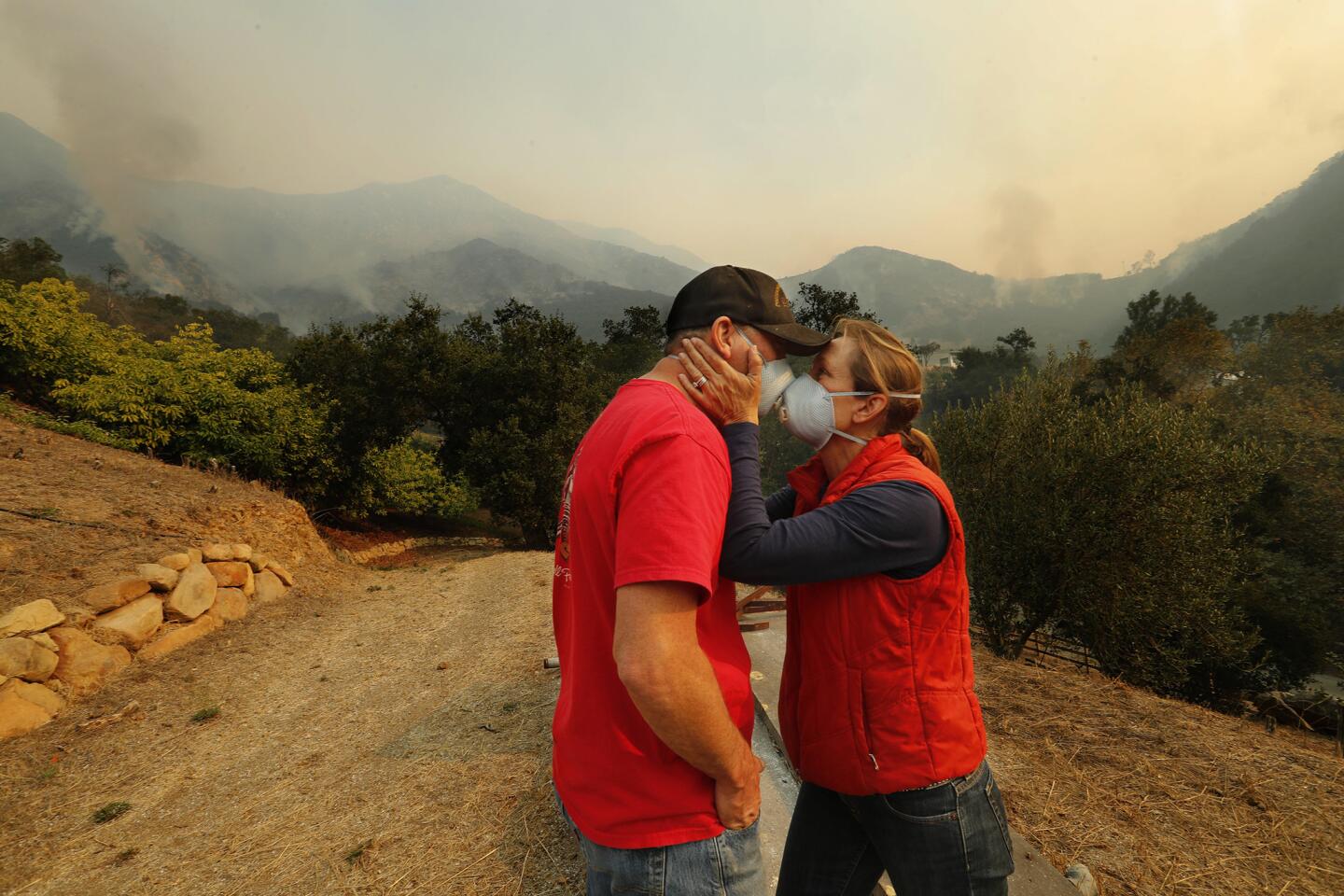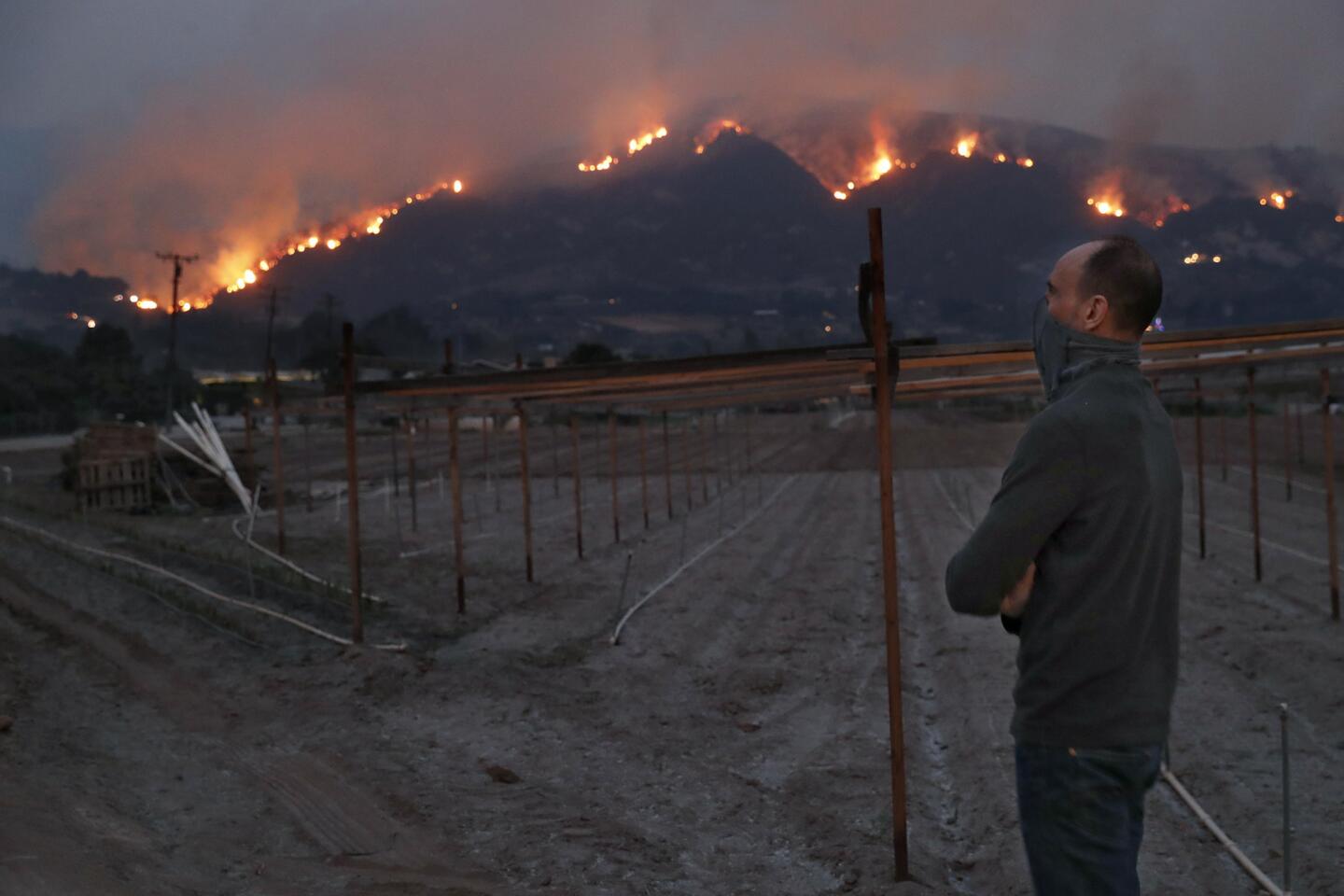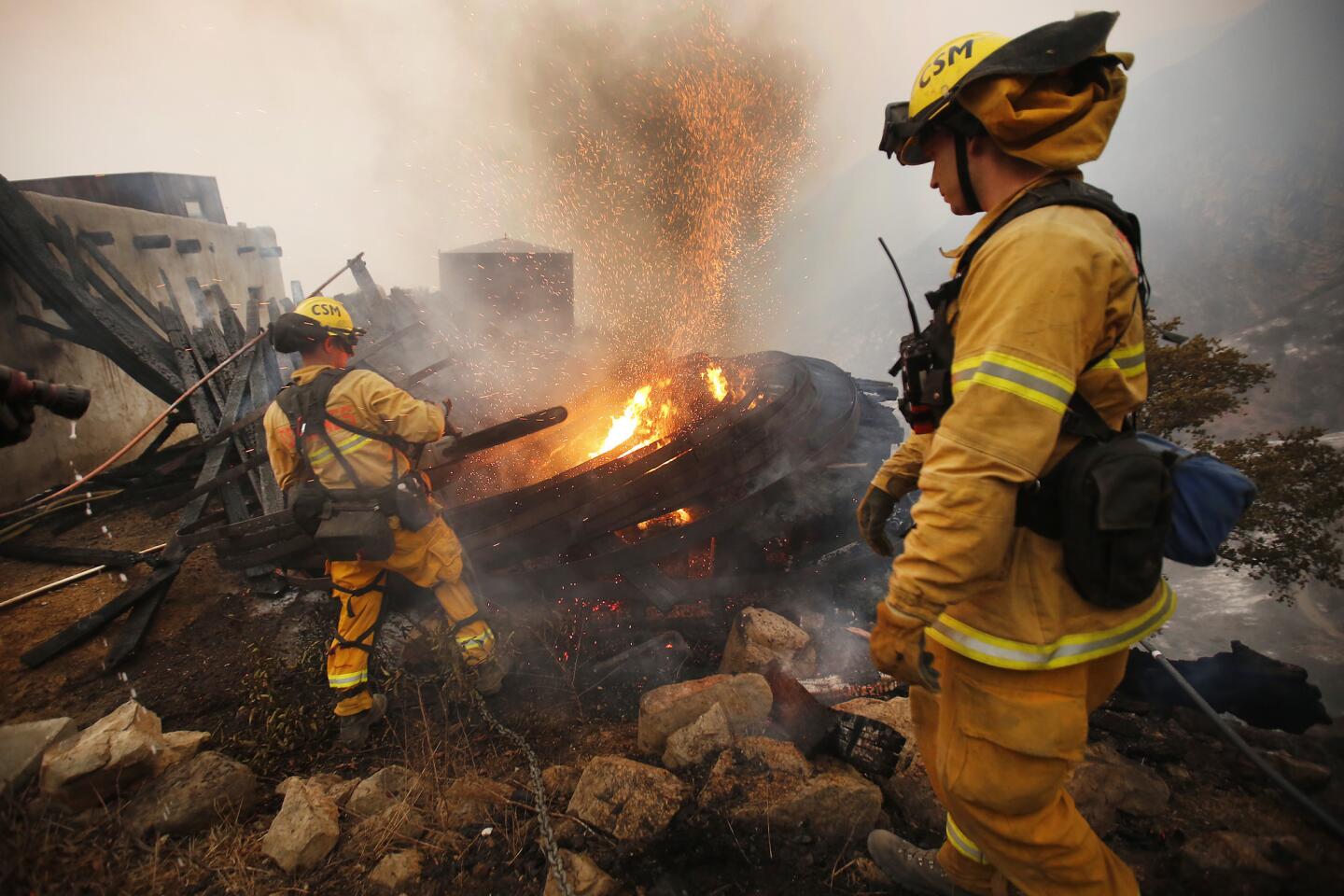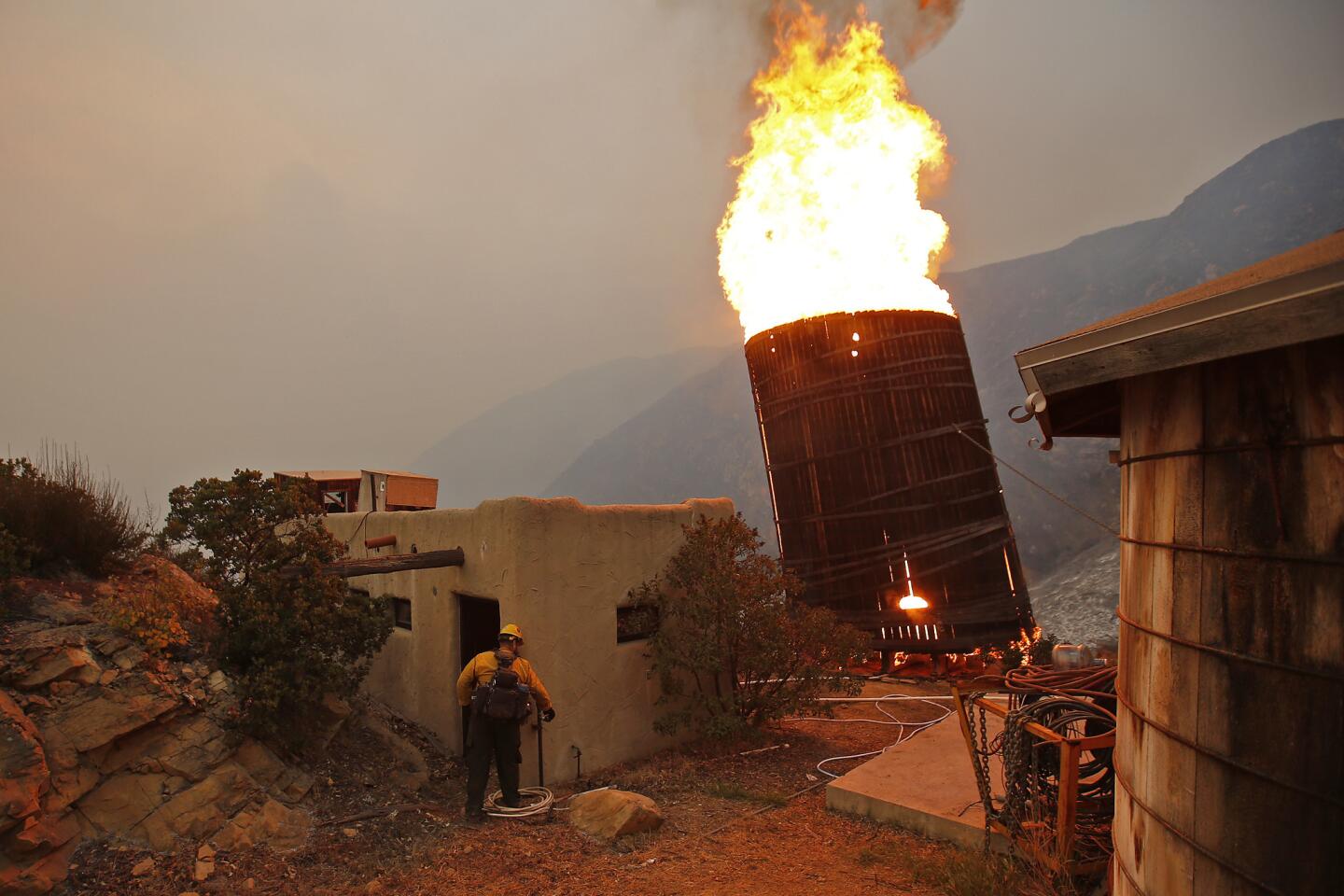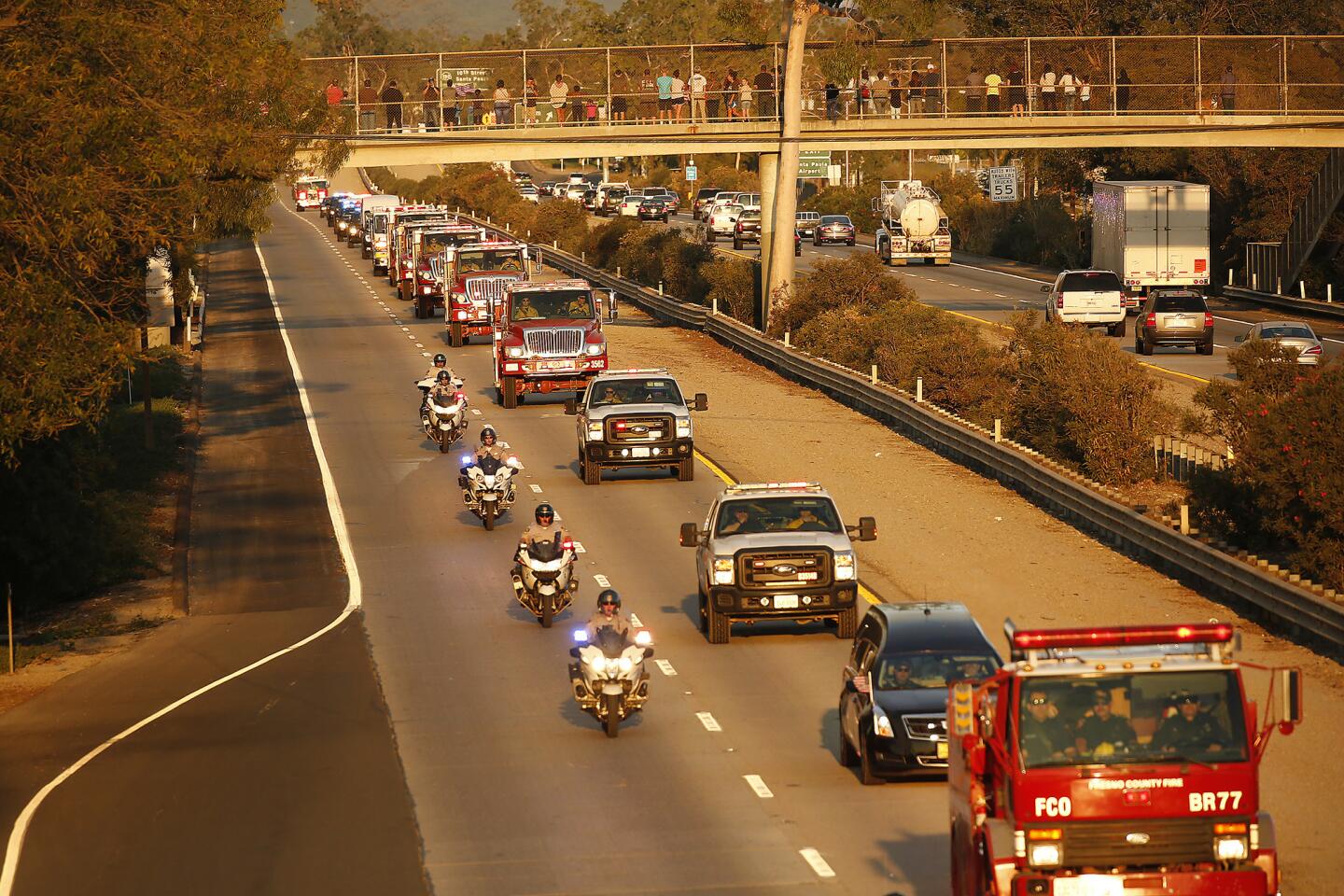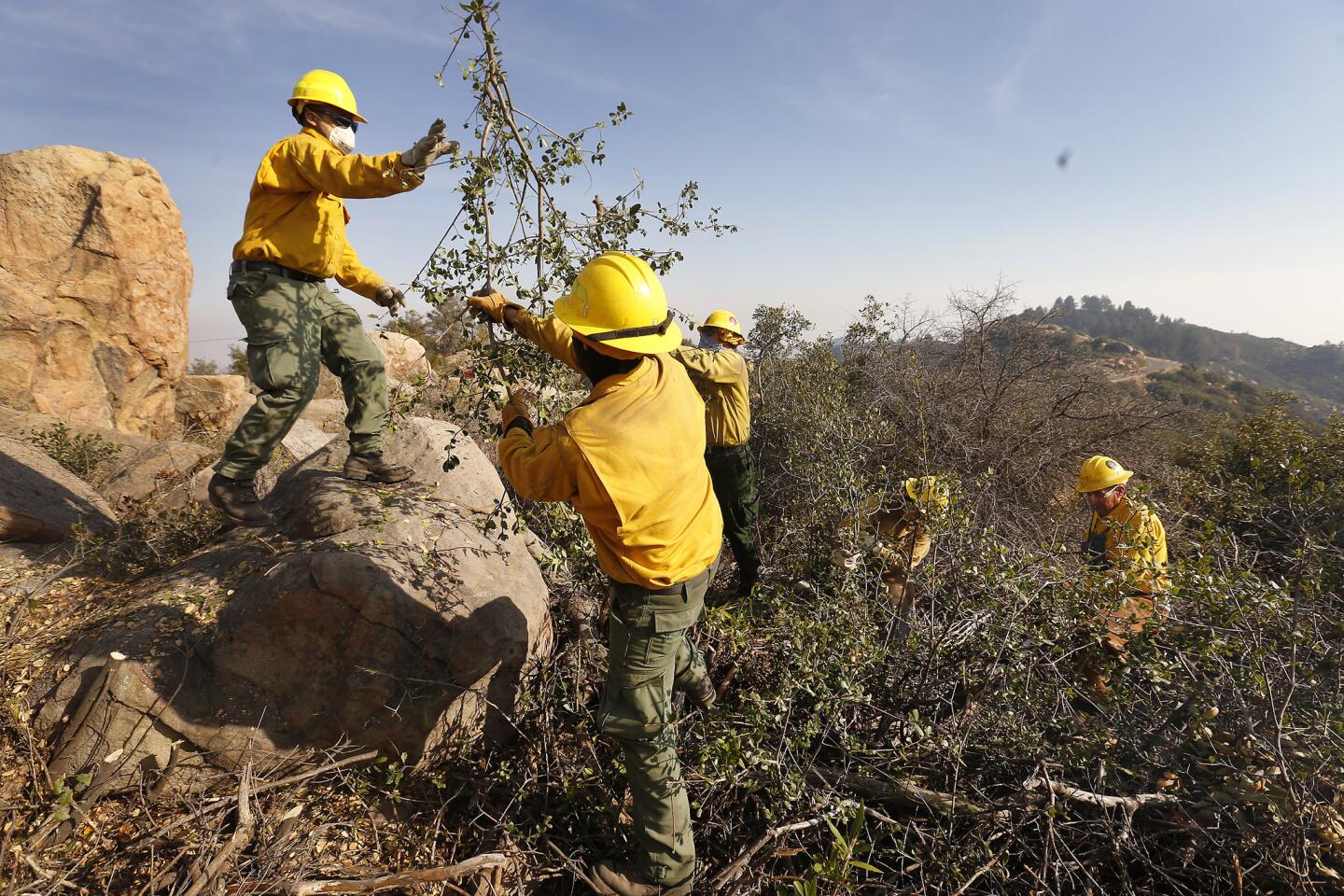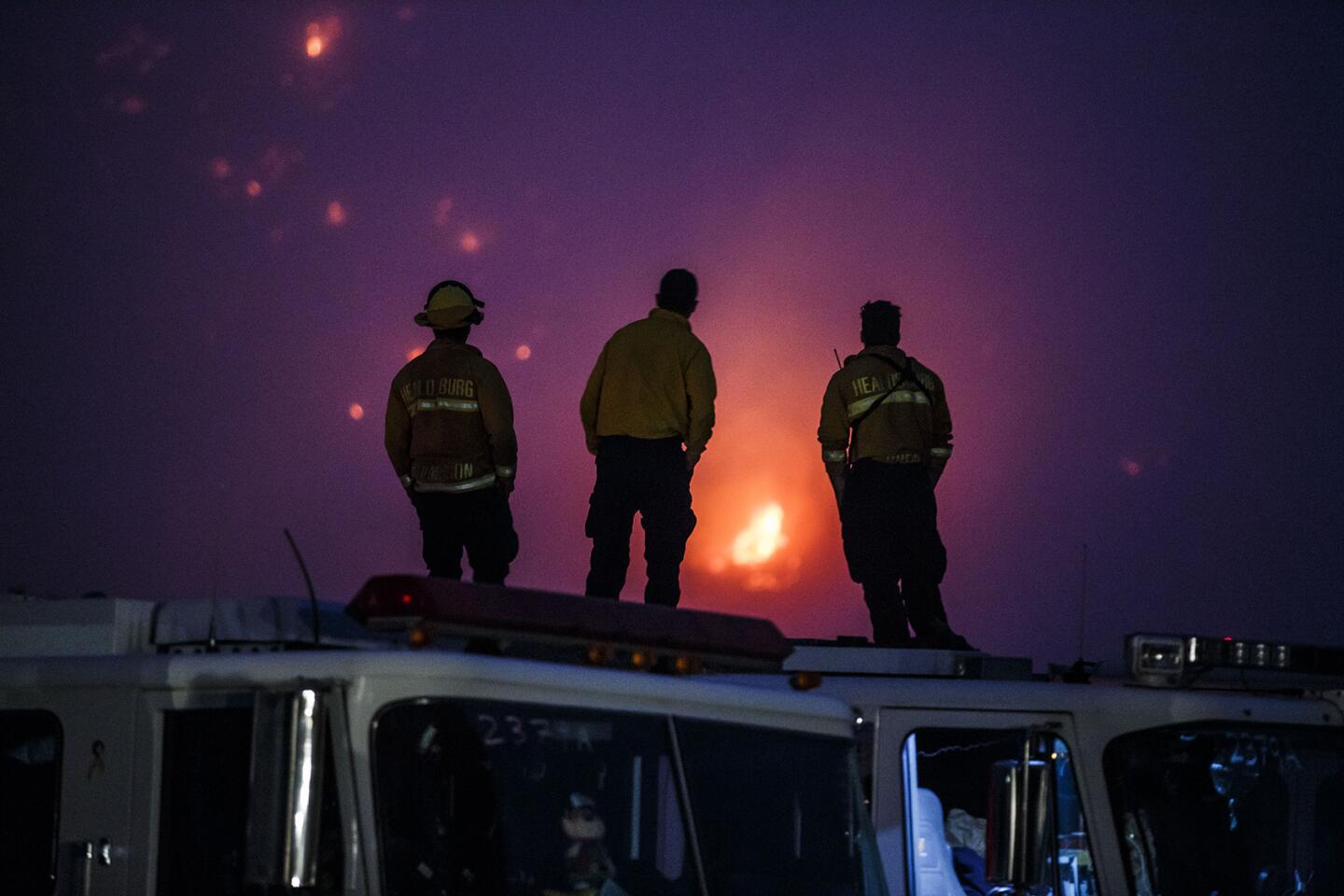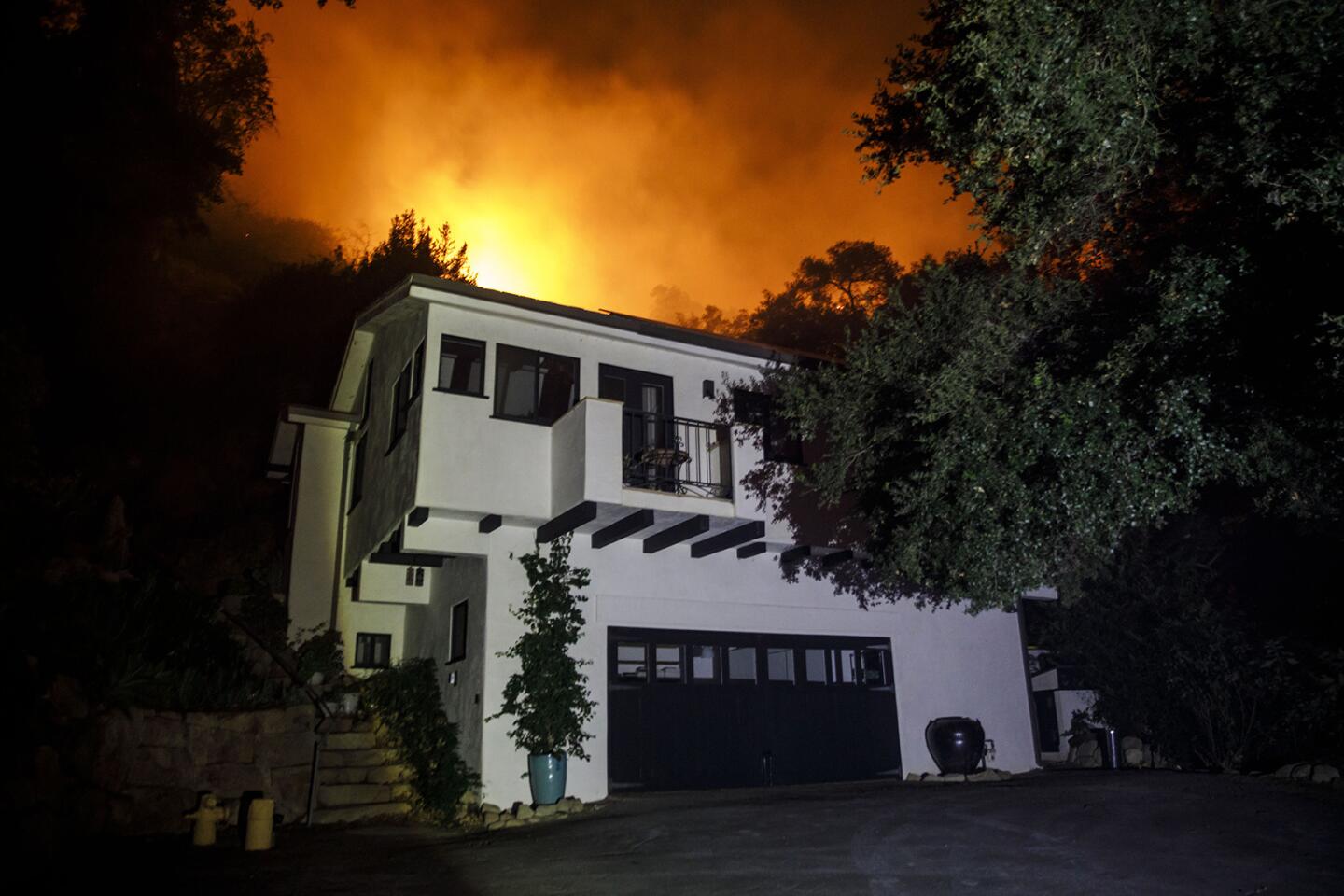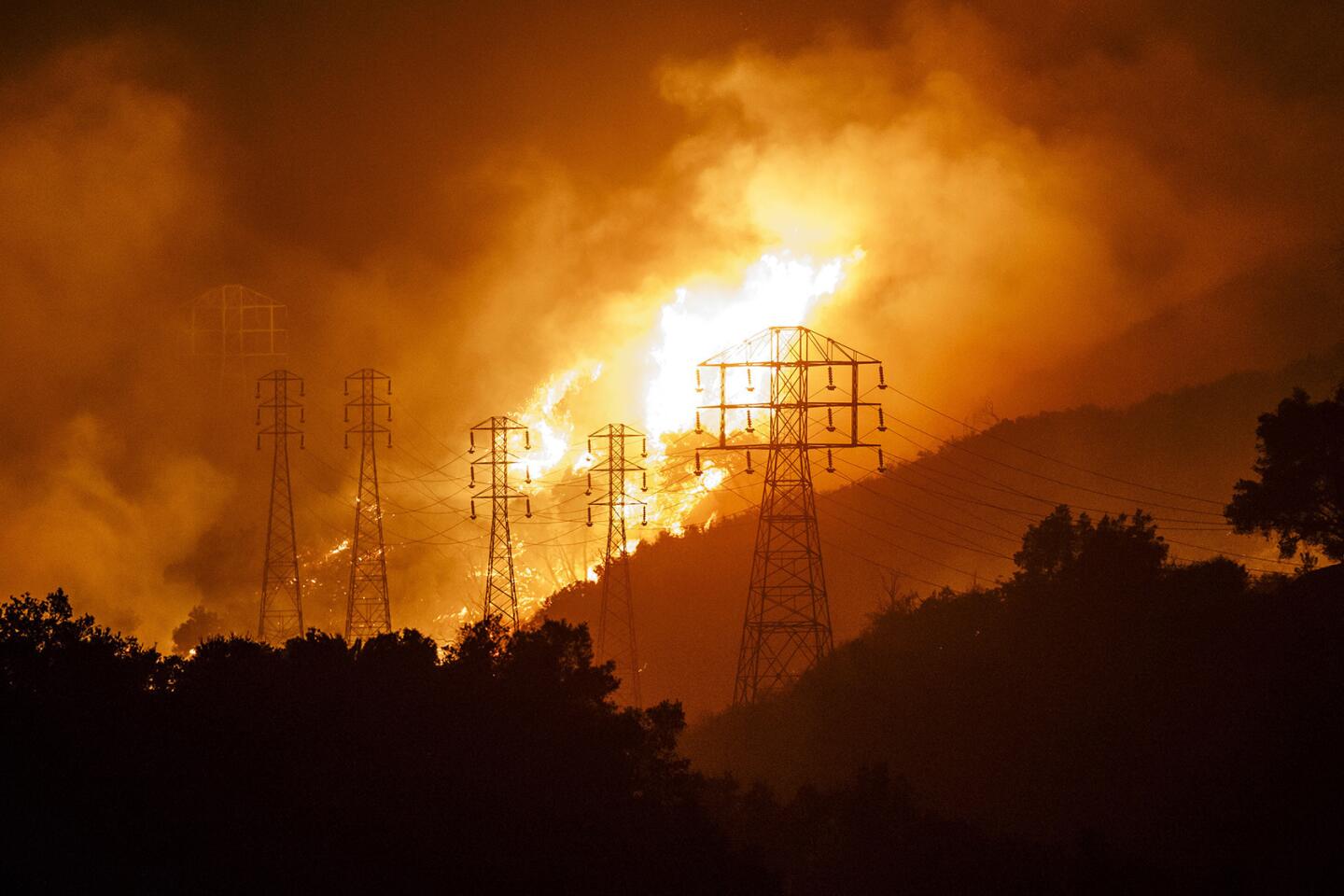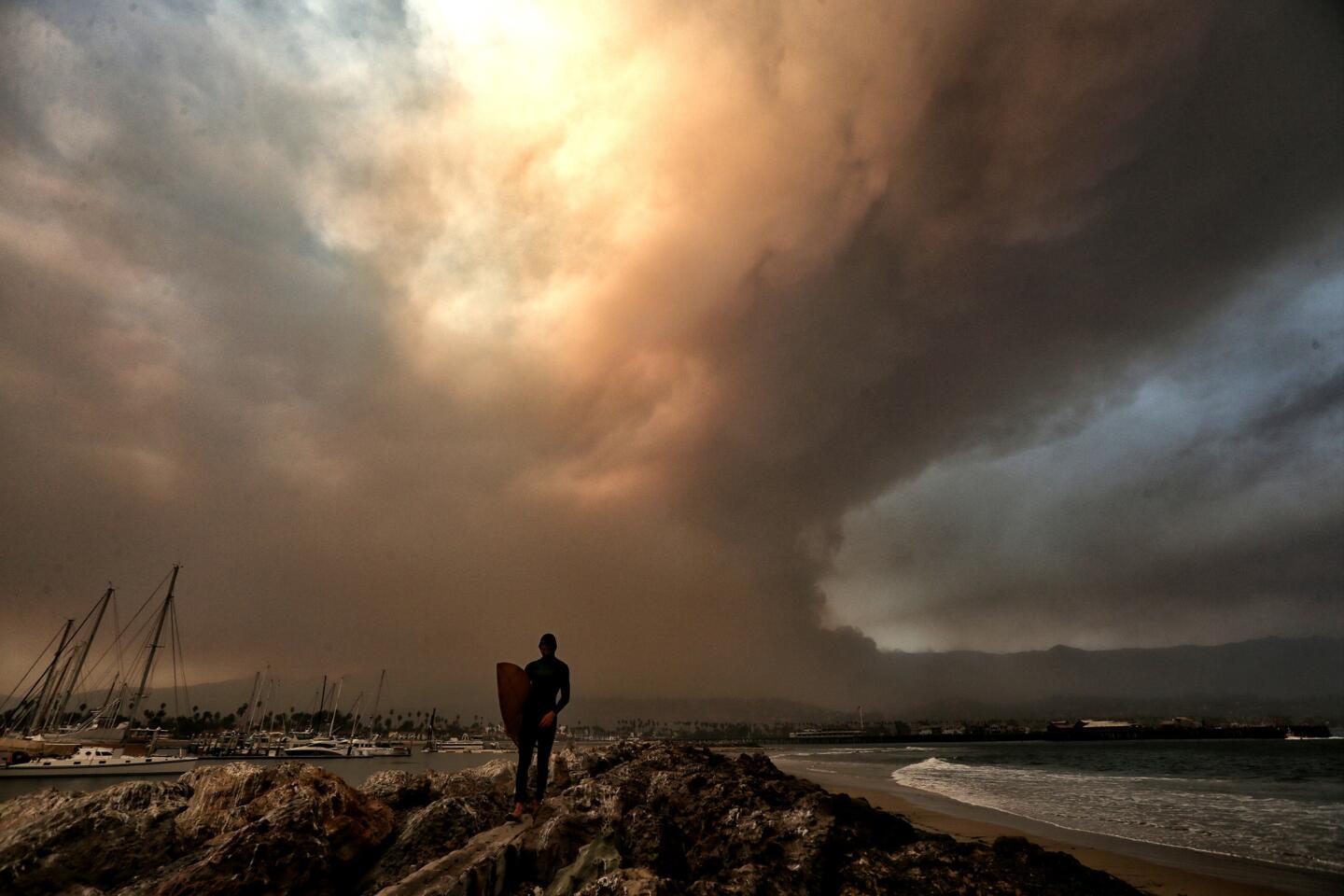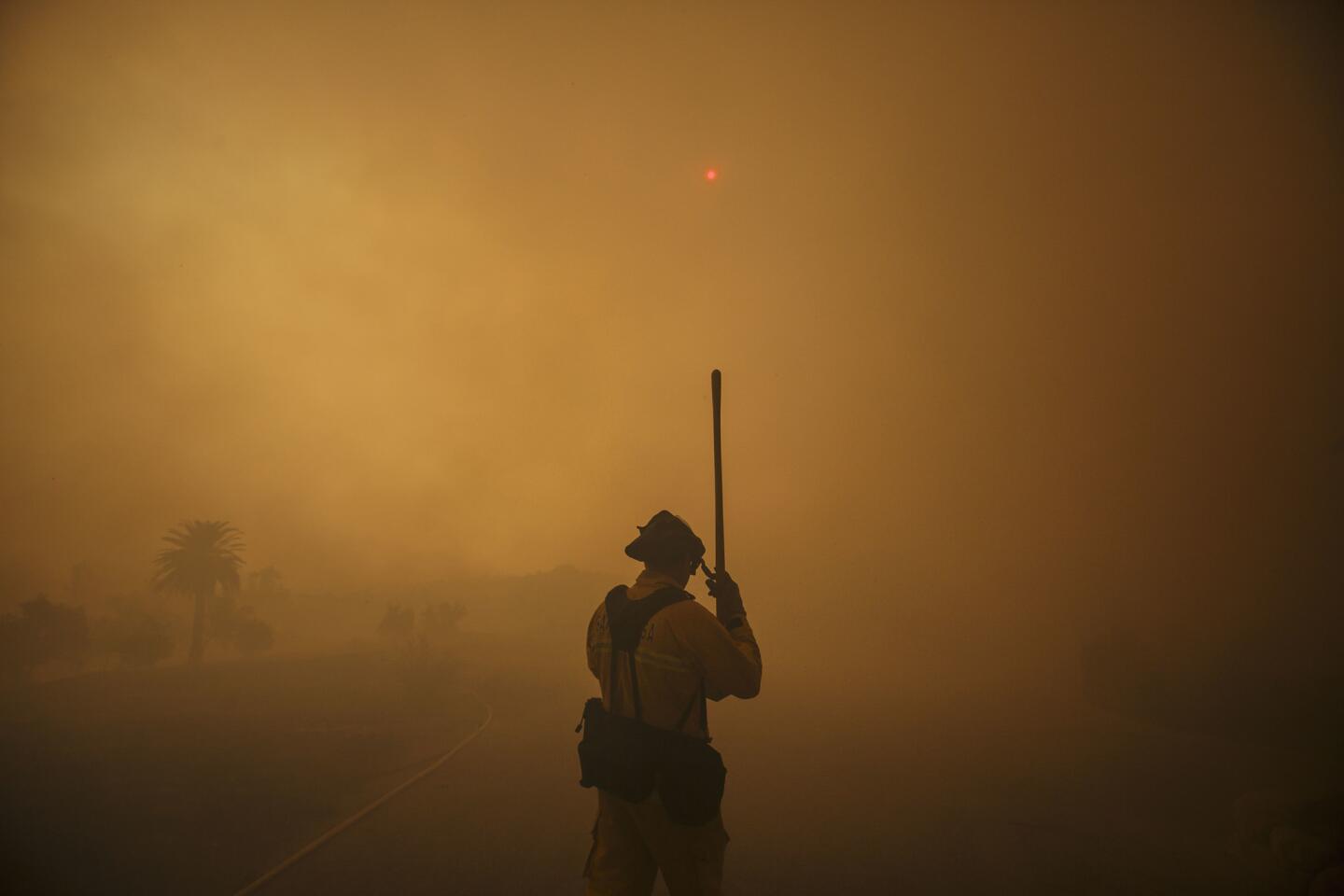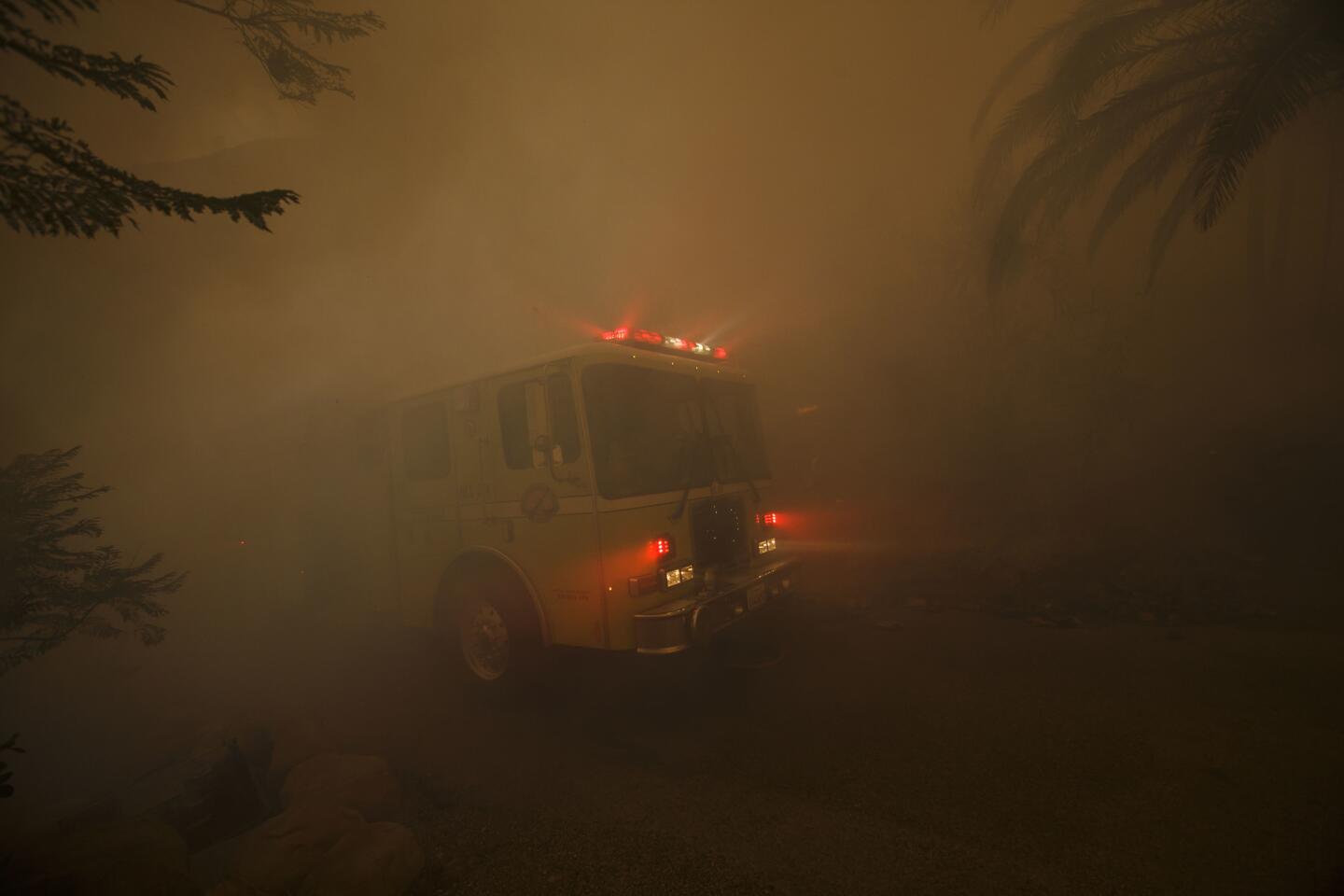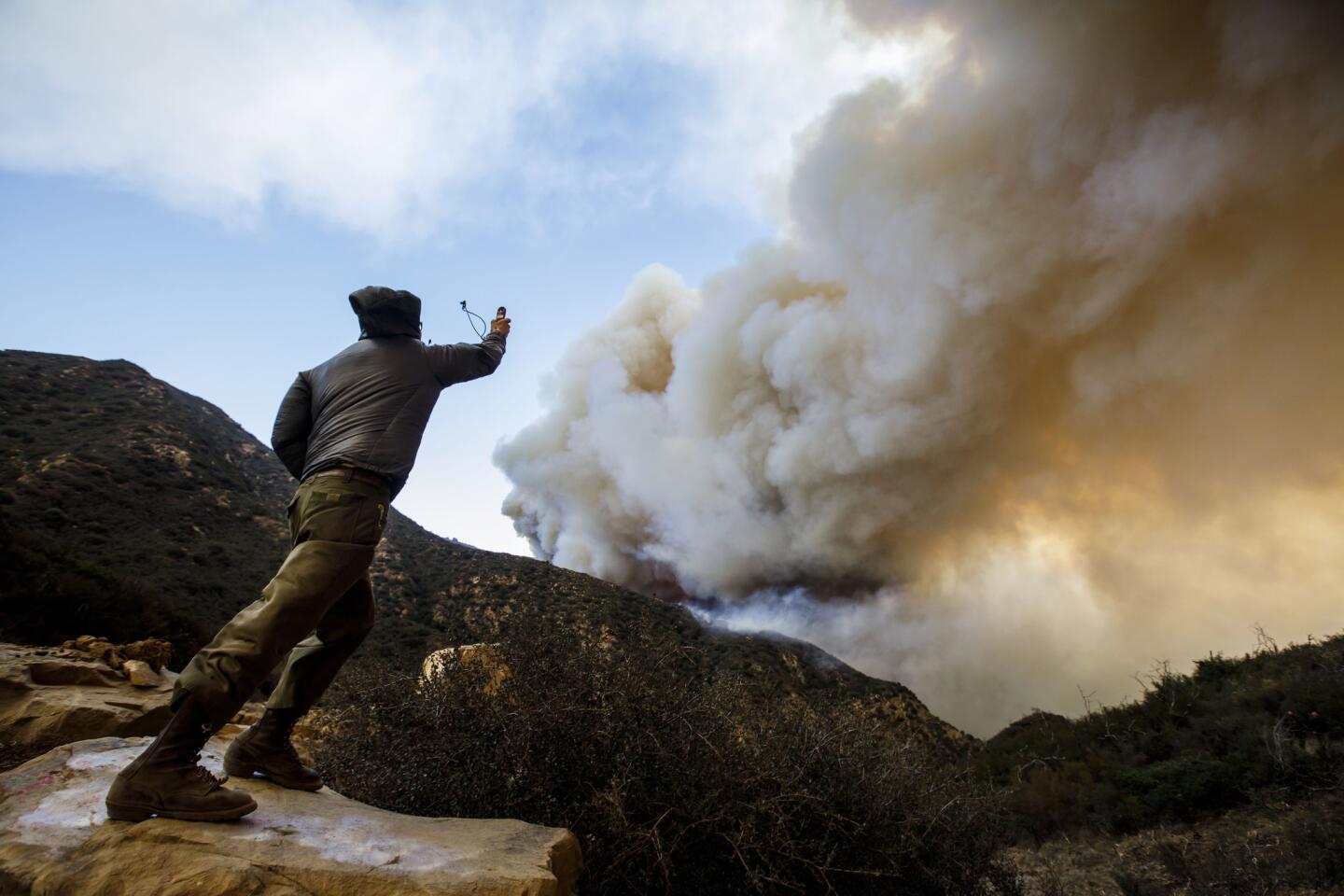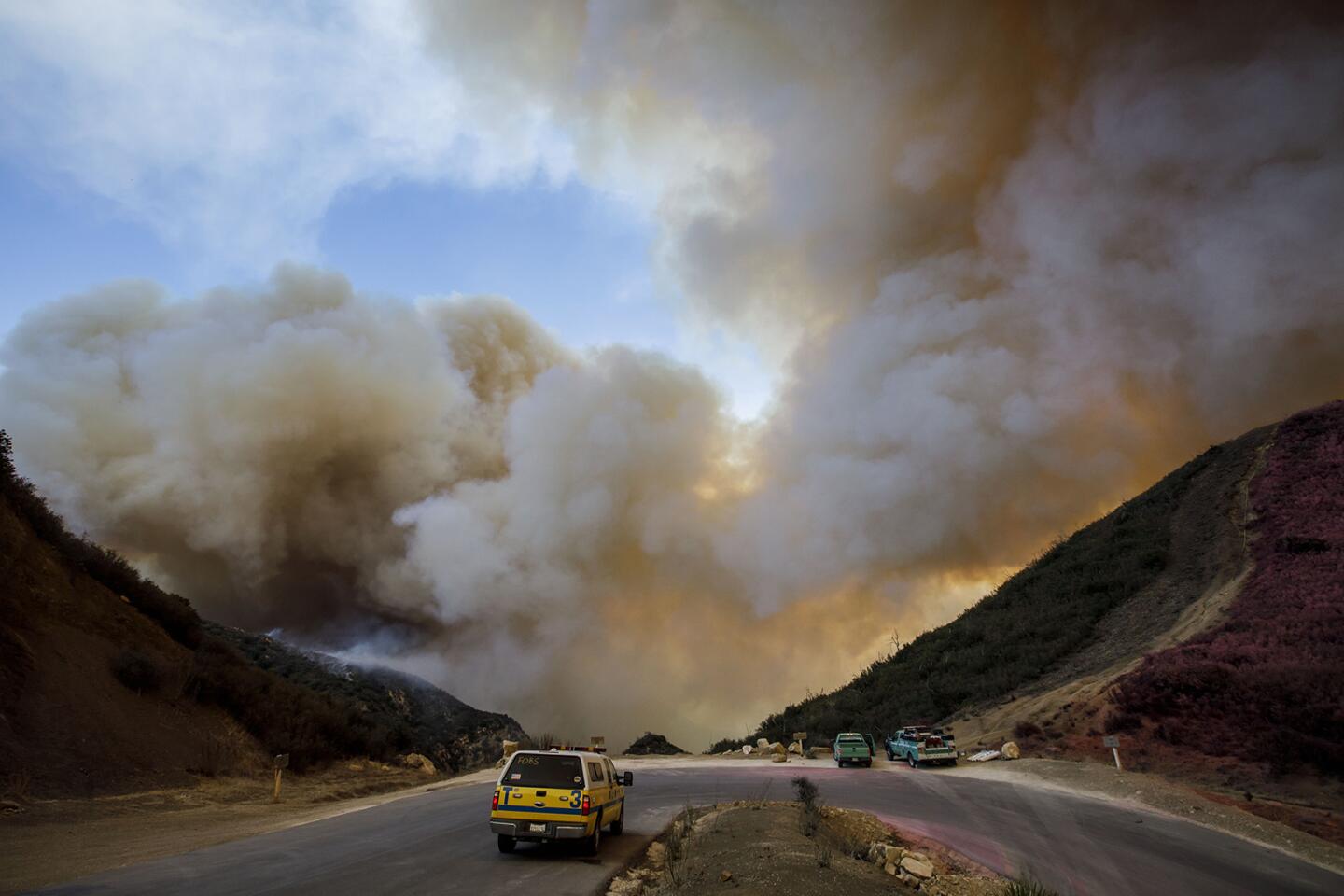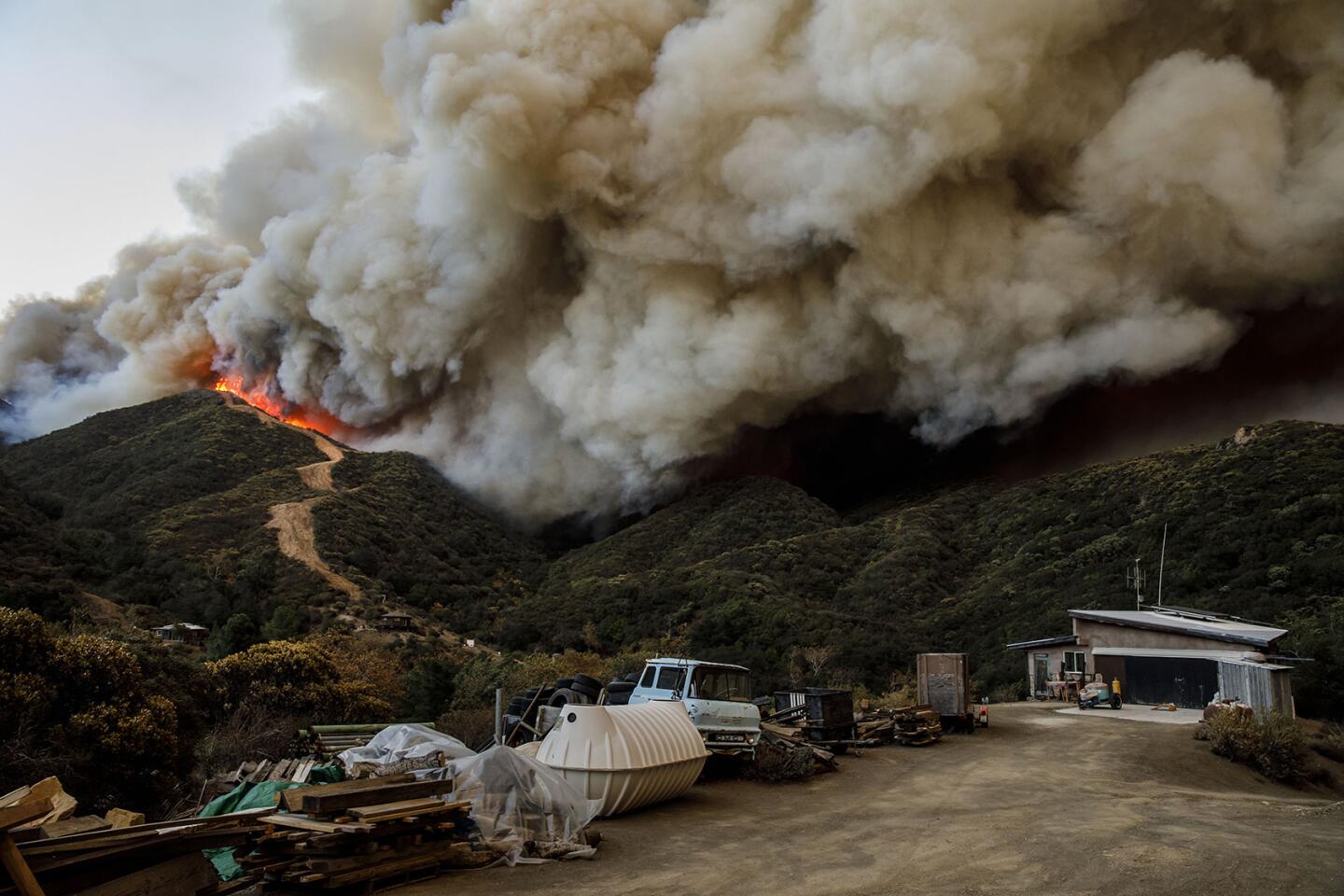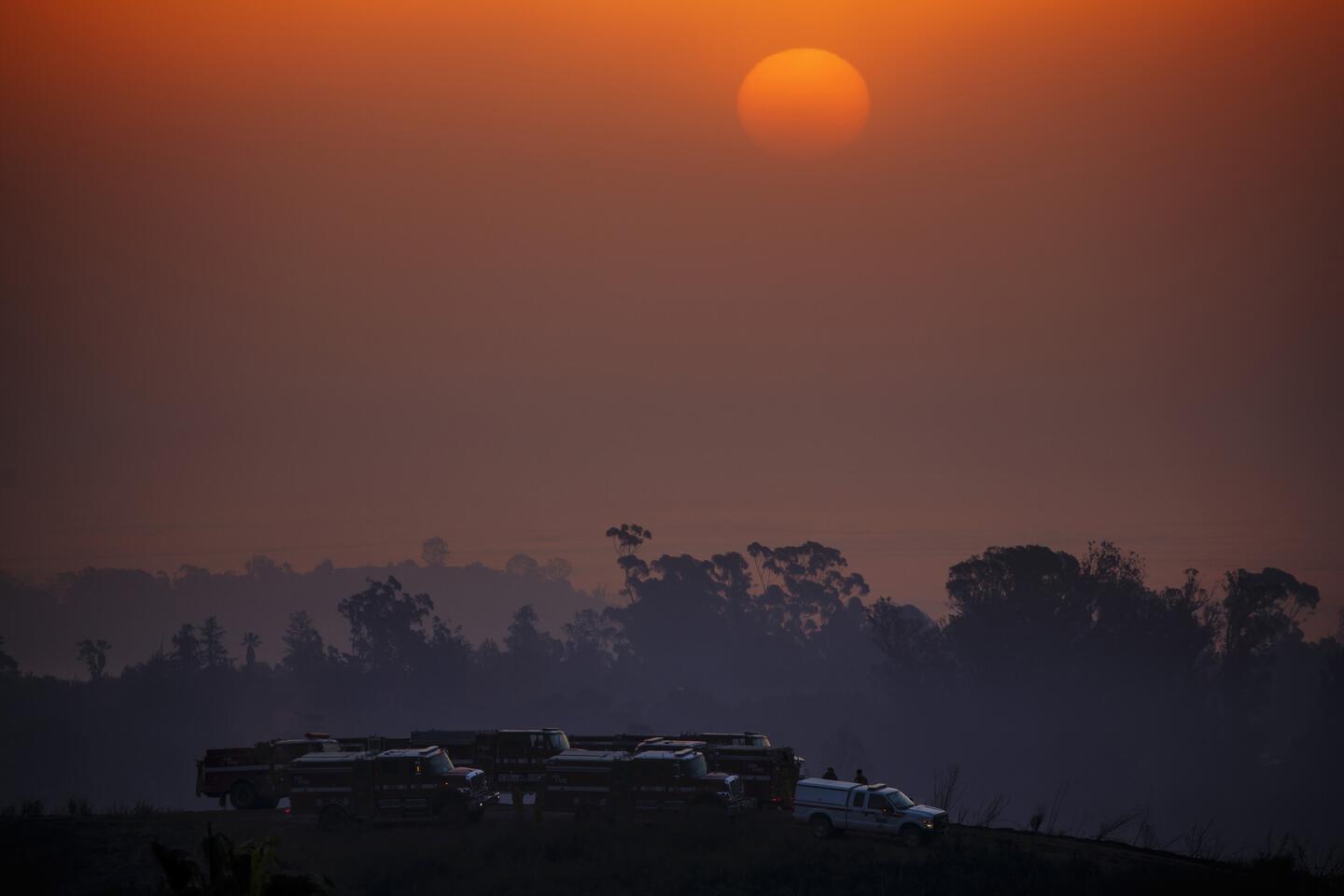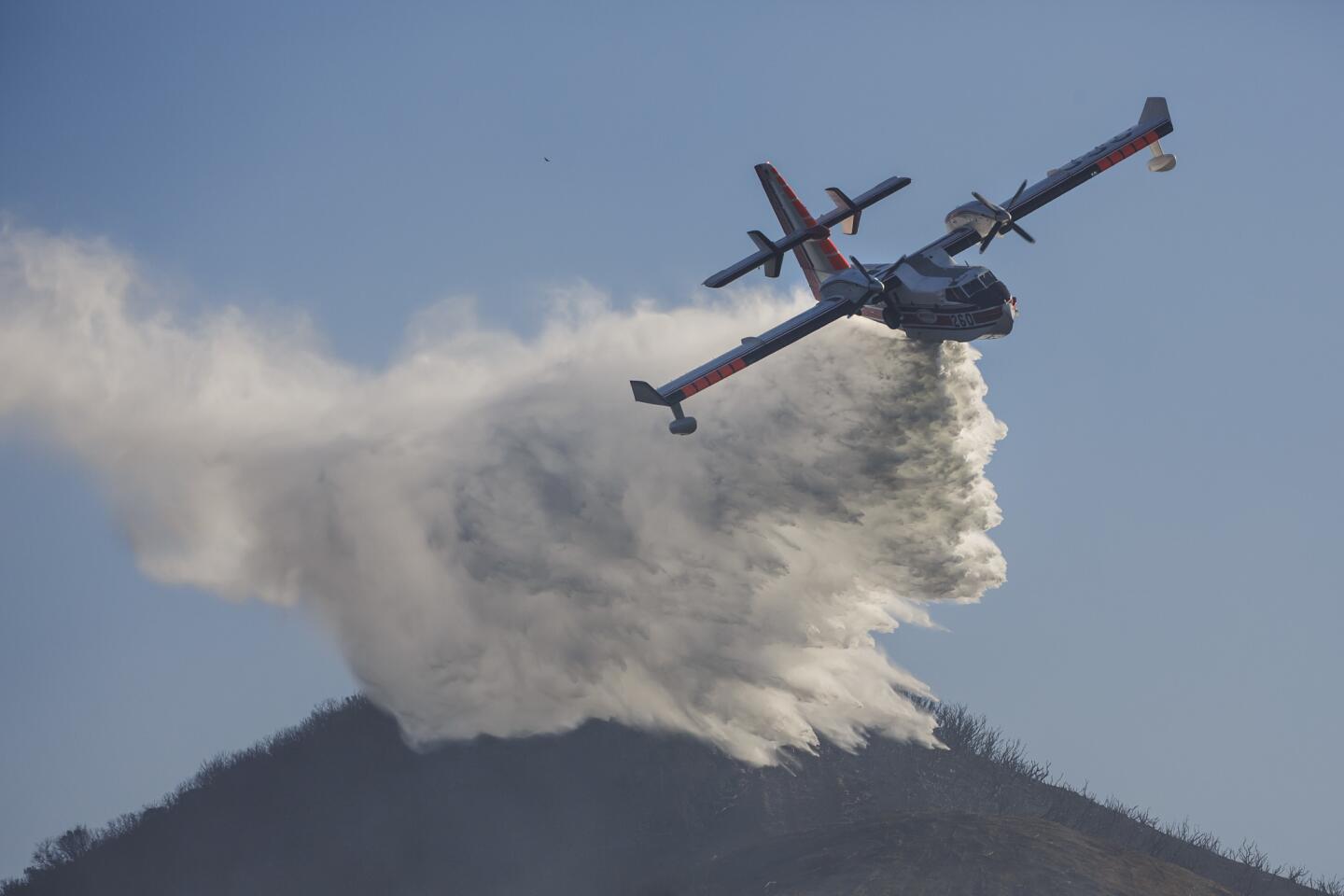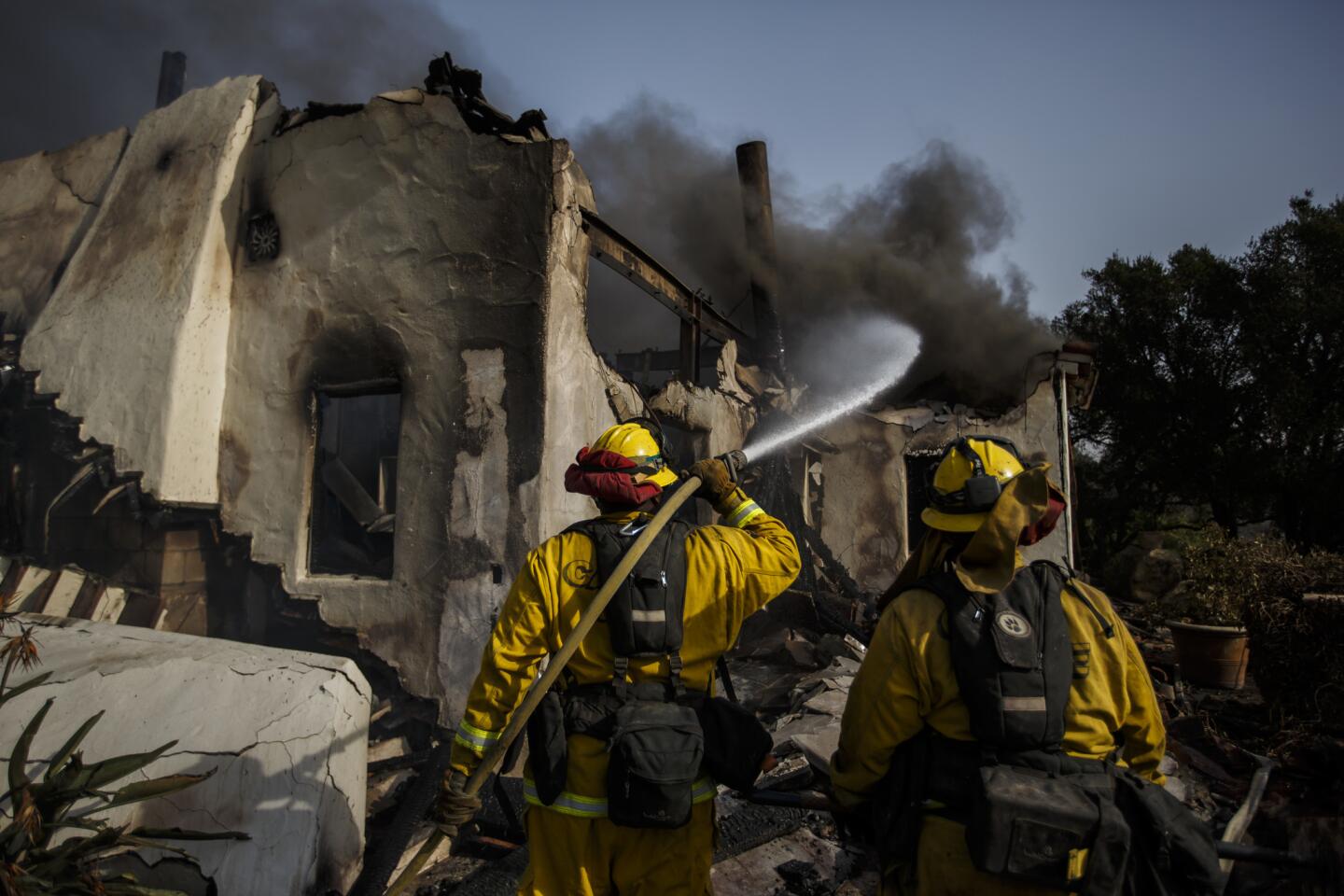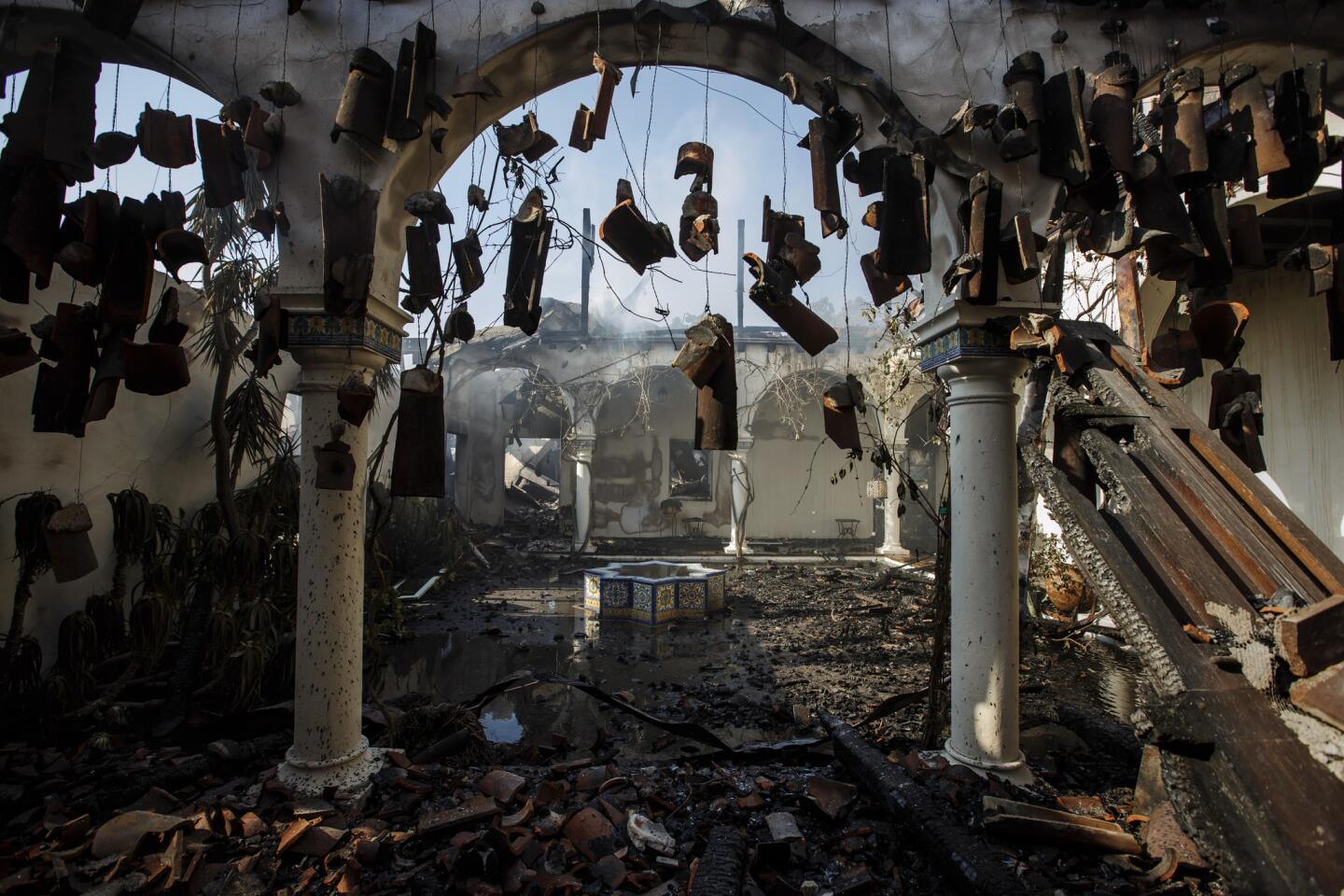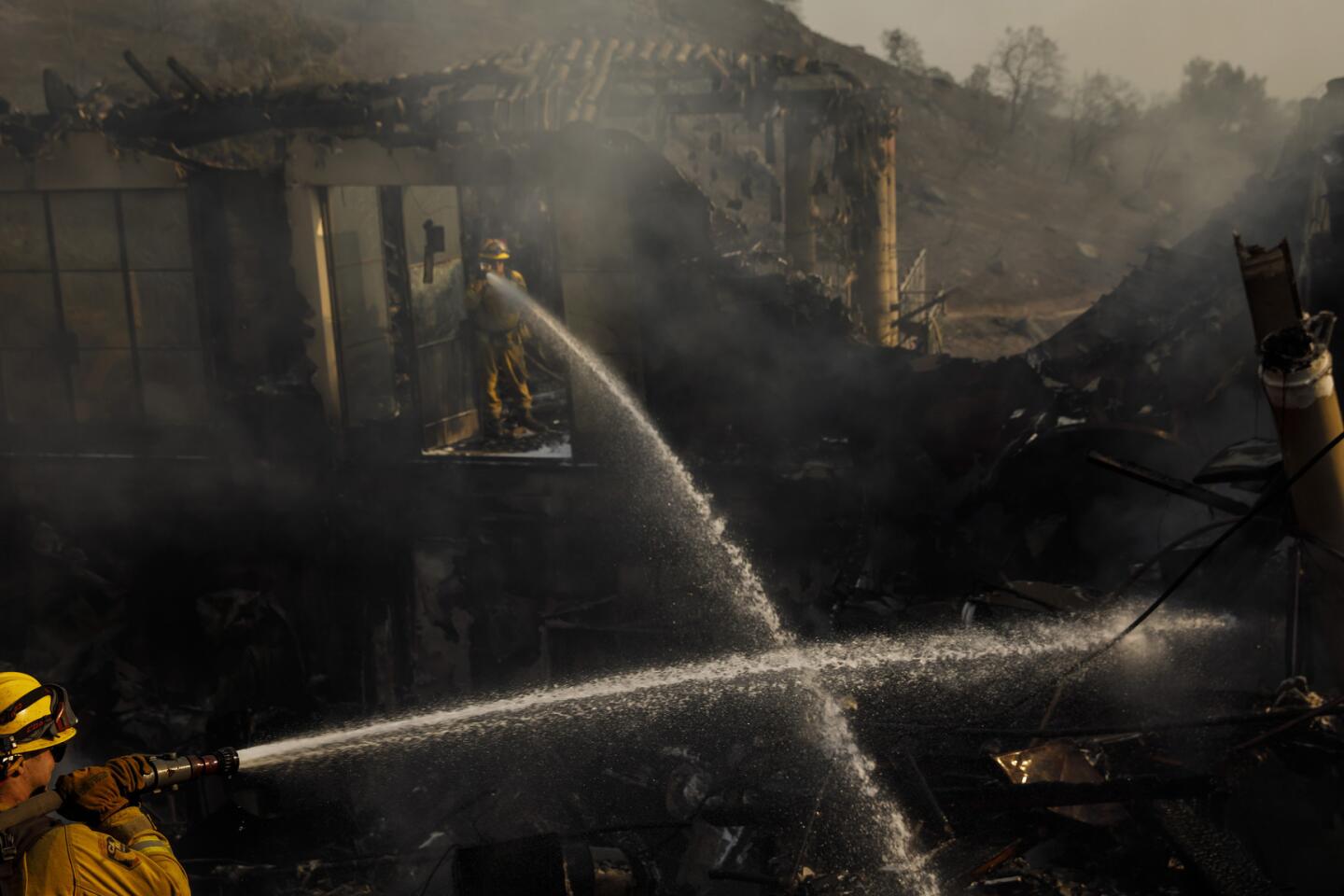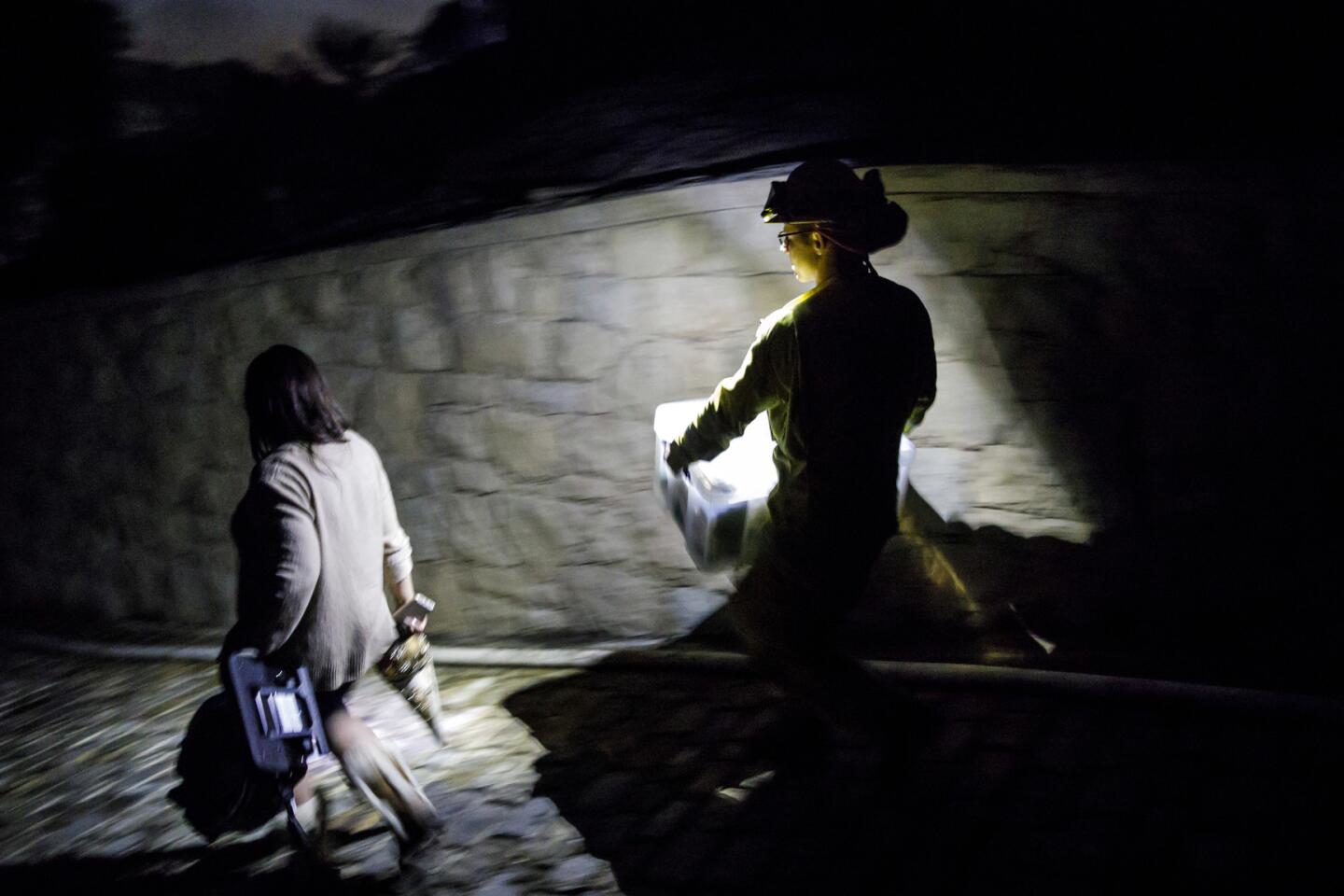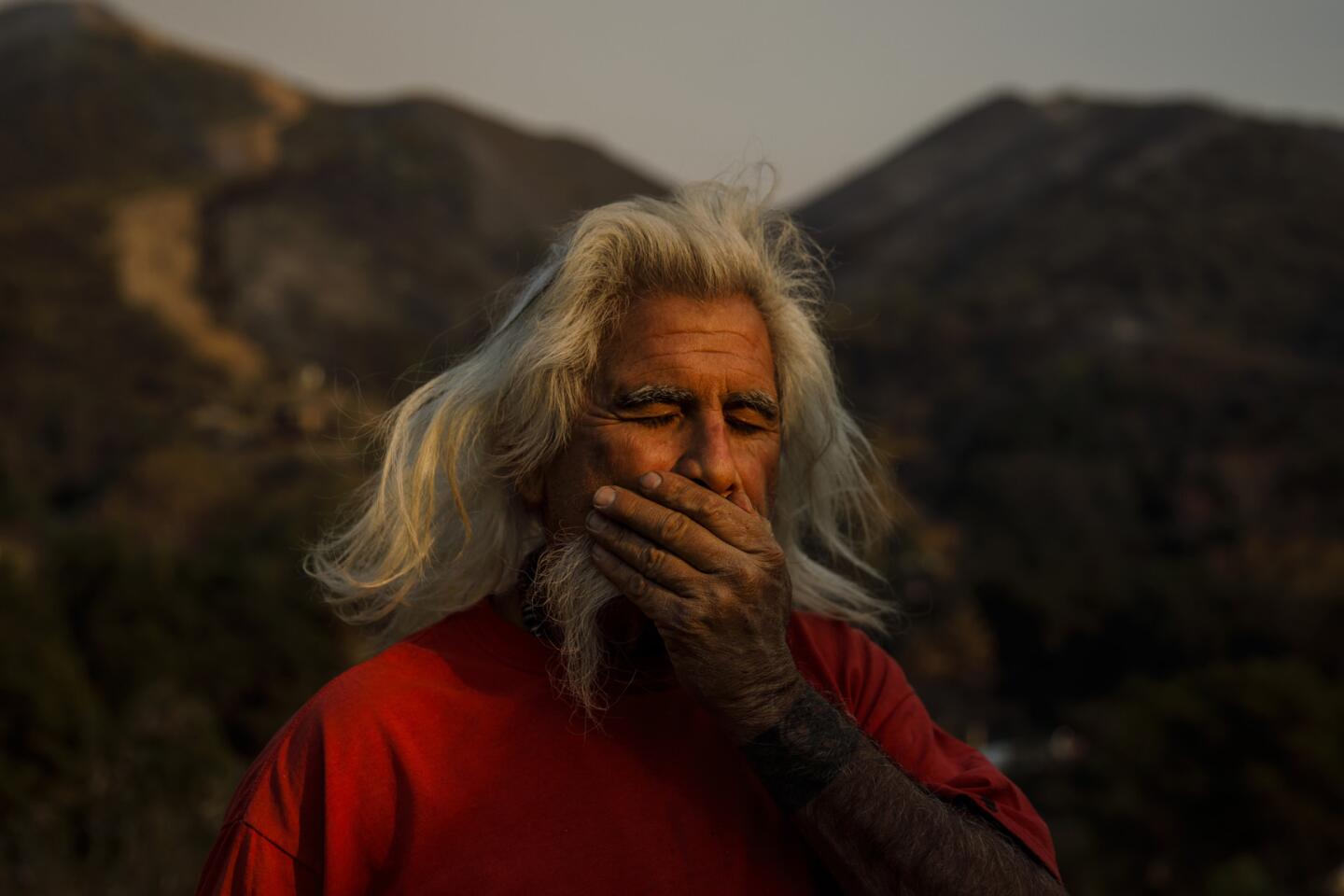Fierce fight along Santa Barbara coast as fire threat eases in Ventura
Reporting from Montecito — Robin Willis sprayed her garden hose at the eaves of her backyard patio, soaking the wooden beams with water.
Authorities had evacuated her Montecito neighborhood two days earlier as the Thomas fire neared, but the 68-year-old and her brother, who lives across the street, had since returned and now refused to leave.
“Our family has been here since the 1920s. This is family, our genealogy. This is our roots,” she said Tuesday. “You do what you can do. If things happen where it doesn’t survive, you’ve got a conscience that you’ve done your best.”
They were among a smattering of defiant holdouts who sought to protect their homes as fire crews entered their second week in the fierce fight against the Thomas fire. The blaze grew nearly 2,000 acres after dawn, scorching a total of 236,000 acres of land in Ventura and Santa Barbara counties since igniting Dec. 4.
Update: Thomas fire has now scorched 237,500 acres »
By Tuesday evening, authorities said they had “turned a corner” in fighting the blaze along its eastern flank in Ventura County. Winds were relatively calm and evacuations were lifted in the Lake Casitas area with the fire 25% contained, but officials warned that stronger winds may return Thursday or Friday.
A short drive uphill and east of Willis’ home, firefighters were stationed on dirt roads colored with flame retardant, trail heads and the stone driveways of mansions in the wealthy coastal enclave.
Heavy smoke prevented helicopter crews from conducting long water drops over Carpinteria, Summerland and Montecito, but hand crews and bulldozers focused on digging fire lines ahead of the western front of the fire.
Firefighters sped along the winding passes in ATVs while others trekked up the roads on foot to scout out where the fire was moving.
The night before, calm winds allowed firefighters to stage their own burn operation, intentionally setting fire to some brush near homes to get rid of fuel that could feed an uncontrolled blaze if winds pick up later this week. Dramatic flames subsequently engulfed the hills behind Carpinteria High School.
“Firefighters can burn that fuel on their own terms,” said Matthew Chambers, an engineer with the Sequoia National Forest and spokesman for the agencies working the Thomas fire.
Overnight crews also saved some mountainside homes from flames that tore through nearby Toro and Romero canyons. Since the fire started, more than 700 homes have been destroyed, along with two apartment buildings, two mixed-use buildings, a dozen businesses and more than 180 other small buildings, authorities said.
As the fire fight continued, California fire officials offered a hint as to what may have ignited the Thomas and other destructive blazes that tore across Southern California last week.
It will probably take months for fire officials to determine the cause of the fires, but state officials have notified Southern California Edison that the utility’s equipment is under investigation. Power lines downed by high winds have been the cause of major brush fires in the past.
“The investigations now include locations beyond those identified last week as the apparent origin of these fires,” the power company said in a statement. “SCE believes the investigations now include the possible role of its facilities.”
Earlier, the utility had said that based on the apparent origin of the Thomas and Creek fires, “and the performance of SCE’s system, SCE has no indication that the company’s facilities were a source of these fires.”
As a precaution last week, the utility shut off power temporarily to parts of Riverside County during high winds.
Though the cause of the devastating Tubbs fire in Santa Rosa is still under investigation, numerous residents who lost homes have sued Pacific Gas & Electric, alleging power lines downed by the winds sparked the blaze. PG&E has suggested the fire might have been caused by third-party power lines not owned by the utility.
In October, the state Public Utilities Commission ordered PG&E to preserve evidence, including failed poles and conductors that were replaced as power was restored after the fire. Terrie Prosper, a spokeswoman for the regulatory agency, would not say whether a similar directive was sent to Edison, but said utilities “are already required to preserve evidence under existing rules and regulations.”
As of Tuesday, Edison said it was finishing restoring equipment damaged in the Liberty, Rye and Creek fires — replacing more than 300 poles with 200 more waiting.
Back in Montecito, Willis was showering the flower bed and grass in her garden when her neighbor came by to talk. His voice trembled with emotion as he and Willis compared notes on the fire history in the area and rumors of looters.
Apparently, a caretaker at La Casa de Maria, an interfaith retreat center just up the road, chased off an intruder Monday, the neighbor said. He heard that firefighters were letting the Thomas fire reach the old burn scars of previous blazes in hopes it would slow the fire’s progress.
The neighbor said his biggest fear was his towering oaks igniting from a wayward ember and setting ablaze his home, which is made of wood. Willis reassured him that she’d help wet his house and the one next door just in case.
“They’re doing the best they can but you don’t know,” she said. “You got to do what you can do.”
[email protected] | Twitter: @JosephSerna
[email protected] | Twitter: @paigestjohn
[email protected] | Twitter: @jpanzar
[email protected] | Twitter: @AleneTchek
Serna and Panzar reported from Santa Barbara County, St. John from Northern California and Tchekmedyian from Los Angeles.
ALSO
Fire at a homeless encampment sparked Bel-Air blaze that destroyed homes, officials say
Ornamental landscaping in celebrity-studded Montecito adds to fire danger
The inferno that won’t die: How the Thomas fire became a monster
More to Read
Sign up for Essential California
The most important California stories and recommendations in your inbox every morning.
You may occasionally receive promotional content from the Los Angeles Times.
